Pain
How to submit an article:
- Registered users can submit any published journal article that has a unique DOI (Digital Object Identifier) name or link to Research Hub.
- For example, you can paste the full DOI link:
https://doi.org/10.1109/5.771073or just the DOI name:10.1109/5.771073into the field above and click submit. - The person who is first to submit a valid article to Research Hub will forever be credited for it, and every article submission earns you +6 Research Points.
Related Topics
Published research studies are articles that present the findings of original research that has undergone a peer-review process and has been made publicly available in scholarly journals, books or other media.
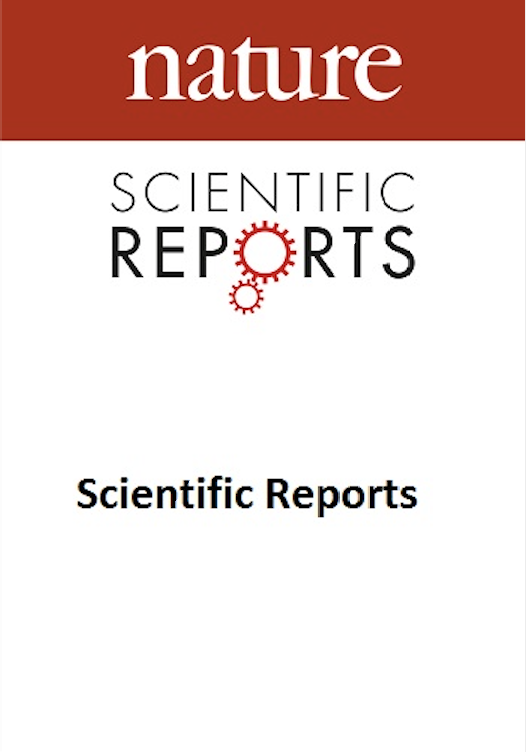
Comparison of Ziziphus jujube Mill. Syrup versus polyethylene glycol in children with functional constipation: a randomized clinical trial
2025 Jan 11 Scientific Reports Keihanian F, Maleknejad S, Saeidinia A, Soltanipour S, Pirooz A
Clinical Study Randomised Controlled Trial Children's Health Constipation JujubeJujube syrup presented improved results in treating pediatric functional constipation compared to polyethylene glycol, demonstrating a potentially effective and safe alternative treatment.
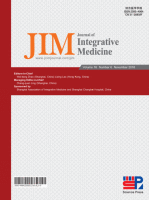
Short-term effects of cupping and scraping therapy for chronic nonspecific low-back pain: A prospective, multicenter randomized trial
2024 Jan Journal of Integrative Medicine He J, Tu X, Yin Z, Mu H, Luo M, Chen X, et al.
The combination of traditional Chinese medicine (TCM) therapy with cupping and scraping using a medicated balm demonstrated superior effectiveness compared to NSAID therapy with topical plasters in reducing pain intensity, improving TCM symptoms, and enhancing quality of life for patients with CNLBP. Additionally, TCM plus physiotherapy exhibited more stable and long-lasting therapeutic effects without adverse reactions.
Randomised Controlled Trial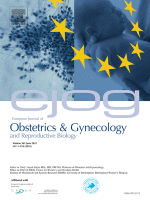
Acupuncture modification treatment for female sexual dysfunction: A meta-analysis
2023 Dec European Journal of Obstetrics & Gynecology and Reproductive Biology Ning S, Liu S, Chen X, Wang J
The meta-analysis included four studies with a total of 178 participants, and the results indicated a significant difference in Female Sexual Function Index (FSFI) scores between the acupuncture group and the control group. Specifically, acupuncture treatment showed improvement in sexual desire and sexual arousal. However, there was no statistically significant difference in the scales of lubrication, orgasm, satisfaction, and pain between the two groups. The conclusion suggests that acupuncture can have a positive impact on overall FSFI scores, sexual desire, and sexual arousal for FSD but does not significantly improve other aspects of female sexual dysfunction. The study recommends including more randomized controlled trials (RCTs) with a larger number of participants for more reliable conclusions in the future.
Systematic Review Meta-Analysis Acupuncture Female Sexual Dysfunction
Acupuncture Treatment for Restless Legs Syndrome: A Review of Randomized Controlled Trials
2023 Nov 30 Journal of Acupuncture Research Chae GE, Kim HW, Jo HJ, Koh A, Lee YJ, Choi JE, et al.
Acupuncture demonstrates significant improvements in overall health, treatment efficacy rate, sleep quality, and quality of life indicators for patients with RLS, as evidenced by reductions in pain severity (VAS scores), RLS symptoms severity (IRLSRS scores), and absence of significant side effects. Acupuncture is suggested as an effective and safe treatment for RLS, though further large-scale RCT studies are warranted to validate these findings.
Review Article Acupuncture Restless Legs Syndrome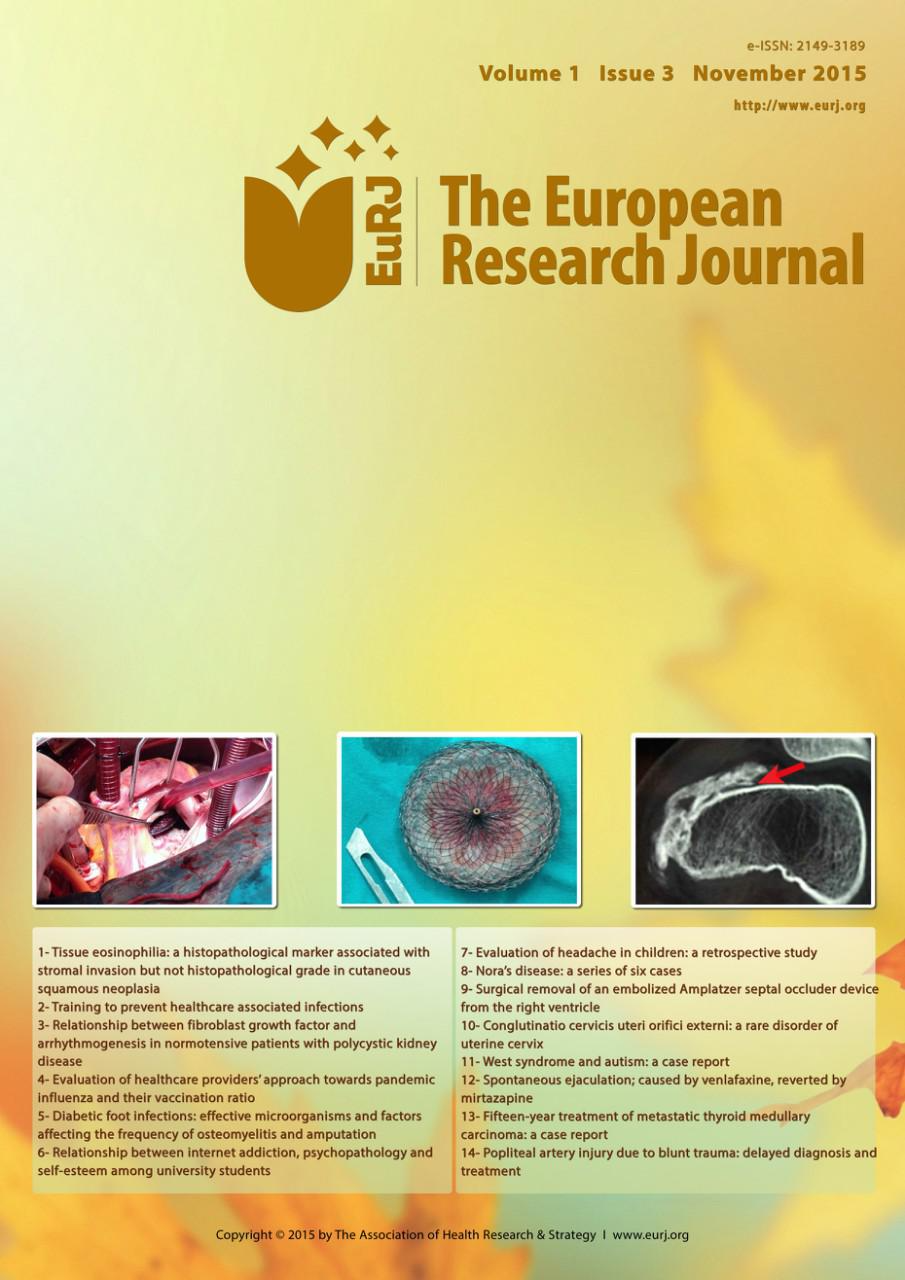
The effect of aromatherapy on labor pain, duration of labor, anxiety and Apgar score outcome: a systematic review and meta-analysis
2023 Sep 04 The European Research Journal YILDIZ KARAAHMET A, BİLGİÇ F
Aromatherapy during childbirth significantly reduces labor pain and duration in the latent, active, and transition phases and decreases anxiety in the active and transition phases.
Meta-Analysis Systematic Review Aromatherapy Anxiety Labour PainResearch insights are moderated by the Research Hub team and offer an at-a-glance overview of interesting research findings.

2025 Scientific Reports
Jujube syrup presented improved results in treating pediatric functional constipation compared to polyethylene glycol, demonstrating a potentially effective and safe alternative treatment.
Clinical Study Children's Health Constipation Jujube
Comparison of Ziziphus jujube Mill. Syrup versus polyethylene glycol in children with functional constipation: a randomized clinical trial
Keihanian F, Maleknejad S, Saeidinia A, Soltanipour S, Pirooz A

2023 Nutrients
Vitamin D supplementation significantly reduces pain levels in people suffering from primary dysmenorrhea.
Systematic Review Food Nutrients
Effect of Vitamin D Supplementation on Primary Dysmenorrhea: A Systematic Review and Meta-Analysis of Randomized Clinical Trials
Chen YC, Chiang YF, Lin YJ, Huang KC, Chen HY, Hamdy NM, et al.

2023 Bioscientia Medicina : Journal of Biomedicine and Translational Research
Dark chocolate decreases the severity of menstrual pain in female hospital employees.
Randomised Controlled Trial Dark Chocolate Period Pain
The Effect of Giving Dark Chocolate on Reducing Menstrual Pain in Primary Dysmenorrhoea in Employees of Cabangbungin General Hospital, Bekasi Regency in 2023
Sa’idah SN, Maulida Lathifah , Evita Anindya Bestari
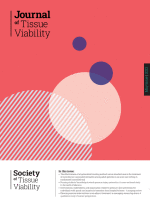
2023 Journal of Tissue Viability
Honey dressing significantly promotes healing and reduces recovery time in managing diabetic foot ulcers.
Systematic Review Diabetic Foot Ulcer Honey Wound Healing
Use of honey in diabetic foot ulcer: Systematic review and meta-analysis
Yildiz Karadeniz E, Kaplan Serin E
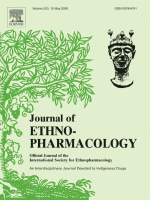
2023 Journal of Ethnopharmacology
Gui Zhi Fu Ling Wan significantly reduced menstrual pain in primary dysmenorrhea patients with heat-burning blood-stasis syndrome, without notable adverse effects.
Randomised Controlled Trial Period Pain
Effect of Guizhi Fuling Wan in primary dysmenorrhea: A randomized controlled trial
Luo Y, Mao P, Chen P, Li C, Fu X, Zhuang M
Review Articles
Review articles summarise and critically evaluate the current state of research on a specific topic or field by synthesising multiple primary research studies.

Acupuncture modification treatment for female sexual dysfunction: A meta-analysis
2023 Dec European Journal of Obstetrics & Gynecology and Reproductive Biology Ning S, Liu S, Chen X, Wang J
The meta-analysis included four studies with a total of 178 participants, and the results indicated a significant difference in Female Sexual Function Index (FSFI) scores between the acupuncture group and the control group. Specifically, acupuncture treatment showed improvement in sexual desire and sexual arousal. However, there was no statistically significant difference in the scales of lubrication, orgasm, satisfaction, and pain between the two groups. The conclusion suggests that acupuncture can have a positive impact on overall FSFI scores, sexual desire, and sexual arousal for FSD but does not significantly improve other aspects of female sexual dysfunction. The study recommends including more randomized controlled trials (RCTs) with a larger number of participants for more reliable conclusions in the future.
Systematic Review Meta-Analysis Acupuncture Female Sexual Dysfunction
Acupuncture Treatment for Restless Legs Syndrome: A Review of Randomized Controlled Trials
2023 Nov 30 Journal of Acupuncture Research Chae GE, Kim HW, Jo HJ, Koh A, Lee YJ, Choi JE, et al.
Acupuncture demonstrates significant improvements in overall health, treatment efficacy rate, sleep quality, and quality of life indicators for patients with RLS, as evidenced by reductions in pain severity (VAS scores), RLS symptoms severity (IRLSRS scores), and absence of significant side effects. Acupuncture is suggested as an effective and safe treatment for RLS, though further large-scale RCT studies are warranted to validate these findings.
Review Article Acupuncture Restless Legs Syndrome
The effect of aromatherapy on labor pain, duration of labor, anxiety and Apgar score outcome: a systematic review and meta-analysis
2023 Sep 04 The European Research Journal YILDIZ KARAAHMET A, BİLGİÇ F
Aromatherapy during childbirth significantly reduces labor pain and duration in the latent, active, and transition phases and decreases anxiety in the active and transition phases.
Meta-Analysis Systematic Review Aromatherapy Anxiety Labour Pain
Effect of Vitamin D Supplementation on Primary Dysmenorrhea: A Systematic Review and Meta-Analysis of Randomized Clinical Trials
2023 Jun 21 Nutrients Chen YC, Chiang YF, Lin YJ, Huang KC, Chen HY, Hamdy NM, et al.
Systematic Review Meta-Analysis Food NutrientsVitamin D supplementation significantly reduces pain levels in people suffering from primary dysmenorrhea.

Use of honey in diabetic foot ulcer: Systematic review and meta-analysis
2023 May Journal of Tissue Viability Yildiz Karadeniz E, Kaplan Serin E
Systematic Review Meta-Analysis Diabetic Foot Ulcer Honey Wound HealingHoney dressing significantly promotes healing and reduces recovery time in managing diabetic foot ulcers.
Clinical Trials
Clinical trials are research studies that involve people and are conducted to evaluate the safety and efficacy of new treatments or interventions, such as drugs, medical devices, or behavioural therapies.

Comparison of Ziziphus jujube Mill. Syrup versus polyethylene glycol in children with functional constipation: a randomized clinical trial
2025 Jan 11 Scientific Reports Keihanian F, Maleknejad S, Saeidinia A, Soltanipour S, Pirooz A
Clinical Study Randomised Controlled Trial Children's Health Constipation JujubeJujube syrup presented improved results in treating pediatric functional constipation compared to polyethylene glycol, demonstrating a potentially effective and safe alternative treatment.

Short-term effects of cupping and scraping therapy for chronic nonspecific low-back pain: A prospective, multicenter randomized trial
2024 Jan Journal of Integrative Medicine He J, Tu X, Yin Z, Mu H, Luo M, Chen X, et al.
The combination of traditional Chinese medicine (TCM) therapy with cupping and scraping using a medicated balm demonstrated superior effectiveness compared to NSAID therapy with topical plasters in reducing pain intensity, improving TCM symptoms, and enhancing quality of life for patients with CNLBP. Additionally, TCM plus physiotherapy exhibited more stable and long-lasting therapeutic effects without adverse reactions.
Randomised Controlled Trial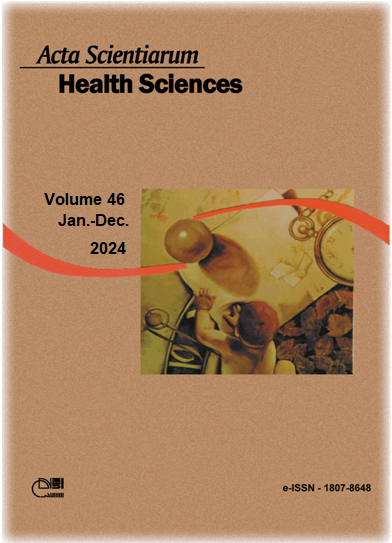
Acupuncture effects on pain and health status in women with fibromyalgia: a randomized clinical trial
2023 Aug 08 Acta Scientiarum. Health Sciences Baelz GU, Silva AMV, Duarte BSL, Steffen EL, Silva JEP, Signori LU
Acupuncture, compared to sham acupuncture, significantly reduced pain by 16% (p<0.001) and improved health status by 21% (p<0.001) in women with fibromyalgia. The improvement in health status is attributed to increased ability to work and go out, and reduced pain, fatigue, tiredness, and depression.
Randomised Controlled Trial
The Effect of Giving Dark Chocolate on Reducing Menstrual Pain in Primary Dysmenorrhoea in Employees of Cabangbungin General Hospital, Bekasi Regency in 2023
2023 Jun 08 Bioscientia Medicina : Journal of Biomedicine and Translational Research Sa’idah SN, Maulida Lathifah , Evita Anindya Bestari
Randomised Controlled Trial Period Pain Dark ChocolateDark chocolate decreases the severity of menstrual pain in female hospital employees.

Effect of Guizhi Fuling Wan in primary dysmenorrhea: A randomized controlled trial
2023 May Journal of Ethnopharmacology Luo Y, Mao P, Chen P, Li C, Fu X, Zhuang M
Randomised Controlled Trial Period PainGui Zhi Fu Ling Wan significantly reduced menstrual pain in primary dysmenorrhea patients with heat-burning blood-stasis syndrome, without notable adverse effects.
Study Protocols
Published study protocols are detailed plans that outline the objectives, methodology, statistical analyses, and organisation of a research study that have been made publicly available for others to review and use as a reference.

Acupuncture for treating chronic spinal pain: A systematic review and meta-analysis protocol
2022 Dec 02 Medicine Li X, Han X, Li K
This review will provide directions and recommendations for future research and clinical practices of acupuncture for treating chronic spinal pain.
Study Protocol
Efficacy and safety of Chinese herbal medicine Danggui Sini decoction for knee osteoarthritis: A protocol for systematic review and meta-analysis
2022 Nov 18 Medicine Zhou X, Xiang KM, Li J, Yang G, Wang Y, Xia H, et al.
This study will compare the effects of DGSND and any other different methods on patients with KOA to provide high-quality, evidence-based clinical recommendations. The study provides a trustable clinical foundation for DGSND in the treatment of KOA.
Study Protocol Dang Gui Si Ni Decoction Chinese Herbal Medicine
Efficacy and safety of Chinese herbal medicine Buzhong Yiqi decoction for postmenopausal women with osteoporosis: A protocol for systematic review and meta-analysis
2022 Nov 11 Medicine Xiang K, Yang J, Liu W, Chen L, Hou H, Zhou X, et al.
This study will evaluate the efficacy and safety of BZYQD in the treatment of PMOP, to provide high-quality, evidence-based clinical recommendations. It will also provide a trustable clinical foundation for BZYQD in the treatment of PMOP.
Study Protocol Bu Zhong Yi Qi Tang Chinese Herbal Medicine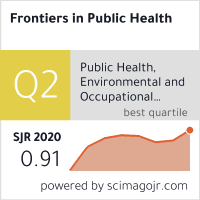
Assessing the efficacy and safety of Juan Bi Tang for dialysis-related myofascial pain in the fistula arm: Study protocol for a randomized cross-over trial
2022 Aug 19 Frontiers in Public Health Hsu YT, Ng HY, Chen YH, Huang YC, Lee YY, Tsai MY
The results of the study will provide convincing evidence on the use of Juan Bi Tang (JBT) as an adjuvant treatment for dialysis-related myofascial pain.
Study Protocol Myofascial pain Juan Bi Tang
Effectiveness and safety of warm needling therapy combined with electroacupuncture for patients with plantar heel pain syndrome
2022 May 27 Medicine Wu J, Lu J, Jiang C
We initially hypothesized that combination therapy would lead to better treatment outcomes.
Study Protocol Heel PainPresentation Slides

Clinical Study
Jujube syrup presented improved results in treating pediatric functional constipation compared to polyethylene glycol, demonstrating a potentially effective and safe alternative treatment.
Keihanian F, Maleknejad S, Saeidinia A, Soltanipour S, Pirooz A

Systematic Review
Vitamin D supplementation significantly reduces pain levels in people suffering from primary dysmenorrhea.
Chen YC, Chiang YF, Lin YJ, Huang KC, Chen HY, Hamdy NM, Huang TC, Chang HY, Shieh TM, Huang YJ, Hsia SM

Randomised Controlled Trial
Dark chocolate decreases the severity of menstrual pain in female hospital employees.
Sa’idah SN, Maulida Lathifah , Evita Anindya Bestari

Systematic Review
Honey dressing significantly promotes healing and reduces recovery time in managing diabetic foot ulcers.
Yildiz Karadeniz E, Kaplan Serin E

Randomised Controlled Trial
Gui Zhi Fu Ling Wan significantly reduced menstrual pain in primary dysmenorrhea patients with heat-burning blood-stasis syndrome, without notable adverse effects.
Luo Y, Mao P, Chen P, Li C, Fu X, Zhuang M

Systematic Review
Tuina therapy for chronic low back pain indicates potential pain relief and reduced disability but doesn't improve quality of life
Yang J, Zhou X, Ma Q, Woods JT, Mohabbat AB, Do A, Brault JS, Jensen MA, Shin KM, Shen L, Zhao C, Cheong KCP, He K, Guo Y, Chen Z, Tang S, Tang Y, Tan CIC, Chen J, Bauer BA

Systematic Review
Tuina massage for chronic low back pain reveals promising results amid methodological considerations
Yang J, Zhou X, Ma Q, Woods JT, Mohabbat AB, Do A, Brault JS, Jensen MA, Shin KM, Shen L, Zhao C, Cheong KCP, He K, Guo Y, Chen Z, Tang S, Tang Y, Tan CIC, Chen J, Bauer BA

Randomised Controlled Trial
Cinnamon, ginger, and mint enhanced chocolates effectively reduce menstrual pain and improve blood iron levels without increasing body weight or negatively affecting cholesterol.
Shalaby, A, Moawad O, Mostafa M
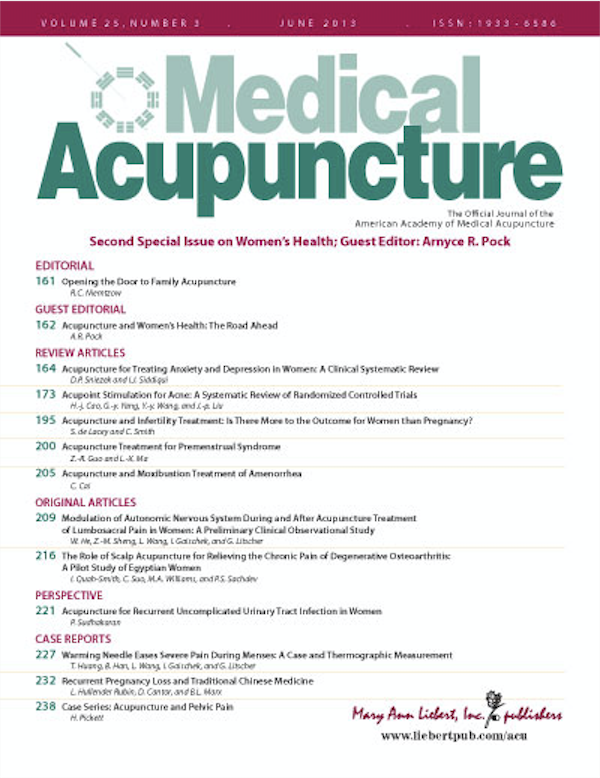
Randomised Controlled Trial
Acupuncture combined with a home-exercise program significantly reduces pain in patients suffering from plantar fasciopathy more than just a home exercise program.
Cagle SD, Covey C, Farrell J, Sharon DJ, Crawford P

Systematic Review
Acupuncture provides speedy and effective pain relief for renal colic, surpassing traditional drugs with fewer side effects suggesting its potential as a safe and efficient option for acute pain treatment
Hsiao-Tien Chen, Cheng-Feng Kuo, Chin-Chia Hsu, Li-Chun Lai, Ai-Chin Cheng, Cheuk-Kwan Sun and Kuo-Chuan Hung
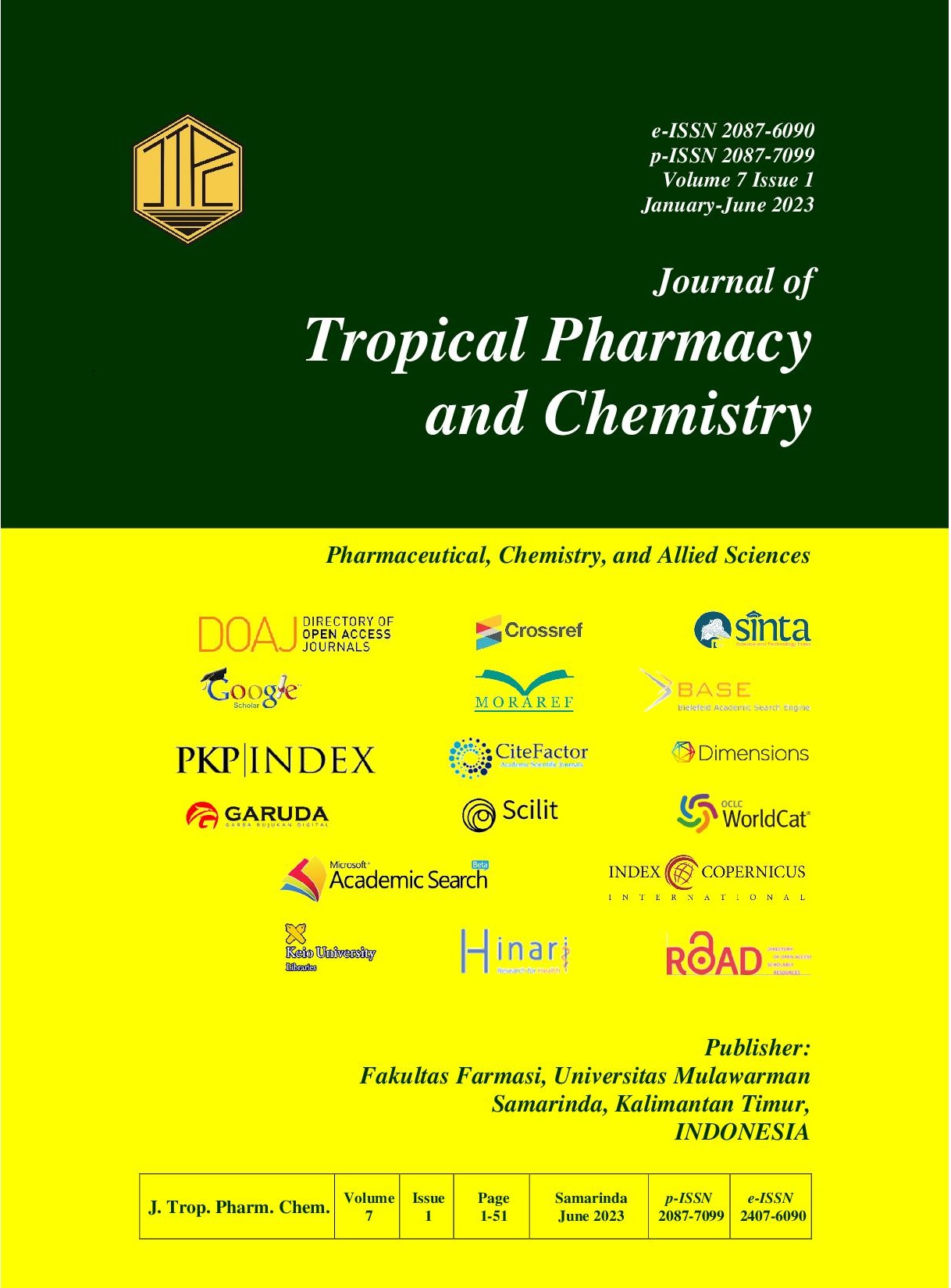
Randomised Controlled Trial
The combination of dark chocolate with herbs could be one of the therapies for period pain.
Azizah RNP, Anggreini P, Prasetya F

Randomised Controlled Trial
Auricular acupuncture relieved pain and decreased disability more effectively than physiotherapy for frozen shoulder treatment.
Hollisaz MT, Khatibi Aghda A, Asheghan M, Amanollahi A, Hashemi SE
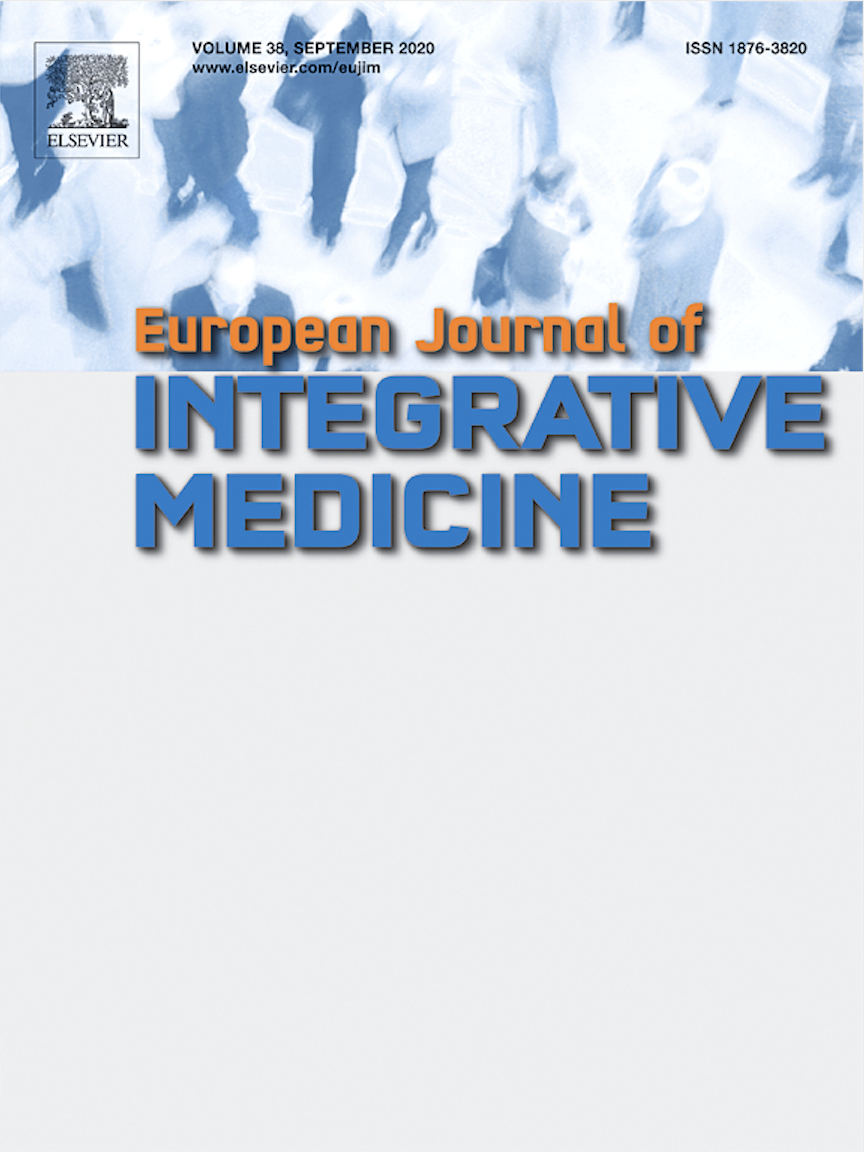
Randomised Controlled Trial
Both dark chocolate and music medicine significantly reduced menstrual pain and anxiety in young women with period pain.
Karakuş Selçuk A, Baysal E
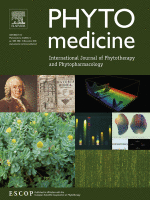
Systematic Review
Acupuncture shows positive effects on cancer-related issues; research calls for further exploration of acupuncture's efficacy and safety, especially for conditions like depression, offering further potential support for cancer survivors
Zhang X, Hou W, Pu F, Wang X, Wang Y, Yang M, Cheng K, Wang Y, Robinson N, Liu J
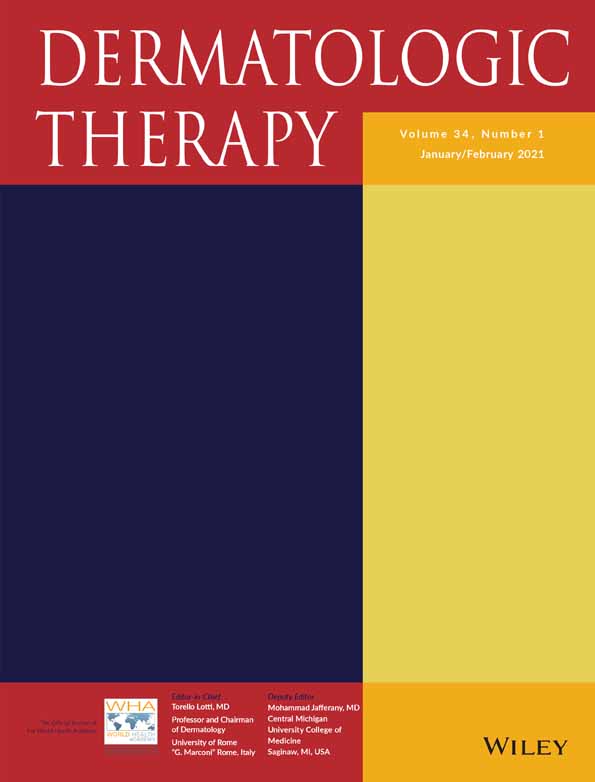
Systematic Review
Long Dan Xie Gan formula used as an adjuvant therapy may hasten skin healing, relieve pain symptoms, and prevent persistent pain in acute herpes zoster patients.
Zhang L, Duan A, Li Y, Feng J
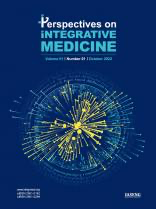
Practice Guideline
Acupuncture is safe and may be a cost-effective treatment for shoulder pain.
Birch S, Lee MS, Kim TH, Alraek T

Clinical Study
Acupuncture has shown potential in enhancing structural nerve regeneration in Chemotherapy-induced peripheral neuropathy, leading to subjective improvements and positive neurological findings.
Friedemann T, Kark E, Cao N, Klaßen M, Meyer-Hamme G, Greten JH, Rostock M, Buhlmann E, Zhao A, Schröder S

Randomised Controlled Trial
Chamomile sachets could be a viable alternate treatment for primary dysmenorrhea, as they've shown similar effects to mefenamic acid in reducing pain and bleeding.
Shabani F, Narenji F, Vakilian K, Zareian MA, Bozorgi M, Bioos S, Nejatbakhsh F

Systematic Review
Electroacupuncture may be more effective than manual acupuncture for managing frozen shoulder, with larger effect sizes in terms of pain, function, and response rate.
Heo JW, Jo JH, Lee JJ, Kang H, Choi TY, Lee MS, Kim JI
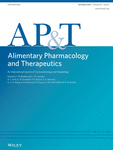
Systematic Review
Peppermint oil proved more effective than placebo in treating irritable bowel syndrome symptoms, but with an increased rate of adverse events.
Ingrosso MR, Ianiro G, Nee J, Lembo AJ, Moayyedi P, Black CJ, Ford AC

Randomised Controlled Trial
Inhalation and massage therapy with lavender essential oil significantly mitigates perceived labour pain in women.
Karatopuk S, Yarıcı F
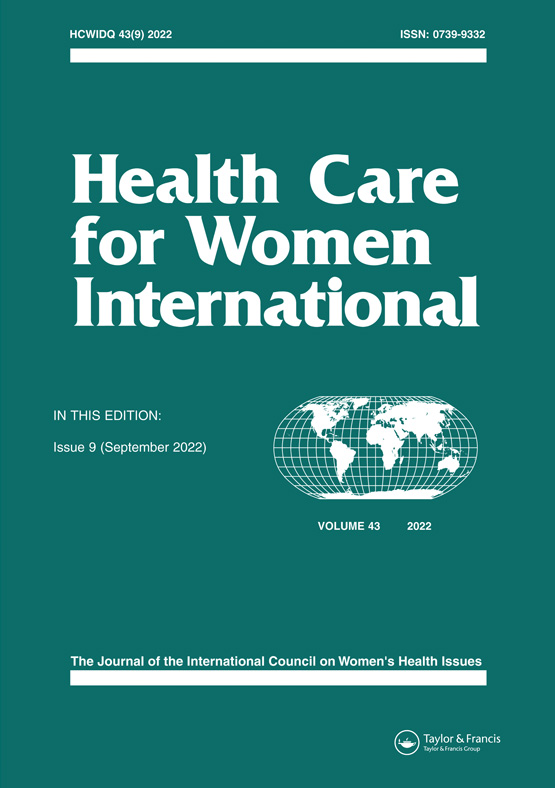
Systematic Review
Cold cabbage leaf application was effective in reducing breast pain.
Ozkaya M, Korukcu O
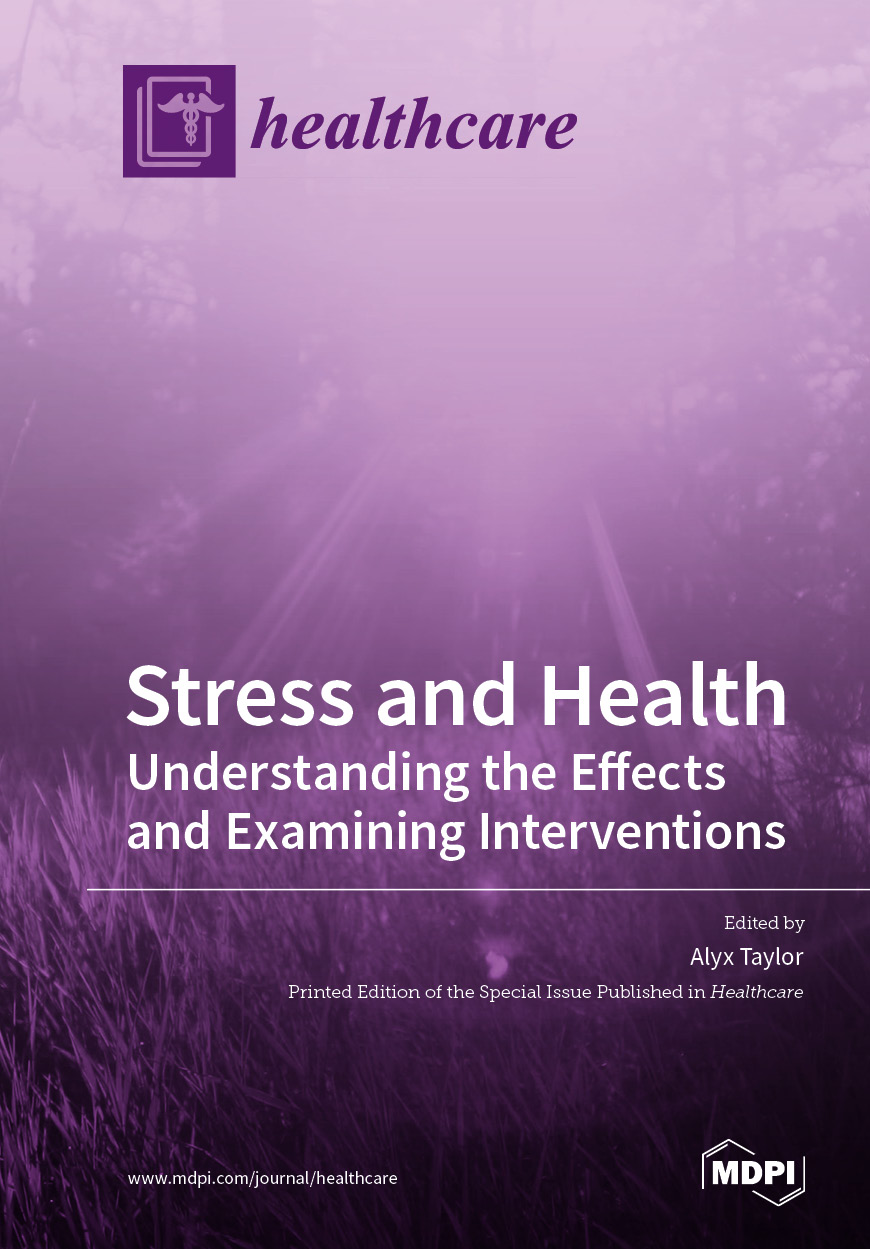
Systematic Review
Acupuncture showed a significant effect in the management of fibromyalgia patients. It reduced pain, depression, and enhanced quality of life.
Almutairi NM, Hilal FM, Bashawyah A, Dammas FA, Yamak Altinpulluk E, Hou JD, Lin JA, Varrassi G, Chang KV, Allam AES
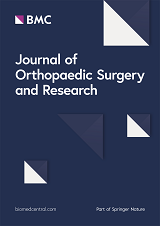
Systematic Review
Individualised acupuncture and standard acupuncture combined with TENS were the most effective protocols for the non-pharmacological management of chronic aspecific low back pain based on measures of pain and disability, compared to sham treatment.
Baroncini A, Maffulli N, Eschweiler J, Molsberger F, Klimuch A, Migliorini F
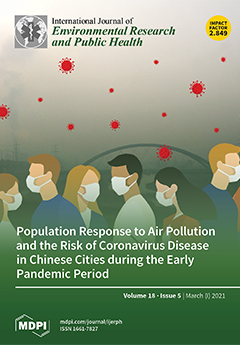
Systematic Review
Dietary strategies, such as caloric restriction and ketogenic diets, can alleviate chronic pain and enhance quality of life.
Cuevas-Cervera M, Perez-Montilla J, Gonzalez-Muñoz A, Garcia-Rios M, Navarro-Ledesma S
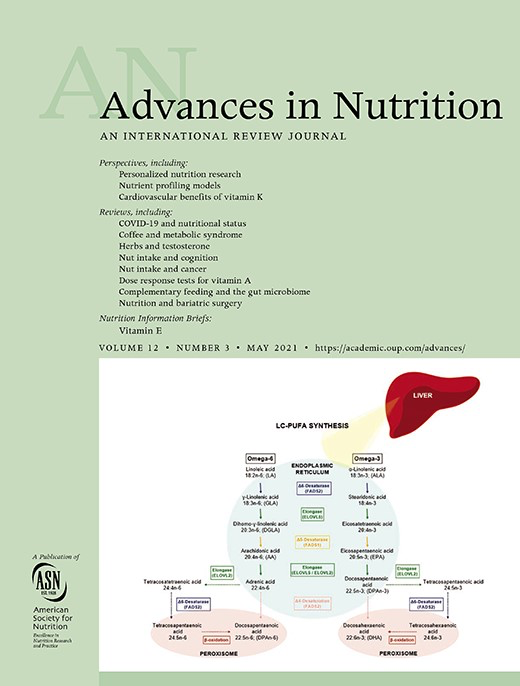
Review Article
Consuming kiwifruit, particularly the green variety, can effectively alleviate upper gastrointestinal symptoms like abdominal discomfort, pain, and indigestion.
Bayer SB, Frampton CM, Gearry RB, Barbara G

Acupuncture is a low-risk method that has the potential to enhance perioperative analgesia, decrease opioid requirement, and reduce unwanted side effects of anesthesia, surgery, and opioid administration such as nausea/vomiting.
Shah S, Godhardt L, Spofford C
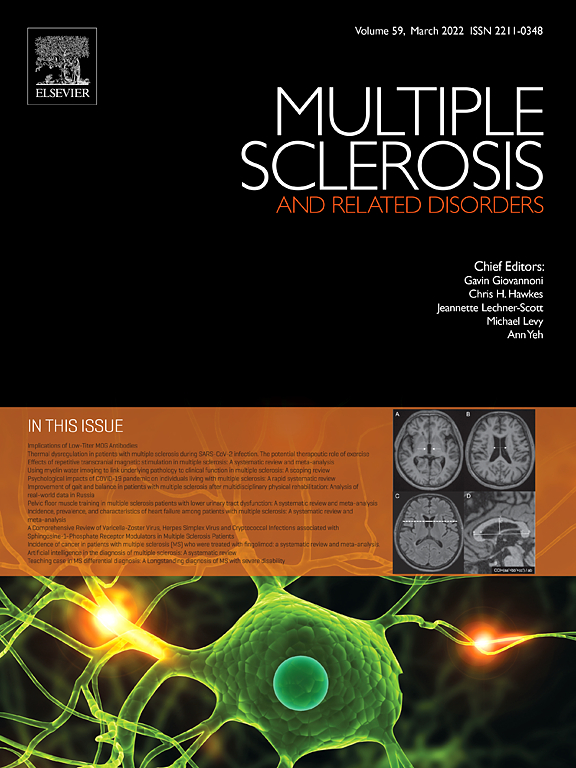
Review Article
Acupuncture, when used as an integrative therapy in conjunction with traditional treatments, significantly improves the quality of life in patients with Multiple Sclerosis.
Khodaie F, Abbasi N, Kazemi Motlagh AH, Zhao B, Naser Moghadasi A
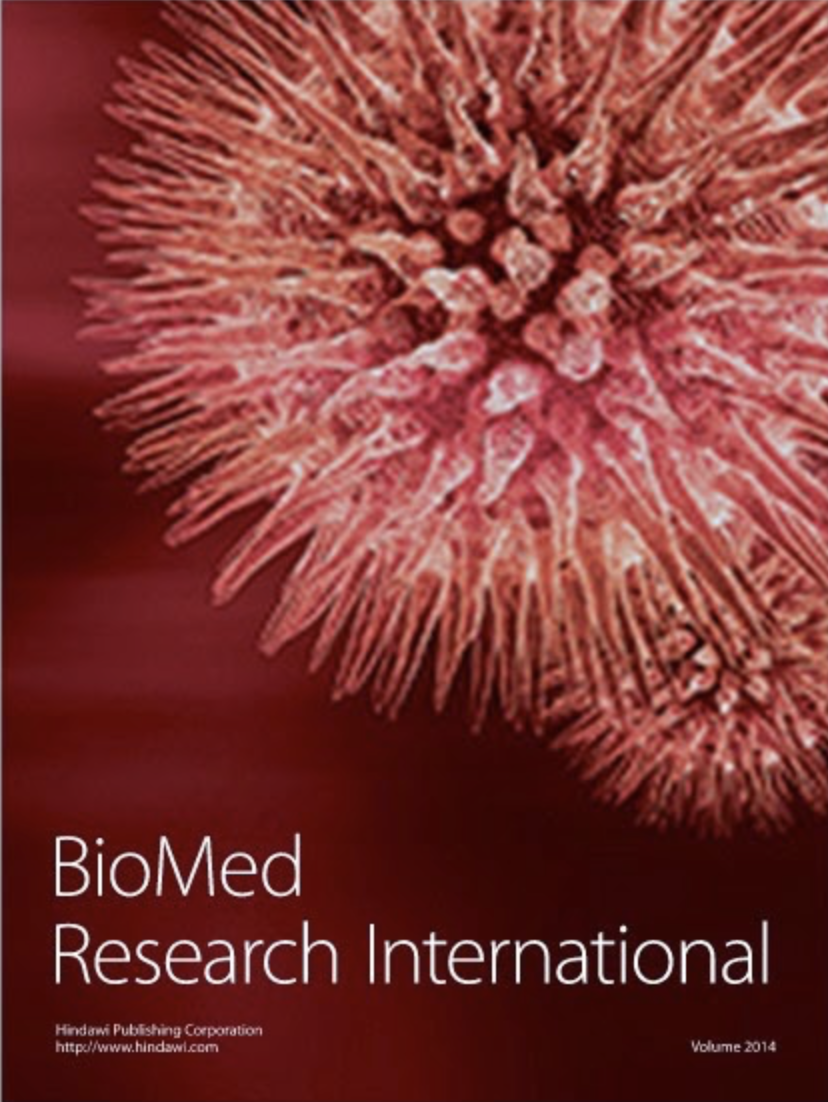
Systematic Review
Acupuncture can reduce pain and improve functional activities in patients with knee osteoarthritis, proving particularly beneficial for chronic sufferers and enhancing their quality of life.
Tian H, Huang L, Sun M, Xu G, He J, Zhou Z, Huang F, Liu Y, Liang F
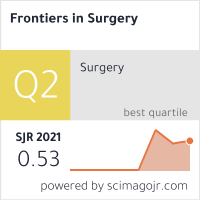
Systematic Review
Acupuncture, particularly electro-acupuncture, may alleviate post-hemorrhoidectomy pain at certain stages, but overall effectiveness remains inconclusive.
Chen H, Zhang W, Sun Y, Jiao R, Liu Z
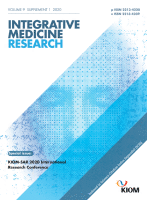
Systematic Review
Some complementary approaches, such as massage and herbal ointments, show promise in reducing postpartum pain.
Smith CA, Hill E, Denejkina A, Thornton C, Dahlen HG

Systematic Review
Traditional Chinese medicine, including acupuncture, can provide superior pain relief and faster recovery for HIV-related Herpes Zoster compared to regular drugs.
Jiang Y, Zheng RX, Yu ZY, Zhang XW, Li J, Lan HD, Qiao SY, Han M, Cao HJ, Robinson N, Liu JP
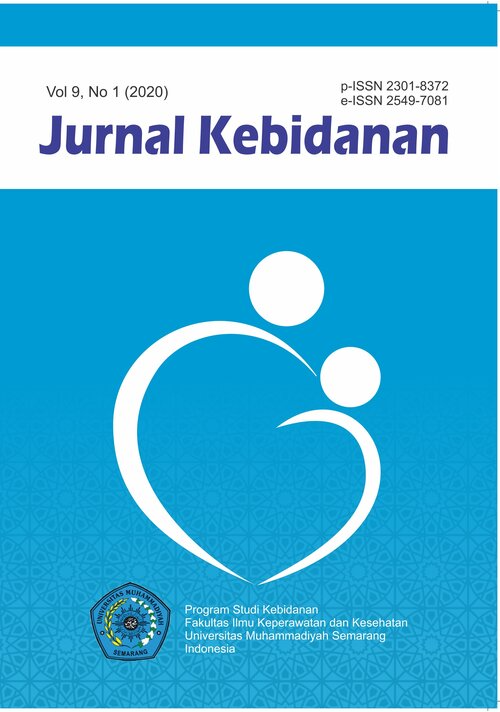
Clinical Study
Lavender aromatherapy is more effective in reducing pain intensity during active Phase I labor than lemon aromatherapy.
Lestari CI, Amilia R, Rospia ED
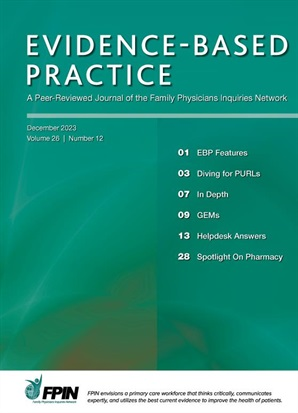
Randomised Controlled Trial
Chamomile was found to be less effective than mefenamic acid for relieving cyclic menstrual pain.
Alcaraz EM, Laumbach SG, Amico J

Systematic Review
Acupuncture may be effective and safe for short-term pain reduction and functional improvement in hand-and-wrist conditions.
Trinh K, Zhou F, Belski N, Deng J, Wong CY
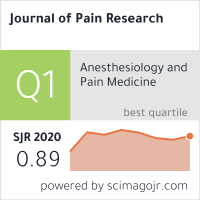
Systematic Review
Acupuncture is more effective than control treatment in alleviating pain and improving well-being in both the short- and long-term in patients with fibromyalgia.
Zheng C, Zhou T
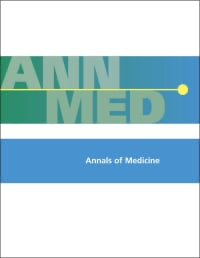
Network Pharmacology
The Gui Zhi-Shao Yao herb pair in traditional Chinese medicine potentially treats chronic pain, anxiety, and depression through interactions with nine key targets.
Pan HT, Xi ZQ, Wei XQ, Wang K
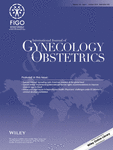
Systematic Review
Numerous complementary treatments have been used to alleviate the symptoms of endometriosis, but only acupuncture has demonstrated a significant improvement in outcomes.
Ticiana A.A. Mira, Mariana M. Buen, Murilo G. Borges, Daniela A. Yela, Cristina L. Benetti-Pinto
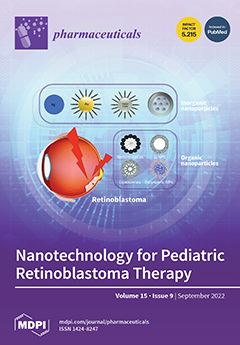
Randomised Controlled Trial
Medical-grade honey outperforms conventional treatment in healing cold sores, reducing healing time and alleviating associated symptoms like pain and itching.
Naik PP, Mossialos D, Wijk B, Novakova P, Wagener FADTG, Cremers NAJ

Systematic Review
Acupuncture displays potential as a safe and effective treatment for foot and ankle pain, providing pain relief and functional improvement.
Trinh K, Belski N, Zhou F, Kuhad A, Luk D, Youn E
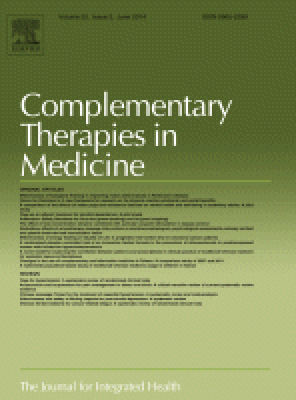
Systematic Review
Turmeric curcuminoids are associated with better pain relief than NSAIDs in knee osteoarthritis.
An-Fang Hsiao, Yi-Chieh Lien, I-Shiang Tzeng, Chien-Ting Liu, Sheng-Hsun Chou, Yi-Shiung Horng

Meta-Analysis
Anti-inflammatory diets can lead to significantly lower levels of pain than regular diets for those with rheumatoid arthritis.
Schönenberger KA, Schüpfer AC, Gloy VL, Hasler P, Stanga Z, Kaegi-Braun N, Reber E

Randomised Controlled Trial
Jiawei Danggui Beimu Kushen pills were shown to be effective in treating prostate cancer, improving patients' quality of life and potentially regulating serum PSA levels.
Zhao H, Ren Z, Wang G
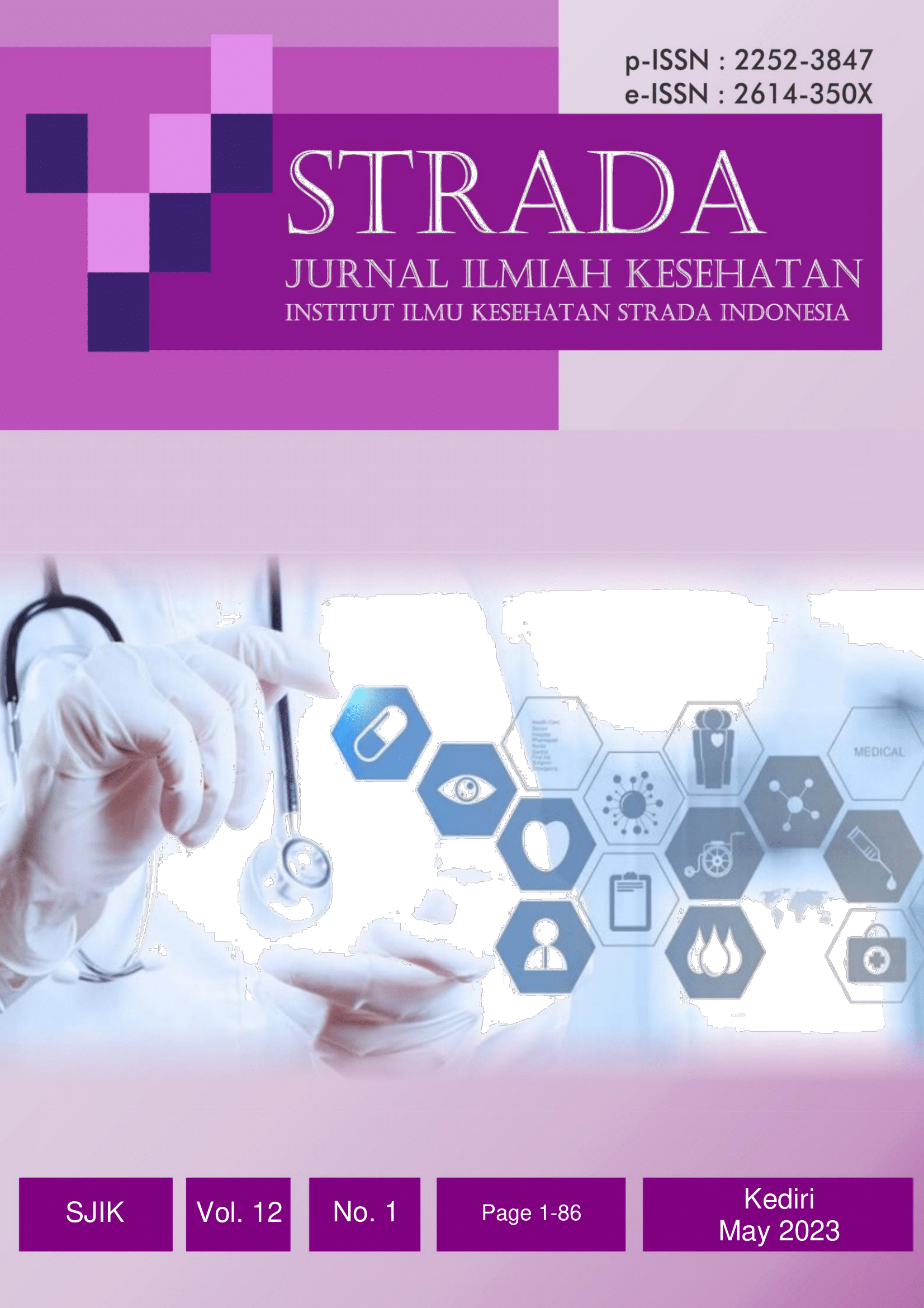
Cohort Study
Green coconut water was found to significantly reduce dysmenorrhea pain among adolescent girls.
Indrayani T, Fikria SH, Dinengsih S
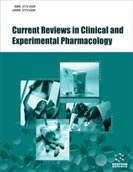
Randomised Controlled Trial
Inhalation of chamomile oil significantly reduces pain after cesarean section in first-time mothers, decreasing the need for analgesics.
Zardosht R, Basiri A, Sahebkar A, Emami SA
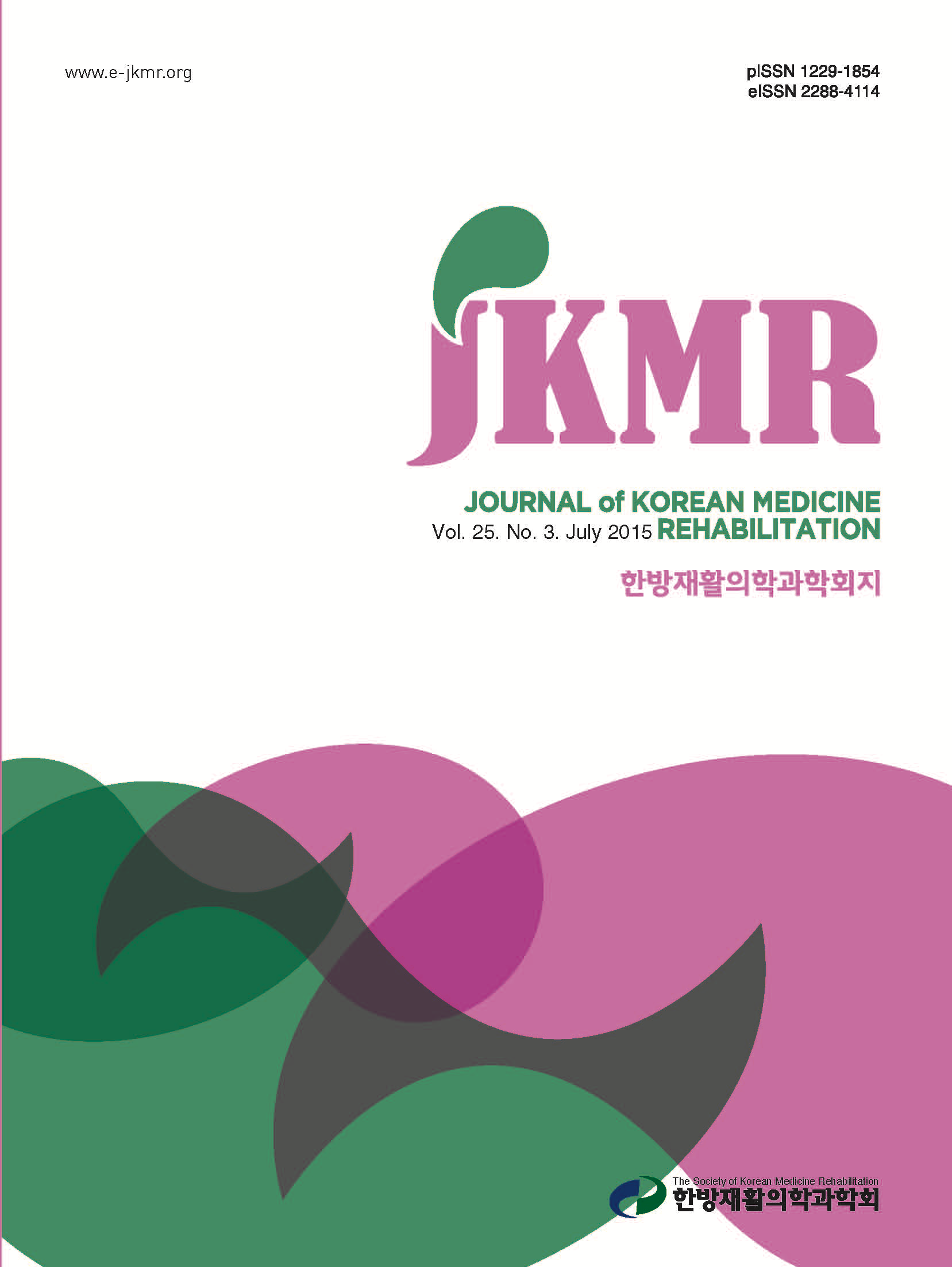
Systematic Review
Acupuncture appears to have positive effects in pain relief and functional recovery after rotator cuff surgery.
Lee SJ, Ko YM, Park JS, Park TY, Lee JH, Cho JH, Hwang EH, Kim KJ, Choi MY, Song YK
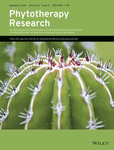
Randomised Controlled Trial
Curcumin supplements have comparable effects to placebos in alleviating symptoms of Premenstrual Syndrome and dysmenorrhea in young women.
Bahrami A, Zarban A, Rezapour H, Agha Amini Fashami A, Ferns GA
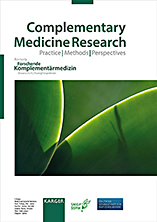
Systematic Review
Acupuncture treatment offers significant benefits for herpes zoster patients, including reduced pain intensity and faster healing times.
Cui Y, Wang F, Li H, Zhang X, Zhao X, Wang D
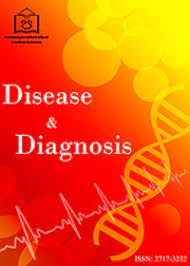
Review Article
Lavender aromatherapy, whether administered through massage or inhalation, appears effective in reducing active phase labor pain.
Hatami Rad R
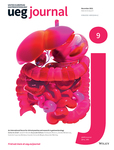
Randomised Controlled Trial
Small-intestinal release peppermint oil is a cost-effective treatment for Irritable Bowel Syndrome, yielding modest quality of life gains and relieving abdominal pain.
Weerts ZZRM, Essers BAB, Jonkers DMAE, Willems JIA, Janssen DJPA, Witteman BJM, Clemens CHM, Westendorp A, Masclee AAM, Keszthelyi D
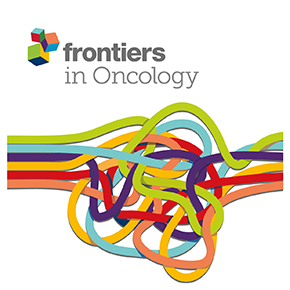
Systematic Review
Current evidence suggests that acupuncture might improve breast cancer treatment-related symptoms measured with patient-reported outcomes including quality of life, pain, fatigue, hot flashes, sleep disturbance and anxiety.
Zhang Y, Sun Y, Li D, Liu X, Fang C, Yang C, Luo T, Lu H, Li H, Zhang H, Liang Q, Wu J, Huang L, Xu R, Ren L, Chen Q

Systematic Review
Meta-analysis results showed that Tuina was superior to drugs for improving the effectiveness rate for tension-type headache.
Fan Z, Di A, Huang F, Zhao S, Qiu M, Wu C, Huang C, Guo R, Tian Q, Wu S

Study Protocol
Gynoclear™, a formulation of six herbs, could potentially reduce the severity and duration of pain and other symptoms associated with endometriosis.
Armour M, Al-Dabbas MA, Ee C, Smith CA, Ussher J, Arentz S, Lawson K, Abbott J
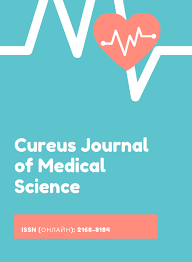
Systematic Review
Acupuncture seems to be an effective method for the long-term reduction of the intensity of headache pain in patients with tension-type headaches.
Kolokotsios S, Stamouli A, Koukoulithras I, Plexousakis M, Drousia G
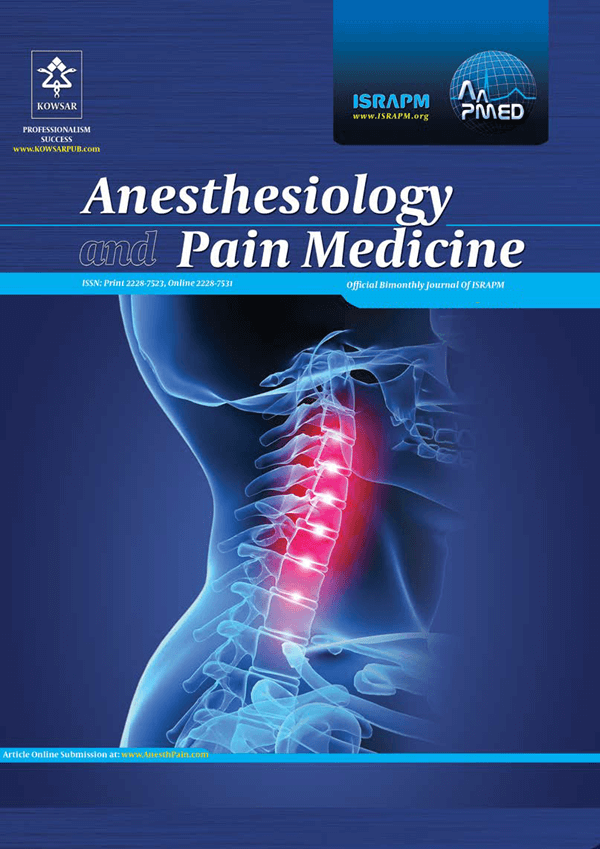
Review Article
Acupuncture is shown to be a beneficial supplementary treatment for chronic abdominal pain, improving patients' quality of life and cutting healthcare costs.
Berger AA, Liu Y, Jin K, Kaneb A, Welschmeyer A, Cornett EM, Kaye AD, Imani F, Khademi SH, Varrassi G, Viswanath O, Urits I

Review Article
Acupuncture has shown promise as a complementary approach in treating chronic abdominal pain, providing symptom relief and improving quality of life.
Berger AA, Liu Y, Jin K, Kaneb A, Welschmeyer A, Cornett EM, Kaye AD, Imani F, Khademi SH, Varrassi G, Viswanath O, Urits I

Systematic Review
Moderate-quality evidence revealed an association between acupressure and greater pain relief compared with physical therapy.
Tao Li , Xiaohui Li ,Fan Huang , Qiang Tian , Z. Y. Fan , and S. Wu
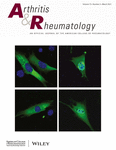
Randomised Controlled Trial
Intensive electroacupuncture appears to reduce pain and improve function in knee osteoarthritis patients more effectively than sham acupuncture.
Tu JF, Yang JW, Shi GX, Yu ZS, Li JL, Lin LL, Du YZ, Yu XG, Hu H, Liu ZS, Jia CS, Wang LQ, Zhao JJ, Wang J, Wang T, Wang Y, Wang TQ, Zhang N, Zou X, Wang Y, Shao JK, Liu CZ
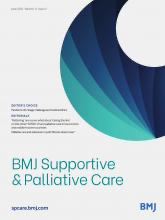
Systematic Review
Acupuncture may be an effective and safe treatment associated with pain reduction in the palliative care of patients with cancer.
Yang J, Wahner-Roedler DL, Zhou X, et al.
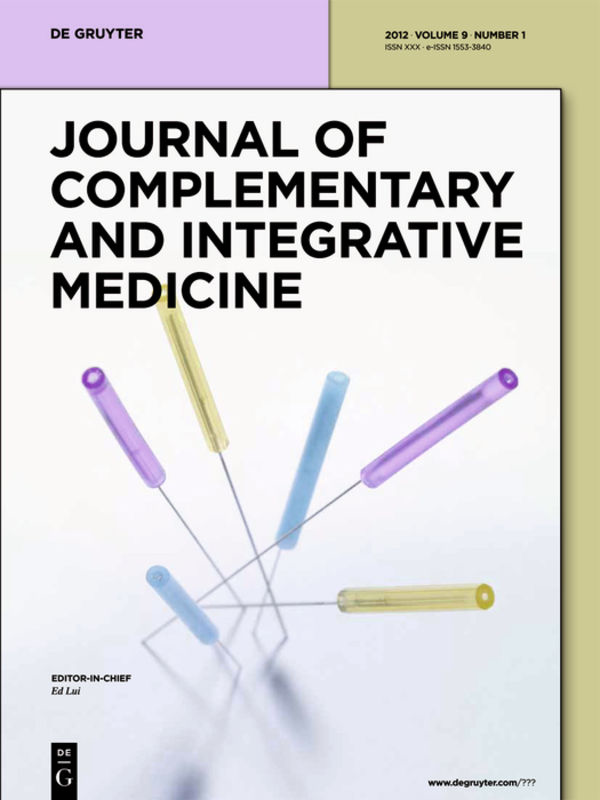
Systematic Review
Fennel intake decreased significantly the intensity of dysmenorrhea compared to placebo and was similar to non-steroidal anti-inflammatory drugs such as mefenamic acid.
Hadis Shahrahmani, Masumeh Ghazanfarpour, Nasim Shahrahmani, Fatemeh Abdi, Robert D. E. Sewell and Mahmoud Rafieian-Kopaei

Treatments according to traditional Chinese medicine syndrome differentiation can provide patients with individualized treatments for chronic fatigue syndrome.
Zhang X, Wang M, Zhou S

Meta-Analysis
Acupuncture at ST25 appears to be more effective than lactulose in the treatment of functional constipation.
Li P, Luo Y, Wang Q, Shu S, Chen K, Yu D, Fan C.
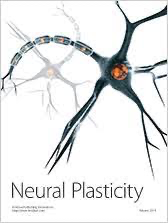
Systematic Review
Acupuncture treatment can improve the clinical effectiveness of diarrhea-predominant irritable bowel syndrome or functional diarrhea.
Jianbo Guo, Xiaoxiao Xing, Jiani Wu, Hui Zhang, Yongen Yun, Zongshi Qin, and Qingyong He

Systematic Review
Lavender can decrease the severity of labor pain, which could influence health policy makers and gynecologists.
Kazeminia M, Abdi A, Vaisi-Raygani A, Jalali R, Shohaimi S, Daneshkhah A, Salari N, Mohammadi M

Systematic Review
Fennel is as effective as conventional drug therapies in alleviating pain in primary dysmenorrhea.
Hye Won Lee ,Lin Ang ,Myeong Soo Lee ,Zainab Alimoradi and Eunseop Kim

Systematic Review
Acupuncture could be safe and effective for pain reduction, restoring shoulder function, and restoring flexion range of motion for frozen shoulder patients in the short term and midterm.
Ben-Arie E, Kao PY, Lee YC, Ho WC, Chou LW, Liu HP

Systematic Review
The majority of studies concluded the superiority of short-term analgesic effects over various controls and suggested that acupuncture may be efficacious for chronic musculoskeletal pain.
Zhang YJ, Wang C

Randomised Controlled Trial
The use of ginger, chamomile, and honey significantly diminished the intensity of dysmenorrhea pain as compared to the use of mefenamic acid.
Shabani F, Chabra A, Vakilian K, Bioos S, Bozorgi M, Ayati MH, Nejatbakhsh F

Randomised Controlled Trial
Inhalation aromatherapy using Damask rose and lavender essential oils can reduce anxiety and pain in women after they have had a cesarean section.
Abbasijahromi A, Hojati H, Nikooei S, Jahromi HK, Dowlatkhah HR, Zarean V, Farzaneh M, Kalavani A

Systematic Review
Lavender demonstrates significant benefits for pain relief and episiotomy wound healing in postpartum.
Abedian S, Abedi P, Jahanfar S, Iravani M, Zahedian M
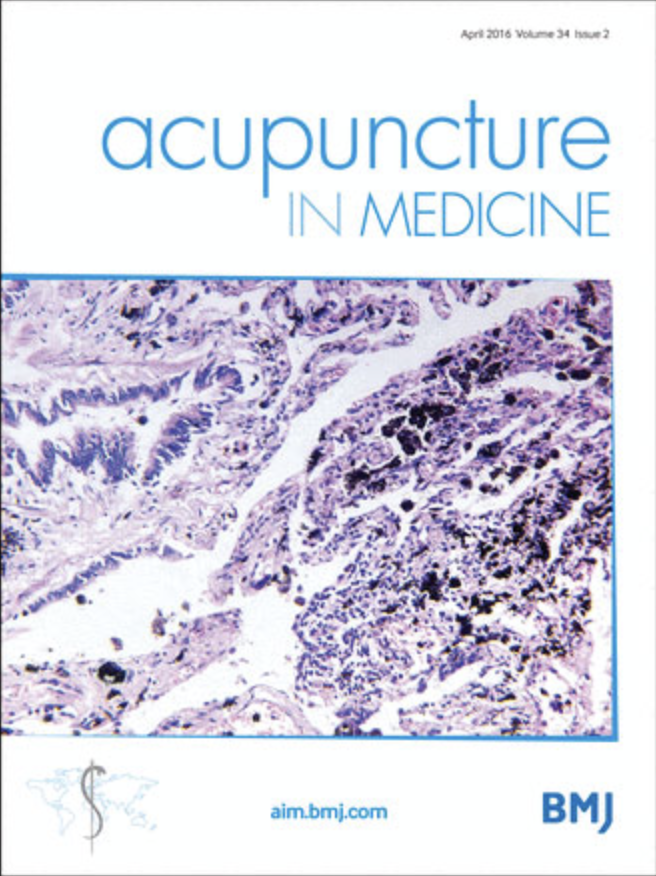
Systematic Review
Acupressure offers promising pain relief and shorter labor duration during childbirth.
Chen Y, Xiang XY, Chin KHR, Gao J, Wu J, Lao L, Chen H

Randomised Controlled Trial
Electroacupuncture and manual acupuncture show similar effectiveness in relieving plantar heel pain syndrome with no significant difference between the two modalities.
Wang W, Liu Y, Jiao R, Liu S, Zhao J, Liu Z

Systematic Review
Auricular acupressure combined with acupuncture showed the highest effectiveness in reducing post-hemorrhoidectomy pain.
Qin D, Zhang AM, Chen M, Tang TC, Du YJ, Zheng H

Review Article
Acupuncture therapy seems to decrease frequency and intensity of trigeminal neuralgia pain episodes, alone or in combination with gold standard medications.
Aquino I, Nascimento M, Aquino T, Kosminsky M
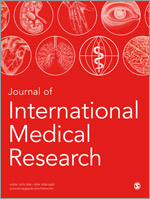
Systematic Review
For primary dysmenorrhoea, cinnamon/fennel/ginger effectively reduced pain intensity, and cinnamon shortened the duration of pain.
Xu Y, Yang Q, Wang X

Systematic Review
Compared with the sham acupuncture group, the acupuncture group had greater improvements in the frequency of migraine attacks, VAS score, and treatment efficiency.
Ou MQ, Fan WH, Sun FR, Jie WX, Lin MJ, Cai YJ, Liang SY, Yu YS, Li MH, Cui LL, Zhou HH

Systematic Review
Our meta-analysis revealed small-to-moderate analgesic effects of acupuncture on delayed onset muscle soreness, especially on day 1 by comparing the acupuncture and control groups.
Chang WD, Chang NJ, Lin HY, Wu JH
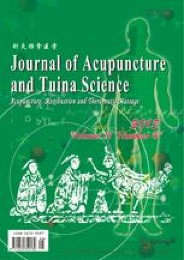
Systematic Review
In the treatment of knee osteoarthritis, the acupuncture group had significant advantages over sham acupuncture or no-acupuncture groups in relieving pain and improving physical function.
Wang, Tt., Liu, Y., Ning, Zy. et al.

Systematic Review
In the treatment of chronic pain with depression, acupuncture could not only achieve better clinical efficacy, but also have higher safety compared with conventional mediation therapy.
Yan B, Zhu S, Wang Y, Da G, Tian G

Systematic Review
Acupuncture appears to be the least expensive therapeutic modality to deliver long-term in the management of trigeminal neuralgia, and our analysis indicated that it was less stressful to patients than pharmacotherapy or surgery.
Edwards, J. W., & Shaw, V.

Systematic Review
Acupuncture appears more effective than pharmacotherapy or surgery in the management of trigeminal neuralgia.
Edwards, J. W., & Shaw, V.
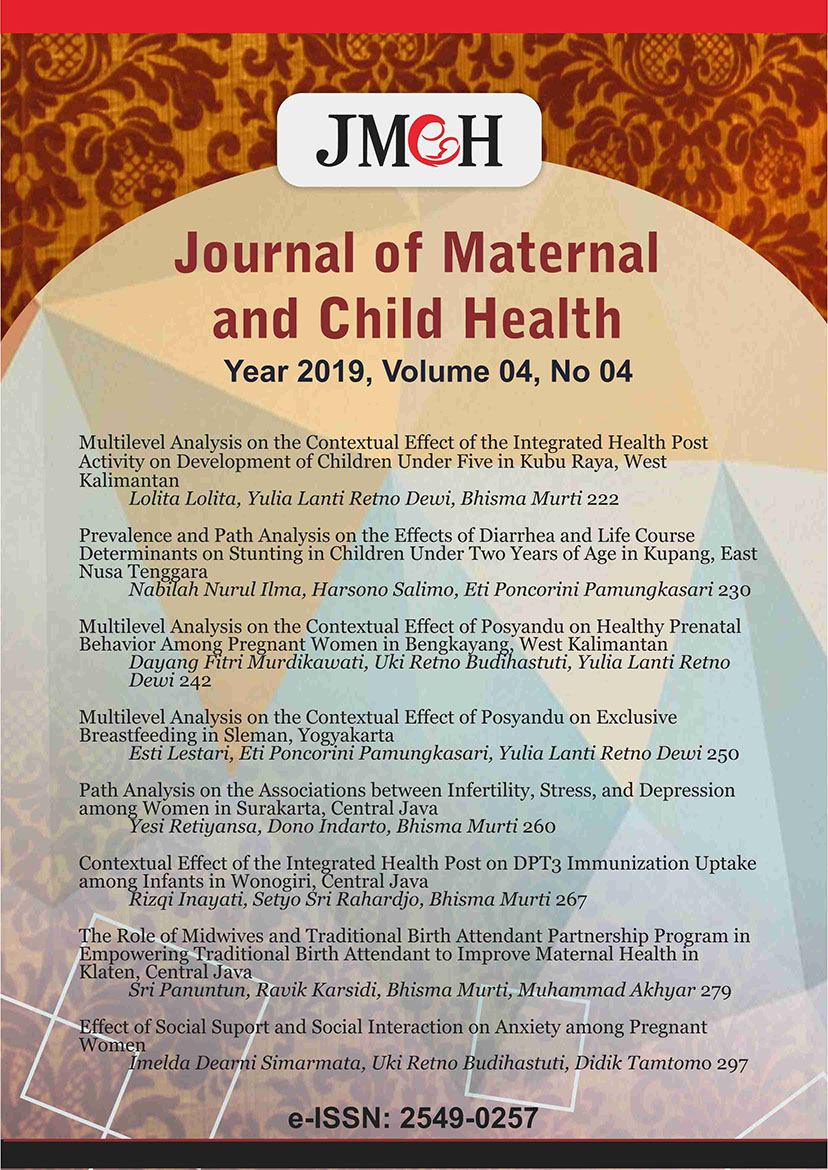
Meta-Analysis
Acupuncture therapy can affect pain reduction in dysmenorrhea patients.
Novitasari, E., Soemanto, R., & Prasetya, H.

Review Article
Ginger, through various methods, exhibits promising pain reduction effects for conditions such as dysmenorrhea, muscle soreness, osteoarthritis, low back pain, and migraines.
Rondanelli M, Fossari F, Vecchio V, Gasparri C, Peroni G, Spadaccini D, Riva A, Petrangolini G, Iannello G, Nichetti M, Infantino V, Perna S
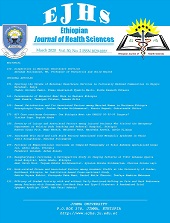
Systematic Review
Aromatherapy, specifically with lavender essential oil, can effectively alleviate maternal anxiety and labor pain.
Mahbubeh Tabatabaeichehr , Hamed Mortazavi
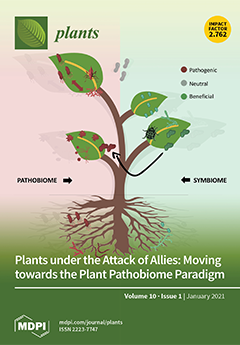
Review Article
Pomegranate, due to its polyphenols, flavonoids and fatty acids, exhibits significant pain-relieving effects and could potentially be used as a treatment for various types of pain.
Guerrero-Solano JA, Jaramillo-Morales OA, Velázquez-González C, De la O-Arciniega M, Castañeda-Ovando A, Betanzos-Cabrera G, Bautista M
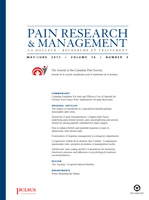
Systematic Review
Acupuncture reduced more headache days and the times of using painkiller and was more effective in reducing the frequency and degree of headache than western medicine and sham acupuncture.
Li YX, Xiao XL, Zhong DL, Luo LJ, Yang H, Zhou J, He MX, Shi LH, Li J, Zheng H, Jin RJ
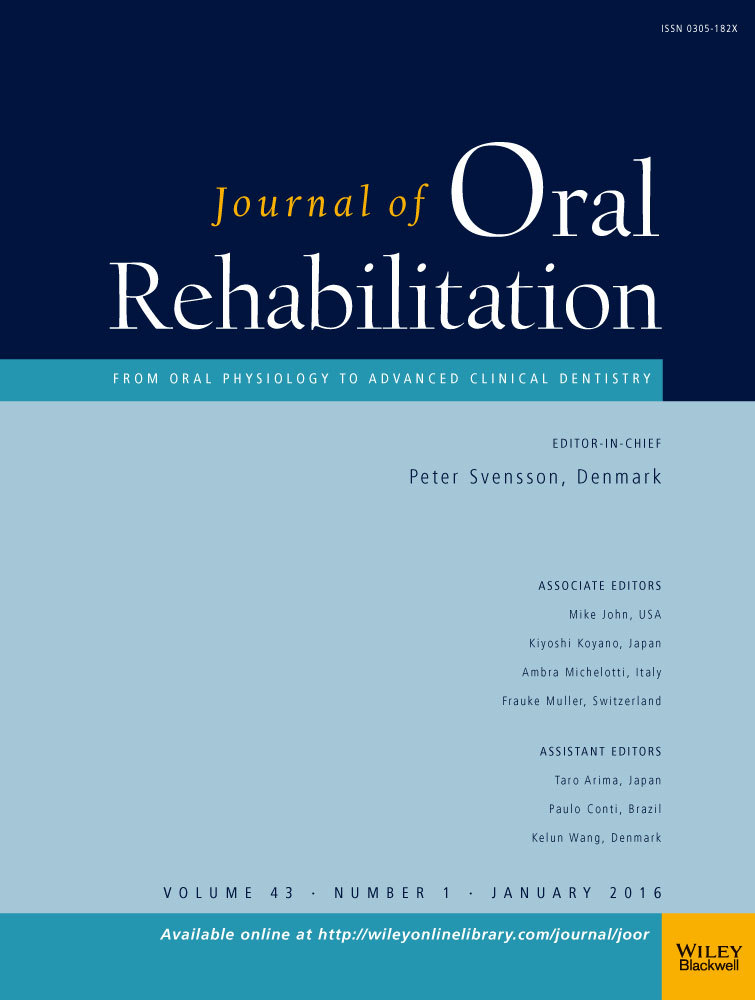
Randomised Controlled Trial
Acupuncture, regardless of whether on specific or non-specific points, substantially decreases non-chronic pain in patients suffering from Temporomandibular Disorders.
Şen S, Orhan G, Sertel S, Schmitter M, Schindler HJ, Lux CJ, Giannakopoulos NN

Systematic Review
Acupuncture appears to be an effective and safe method to alleviate persistent myofascial head and neck pain.
Farag AM, Malacarne A, Pagni SE, Maloney GE.

Systematic Review
Acupuncture and acupressure for labor pain.
Caroline A Smith,Carmel T Collins,Kate M Levett,Mike Armour,Hannah G Dahlen,Aidan L Tan,Bita Mesgarpour
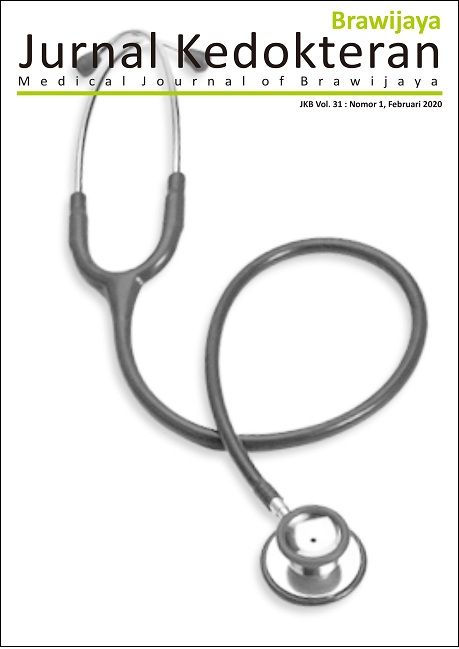
Randomised Controlled Trial
Consuming 330 ml of green coconut water can be an effective non-pharmacological approach to alleviate dysmenorrhea pain.
Nugroho FA, Putri OM, Sariati Y
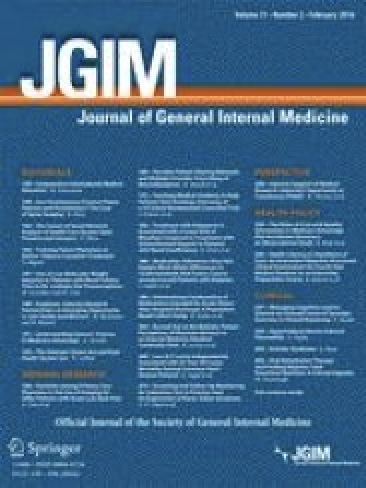
Randomised Controlled Trial
Both individual and group acupuncture therapy delivered in primary care settings reduced chronic pain and improved physical function at 12 weeks.
McKee MD, Nielsen A, Anderson B, Chuang E, Connolly M, Gao Q, Gil EN, Lechuga C, Kim M, Naqvi H, Kligler B

Randomised Controlled Trial
Electroacupuncture might provide stronger impact on knee osteoarthritis than manual acupuncture, though both methods are safe and feasible treatments.
Wang TQ, Li YT, Wang LQ, Shi GX, Tu JF, Yang JW, Hou YQ, Lin LL, Sun N, Zhao JJ, Hou HK, Liu CZ

Randomised Controlled Trial
The combination of ginger and chamomile was as effective as mefenamic acid in managing dysmenorrhea pain and more efficient in reducing related symptoms.
Shabani F, Zareian MA

Randomised Controlled Trial
Group acupuncture was noninferior to individual acupuncture for treating cancer pain and was superior in many health outcomes. Group acupuncture is more cost-effective for alleviating cancer pain and should be considered for implementation trials.
Erica Nicole Reed, Jessa Landmann, Devesh Oberoi, Katherine-Ann L. Piedalue, Peter Faris, Linda E. Carlson
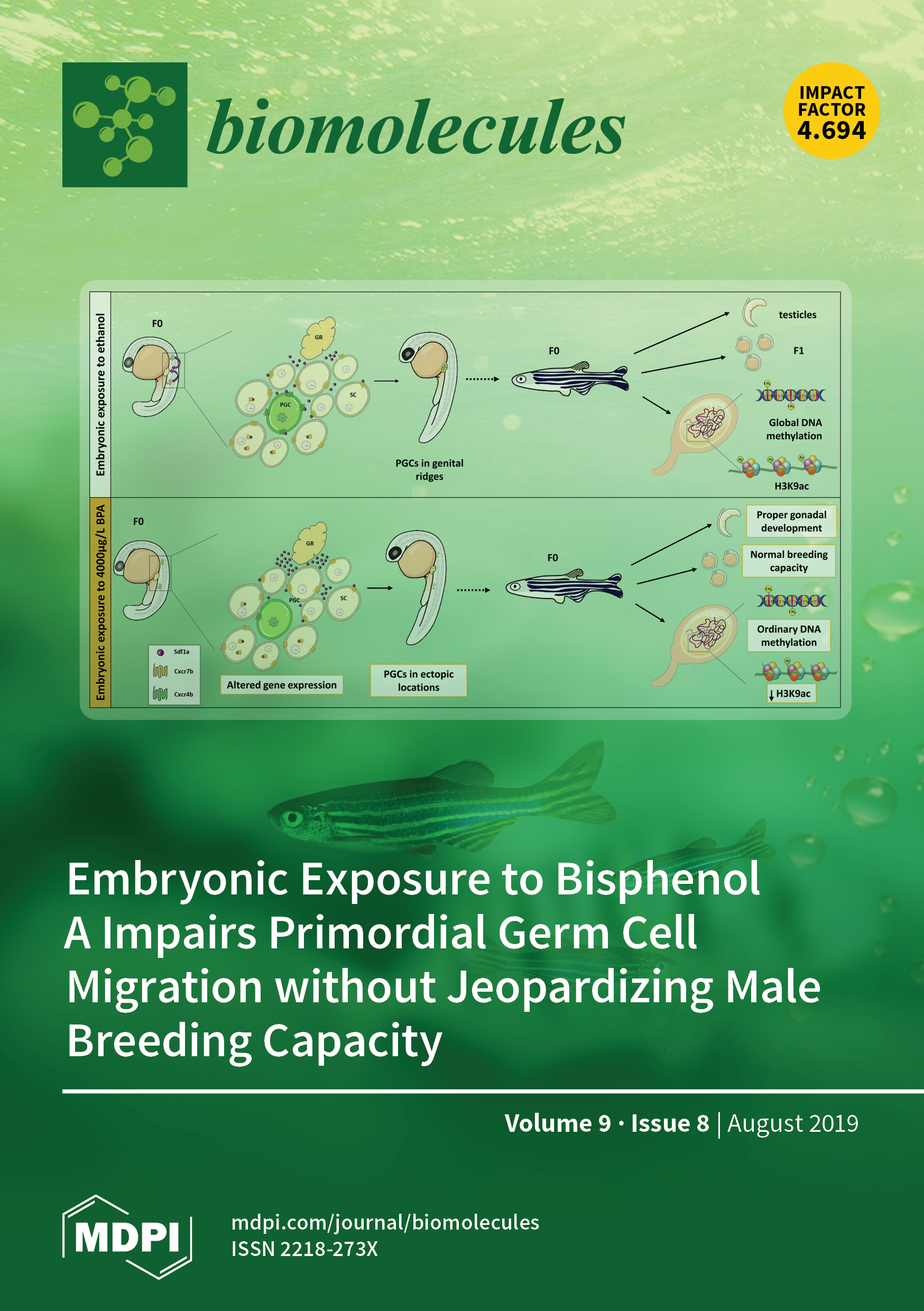
Review Article
Avocado and soybean unsaponifiables may effectively reduce inflammation and symptoms related to osteoarthritis, autoimmune diseases, and menopause.
Salehi B, Rescigno A, Dettori T, Calina D, Docea AO, Singh L, Cebeci F, Özçelik B, Bhia M, Dowlati Beirami A, Sharifi-Rad J, Sharopov F, C. Cho W, Martins N
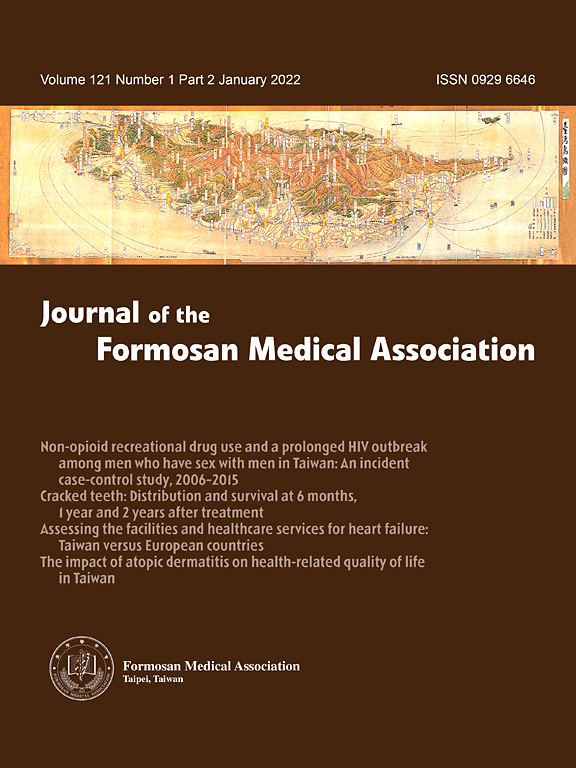
Randomised Controlled Trial
Electroacupuncture plus rehabilitation may provide earlier pain relief for patients with frozen shoulder syndrome and could be applied clinically.
Lo MY, Wu CH, Luh JJ, Wang TG, Fu LC, Lin JG, Lai JS
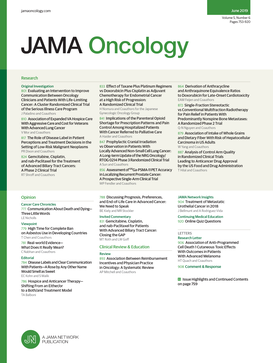
Systematic Review
Acupuncture and/or acupressure was significantly associated with reduced cancer pain and decreased use of analgesics.
He Y, Guo X, May BH, et al.

Systematic Review
Acupuncture could be used as an adjunct in clinical settings to improve efficacy of western medicine for irritable bowel syndrome.
Zheng H, Chen R, Zhao X, Li G, Liang Y, Zhang H, Chi Z

Systematic Review
Acupuncture has the advantage for acute and preventive treatment of migraine in pain improvement and safety.
Xia-tian Zhang, Xin-yi Li, Chen Zhao, Ye-yin Hu, Yi-yi Lin, He-qing Chen, Zhao-feng Shi, Xiao-yu Zhang, Hong-cai Shang, Gui-hua Tian
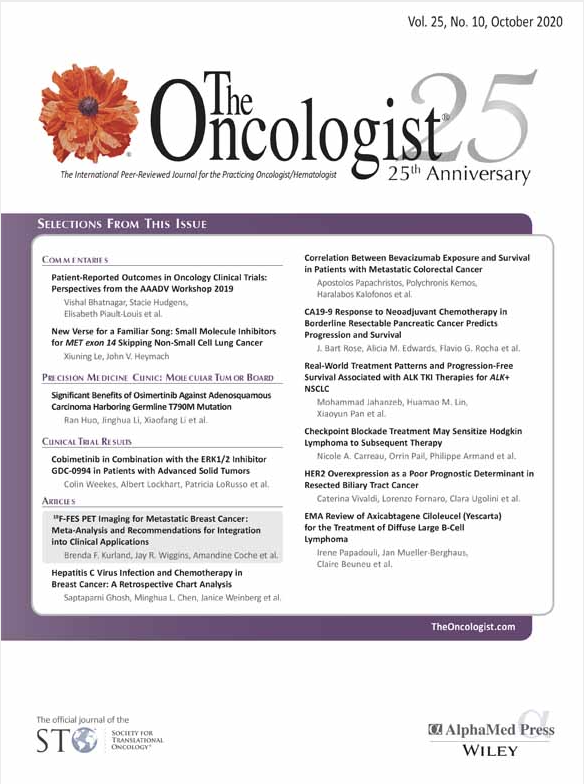
Randomised Controlled Trial
Acupuncture treatment significantly improves neuropathic symptoms in women suffering from chemotherapy-induced peripheral neuropathy after breast cancer therapy.
Lu W, Giobbie-Hurder A, Freedman RA, Shin IH, Lin NU, Partridge AH, Rosenthal DS, Ligibel JA
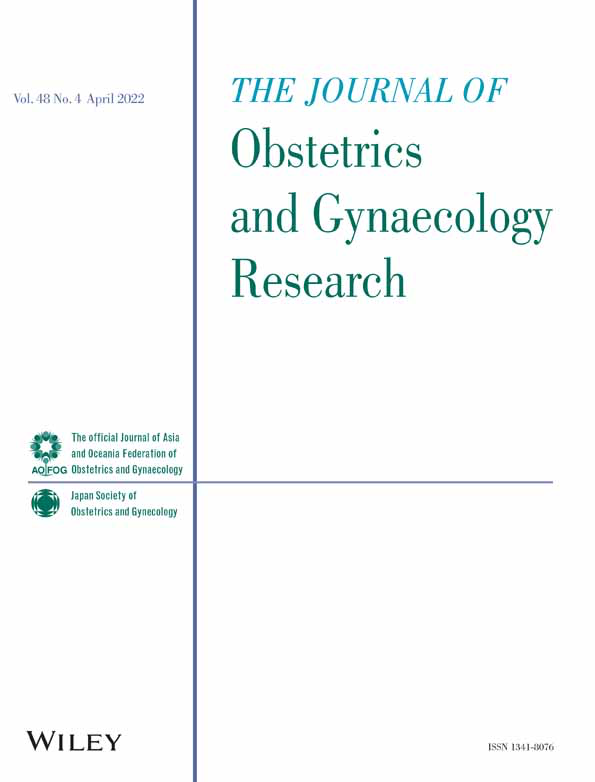
Systematic Review
Acupuncture intervention could significantly improve the treatment outcomes for breast cancer-related lymphedema, regardless of the control treatments used.
Hou W, Pei L, Song Y, Wu J, Geng H, Chen L, Wang Y, Hu Y, Zhou J, Sun J

Review Article
In 2017, dozens of Chinese proprietary medicines were employed as rheumatoid arthritis treatments and resulted in good outcomes, according to the National Health Insurance Directory of China.
Hu-DanPana, YaoXiao, Wan-YingWang, Ru-TongRen,Elaine Lai-Han,Leung, LiangLiua

Systematic Review
Breast massage eases pain and symptoms in breastfeeding problems.
Anderson L, Kynoch K, Kildea S, Lee N

Systematic Review
Our study found ginger is a promising herbal medicine for health care, which is beneficial for nausea and vomiting, metabolic syndrome and pain.
Li H, Liu Y, Luo D, Ma Y, Zhang J, Li M, Yao L, Shi X, Liu X, Yang K.
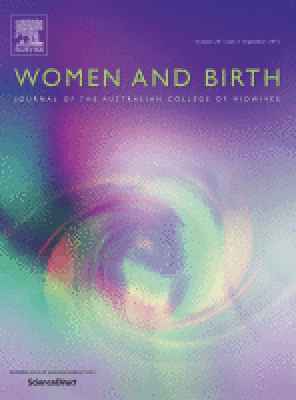
Meta-Analysis
Aromatherapy significantly reduces labor pain and duration without impacting emergency caesarean section, membrane rupture, and the onset of spontaneous labor.
Chen SF, Wang CH, Chan PT, Chiang HW, Hu TM, Tam KW, Loh EW

Systematic Review
Acupuncture shows potential in reducing pain intensity, alleviating anxiety, and improving quality of life for patients suffering from postherpetic neuralgia.
Pei, W., Zeng, J., Lu, L., Lin, G., & Ruan, J.
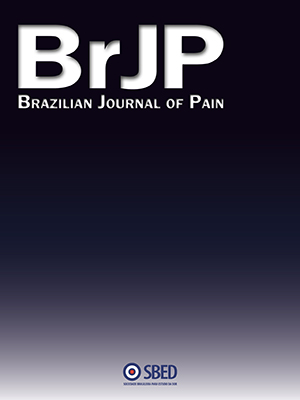
Systematic Review
Gua-sha has proved to be a relevant alternative for painful conditions involving the spine and the surroundings.
Dérrick Patrick Artioli; Gladson Ricardo Flor Bertolini

Systematic Review
Acupuncture therapy is an effective and safe treatment for chronic pain-related insomnia.
Fushui Liu, Jianyu You, Qi Li, Ting Fang, Mei Chen, Nana Tang, Xiaojun Yan
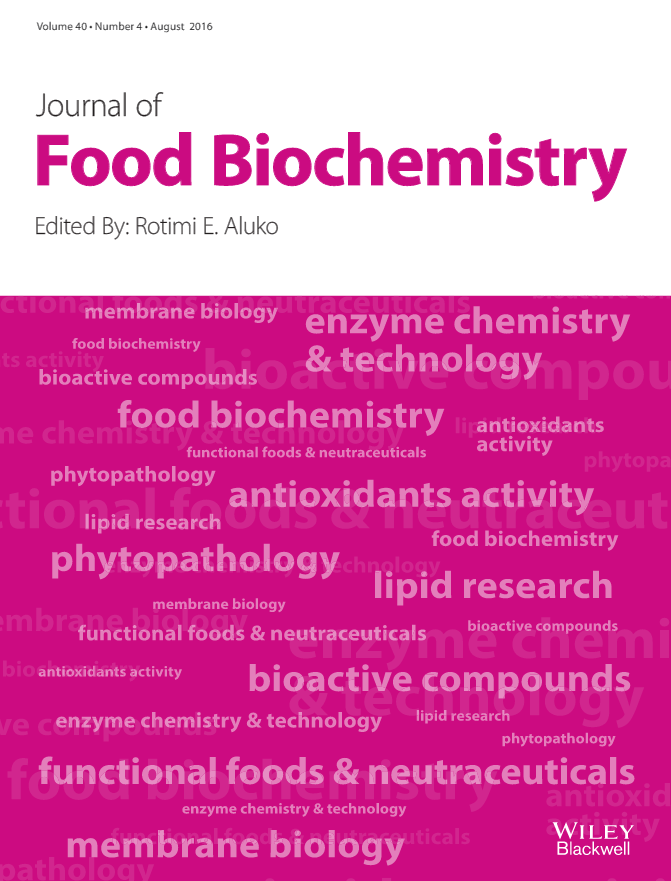
Animal Study
Pomegranate rind extract has been found to decrease pain and inflammation, suggesting it could contribute to treating rheumatoid arthritis.
Karwasra R, Singh S, Sharma D, Sharma S, Sharma N, Khanna K
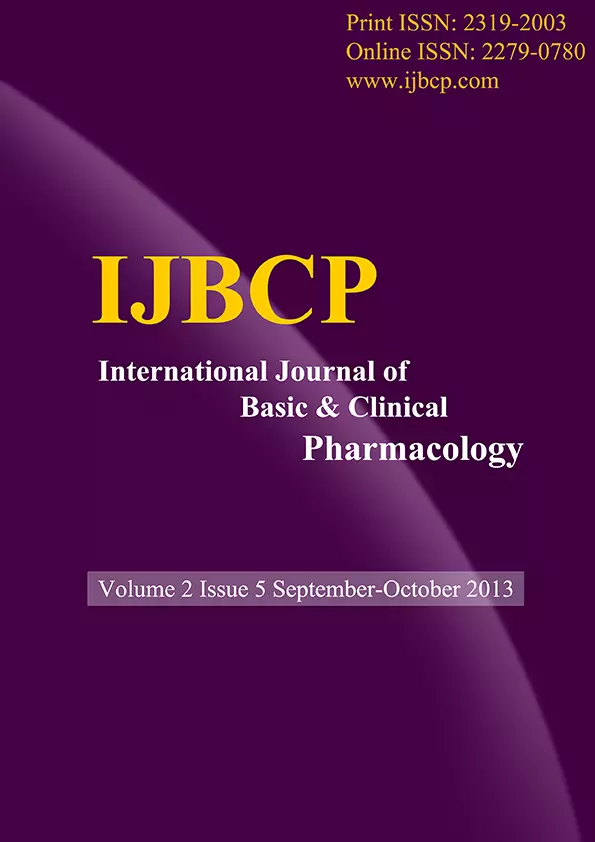
Randomised Controlled Trial
Avocado oil supplement combined with exercise improves joint function in osteoarthritis over traditional treatments like NSAIDS and multivitamins with exercise.
Chandra A, Kumar A, Kumar M, Kumar M, Dikshit H
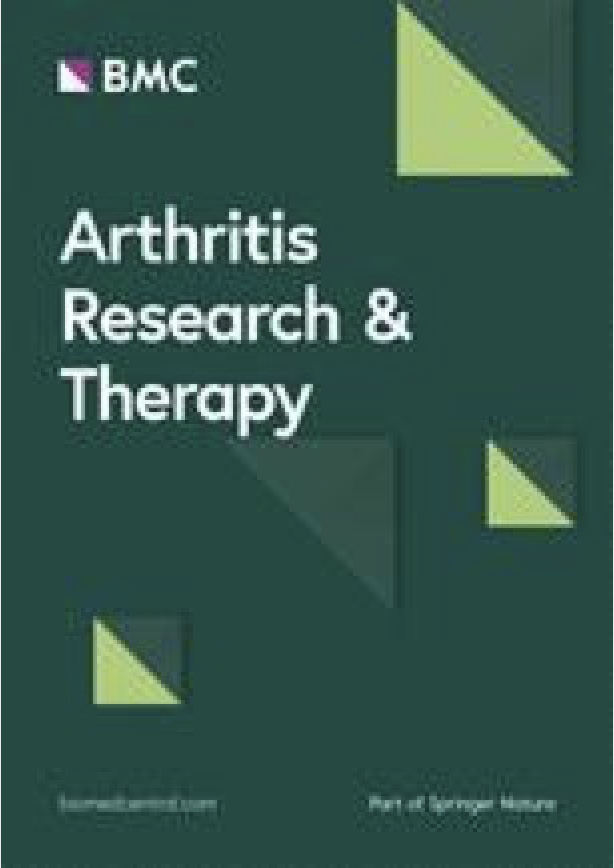
Randomised Controlled Trial
Strong electroacupuncture for at least two weeks improves chronic pain management in knee osteoarthritis patients better than weak or sham electroacupuncture.
Lv, Z., Shen, L., Zhu, B. et al.

Systematic Review
Acupuncture therapy seems effective for motor function, pain relief and activities of daily living in stroke patients with mild Shoulder-Hand Syndrome, when it is used in combination with rehabilitation.
Liu S, Zhang CS, Cai Y, Guo X, Zhang AL, Xue CC, Lu C

Systematic Review
We found good evidence that receiving acupuncture for chronic pain is better than not receiving treatment or being placed on a waiting list and reasonable evidence that it is better than conventional or usual care.
Yan-Jiao Chen, Gabriel Shimizu Bassi, Yong-Qing Yang

Systematic Review
Acupuncture is an effective and safe treatment for patients with fibromyalgia. It may be more effective in relieving pain in both the short and long term compared with conventional medication.
Zhang X, Chen H, Xu W, Song Y, Gu Y, Ni G
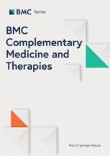
Systematic Review
Peppermint oil has been shown to be a safe and effective treatment for pain and overall symptoms in adults suffering from irritable bowel syndrome.
Alammar N, Wang L, Saberi B, Nanavati J, Holtmann G, Shinohara RT, Mullin GE

Systematic Review
There is moderate evidence of efficacy for acupuncture in terms of pain reduction immediately after treatment for non-specific low back pain ((sub)acute and chronic) when compared to sham or placebo acupuncture.
Xiang Y, He J, Tian H, Cao B, Li R.
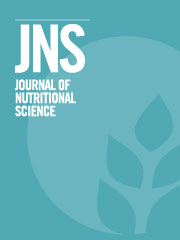
Randomised Controlled Trial
Daily consumption of three gold-fleshed kiwifruit is associated with a significant increase of two complete spontaneous bowel movements per week and reduction in gastrointestinal discomfort in mildly constipated adults.
Eady SL, Wallace AJ, Butts CA, Hedderley D, Drummond L, Ansell J, Gearry RB
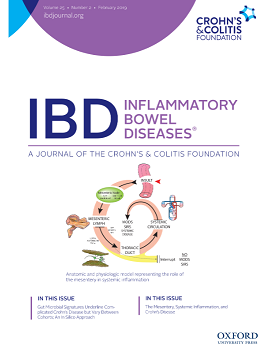
Practice Guideline
Acupuncture has been shown to decrease disease activity and inflammation via increase of vagal activity in inflammatory bowel disease.
Gengqing Song, MD, Claudio Fiocchi, MD, Jean-Paul Achkar, MD
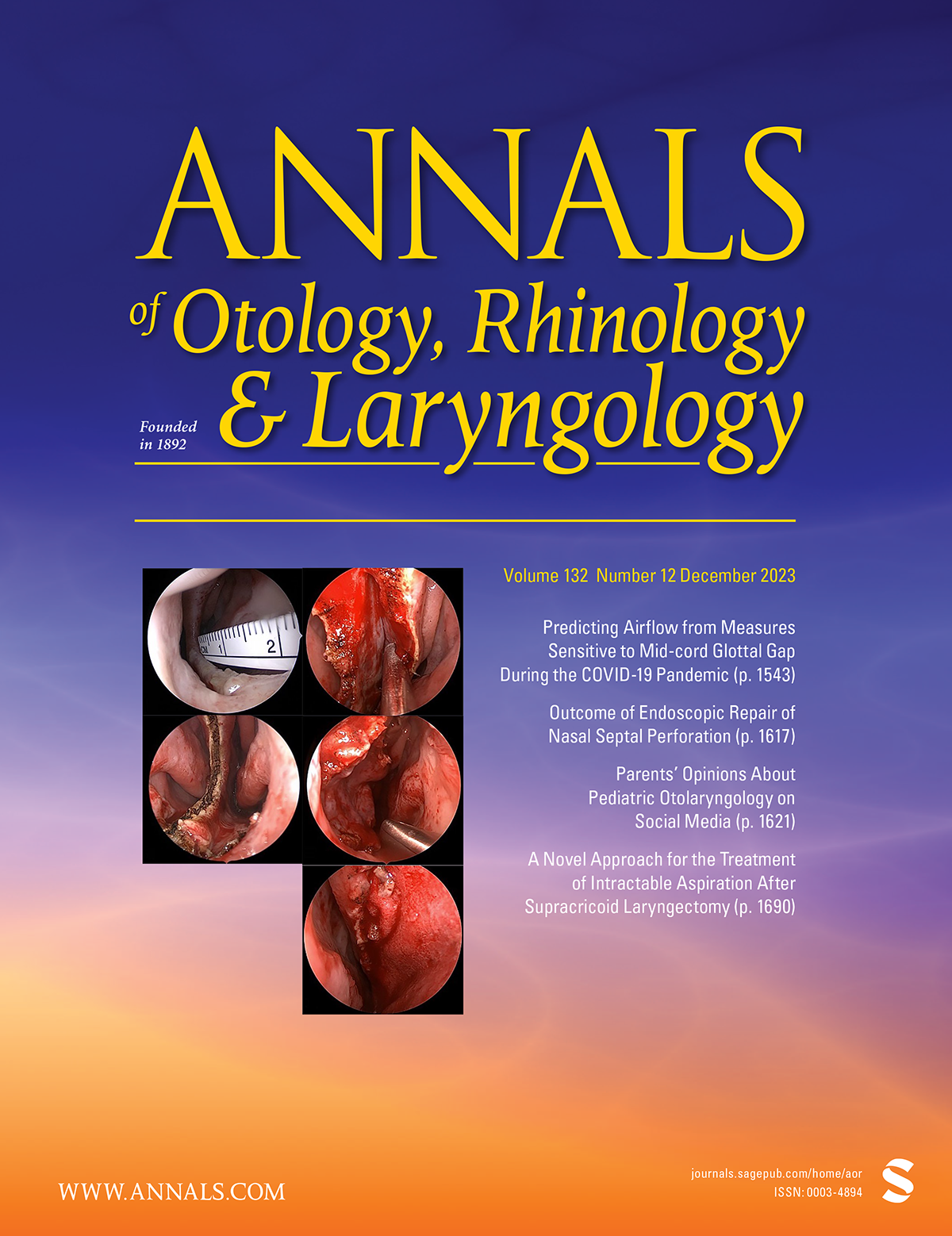
Review Article
Honey exhibits efficacy in otolaryngology, supported by high-quality evidence, particularly in preventing oral mucositis in cancer patients, alleviating pediatric cough, and managing post-tonsillectomy pain.
Tharakan T, Bent J, Tavaluc R
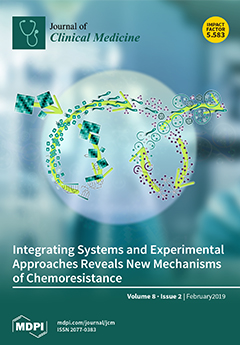
Systematic Review
Aromatherapy (via inhalation, massage, or oral use) appears to be more effective than a placebo for pain reduction in primary dysmenorrhea.
Lee MS, Lee HW, Khalil M, Lim HS, Lim HJ
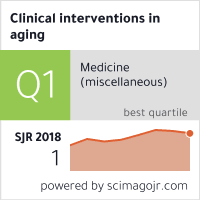
Randomised Controlled Trial
The extract from cucumber, Q-Actin, is effective in reducing moderate knee osteoarthritis related pain and potentially in managing knee pain, stiffness, and physical functions.
Nash RJ, Azantsa BKG, Sharp H, Shanmugham V

Systematic Review
There is potential of acupuncture combined with conventional treatment for treating female chronic pelvic pain.
Sung SH, Sung ADM, Sung HK, An TEB, Kim KH, Park JK

Systematic Review
Cupping therapy has demonstrated notable effects in reducing chronic back pain in adults.
Moura, C. C., Chaves, É., Cardoso, A., Nogueira, D. A., Corrêa, H. P., & Chianca, T.

Systematic Review
Acupuncture showed a significant benefit in pain reduction for women with endometriosis as compared with placebo.
Mira, T.A., Buen, M.M., Borges, M.G., Yela, D.A. and Benetti-Pinto, C.L.

Systematic Review
Acupuncture might reduce menstrual pain and associated symptoms more effectively compared to no treatment or NSAIDs.
Woo HL, Ji HR, Pak YK, Lee H, Heo SJ, Lee JM, Park KS

Systematic Review
In people with hip osteoarthritis, at close to 8 weeks, acupuncture plus routine primary physician care may improve pain and function compared to routine primary physician care alone.
Manheimer E, Cheng K, Wieland LS, Shen X, Lao L, Guo M, Berman BM.
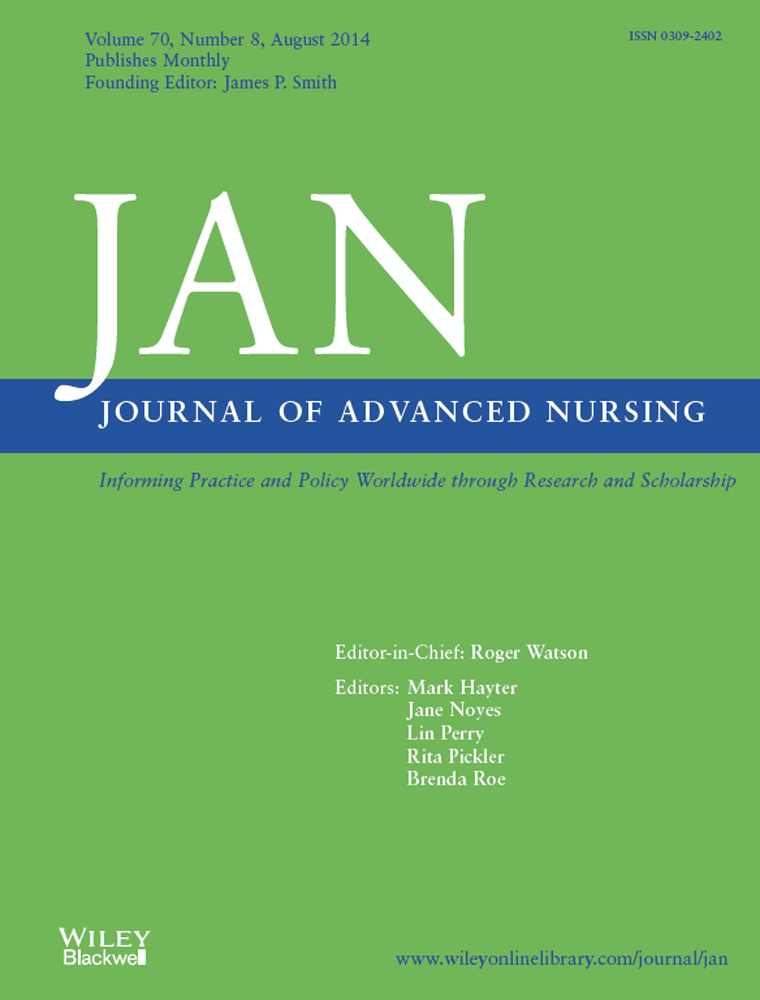
Systematic Review
Skin-patches of Chinese herbal medicine combined with Western medicine seemed to be more effective than Western medicine alone to reduce the pain scores of patients with acute gouty arthritis.
Wang HR, Fu Q, Liu Z, Li ML, Zhai SQ

Systematic Review
Acupuncture showed a more favourable effect in the treatment of lumbar disc herniation than lumbar traction, ibuprofen, diclofenac sodium and meloxicam.
Tang S, Mo Z, Zhang R
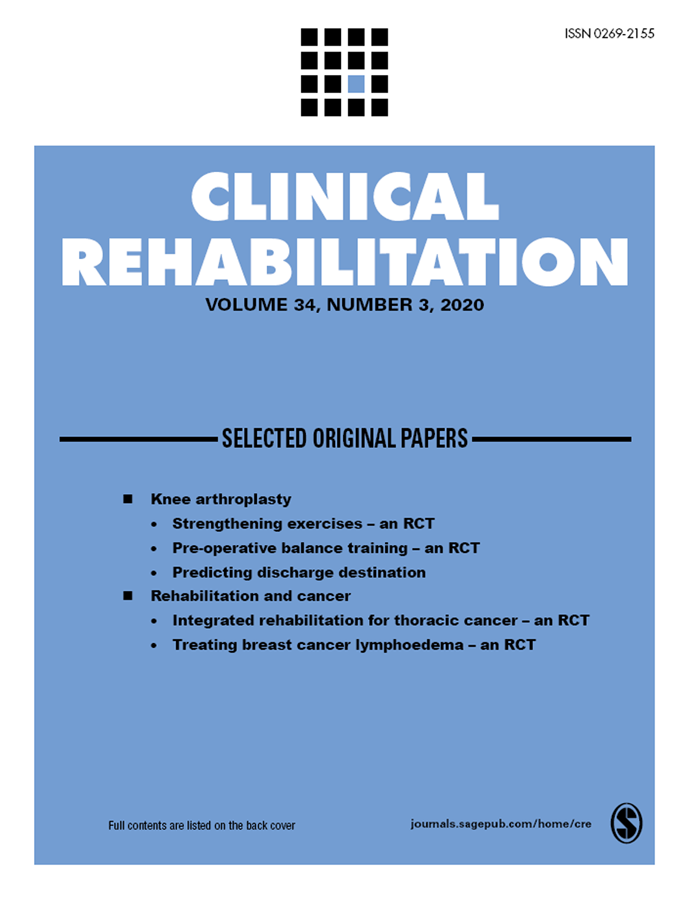
Systematic Review
Current evidence suggests that traditional manual acupuncture integrated with rehabilitation therapy is more effective in alleviating pain, improving limb movement and activities of daily living.
Peng, L., Zhang, C., Zhou, L., Zuo, H. X., He, X. K., & Niu, Y. M. (
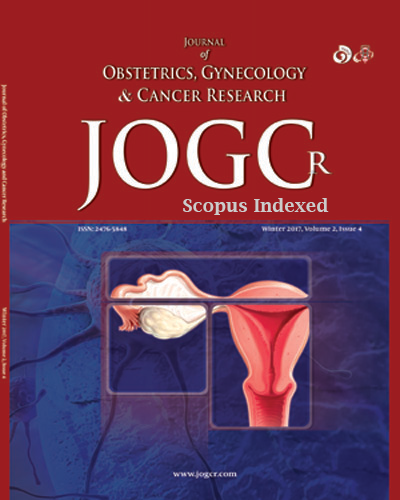
Systematic Review
Aromatherapy with lavender demonstrated effectiveness in reducing labor pain during childbirth.
Mirzaiinajmabadi K, Makvandi S, Mirteimoori M, Sadeghi R, , , ,
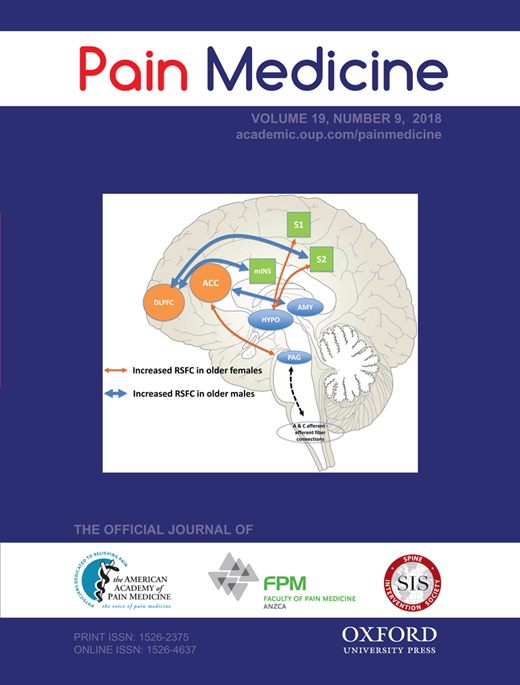
Acupuncture therapy offered in the group setting was effective in reducing pain severity, pain interference, and depression in patients with chronic neck, back, or shoulder pain or osteoarthritis.
Benjamin Kligler, Arya Nielsen, Corinne Kohrherr,, Tracy Schmid, Eve Waltermaurer, Elidania Perez, Woodson Merrell
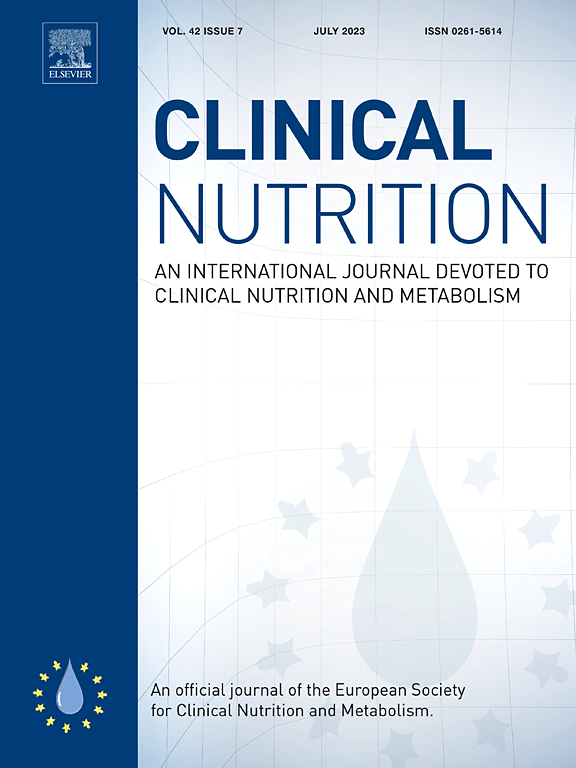
Randomised Controlled Trial
Green tea extract can potentially control pain and improve knee joint physical function in adults suffering from osteoarthritis.
Hashempur MH, Sadrneshin S, Mosavat SH, Ashraf A

Systematic Review
Most studies reviewed concluded that conventional and electroacupuncture could be effective for management of shoulder pain after stroke.
Chau JPC, Lo SHS, Yu X, Choi KC, Lau AYL, Wu JCY, Lee VWY, Cheung WHN, Ching JYL, Thompson DR
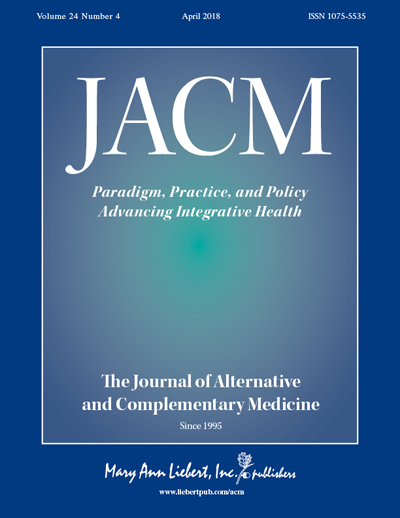
Systematic Review
Patients in both group and individual acupuncture study arms valued the pain relief, improved quality of life, and relaxation experienced during acupuncture.
Chuang, E., Hashai, N., Buonora, M., Gabison, J., Kligler, B., & McKee

Clinical Study
Drinking alkaline-reduced water can improve the quality of life in patients suffering from diarrhea-predominant irritable bowel syndrome.
Shin DW, Yoon H, Kim HS, Choi YJ, Shin CM, Park YS, Kim N, Lee DH

Randomised Controlled Trial
Inhalation aromatherapy with Boswellia Carterii essential oil can significantly reduce labor pain intensity in nulliparous women.
Esmaelzadeh-Saeieh S, Rahimzadeh M, Khosravi-Dehaghi N, Torkashvand S
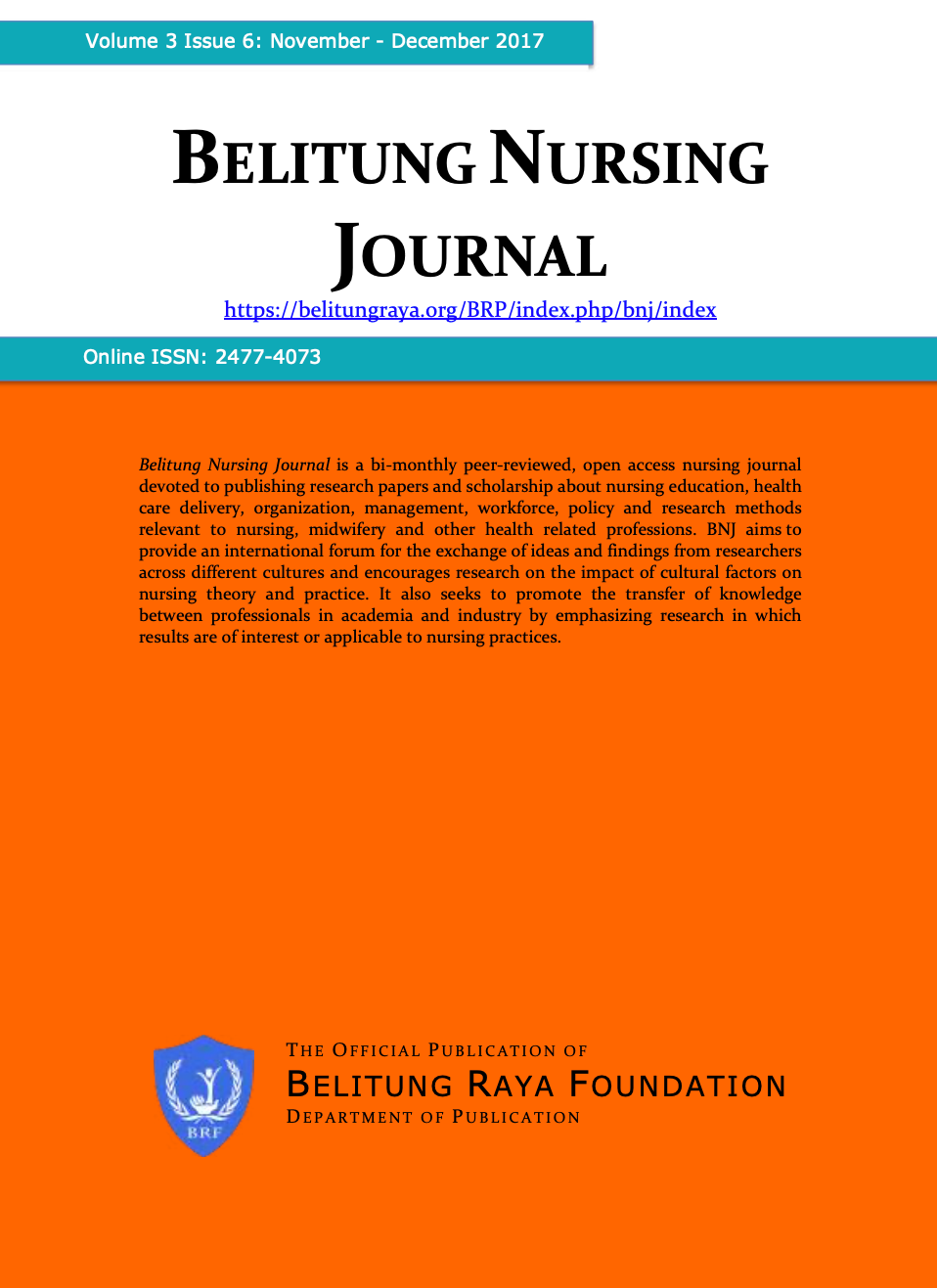
Randomised Controlled Trial
Dark chocolate could reduce menstrual pain significantly in late adolescents.
Maharani SI, Pramono N, Wahyuni S
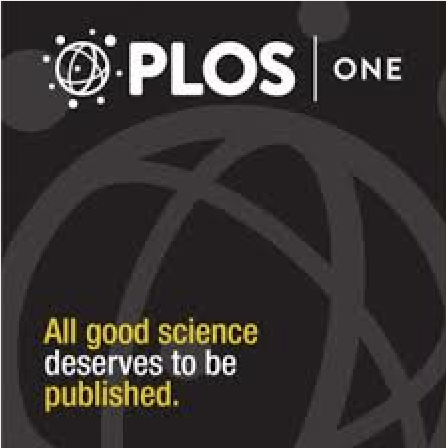
Review Article
Traditional Chinese Medicine offers potential benefits like pain relief and functional improvement for knee osteoarthritis with few adverse events.
Yang M, Jiang L, Wang Q, Chen H, Xu G
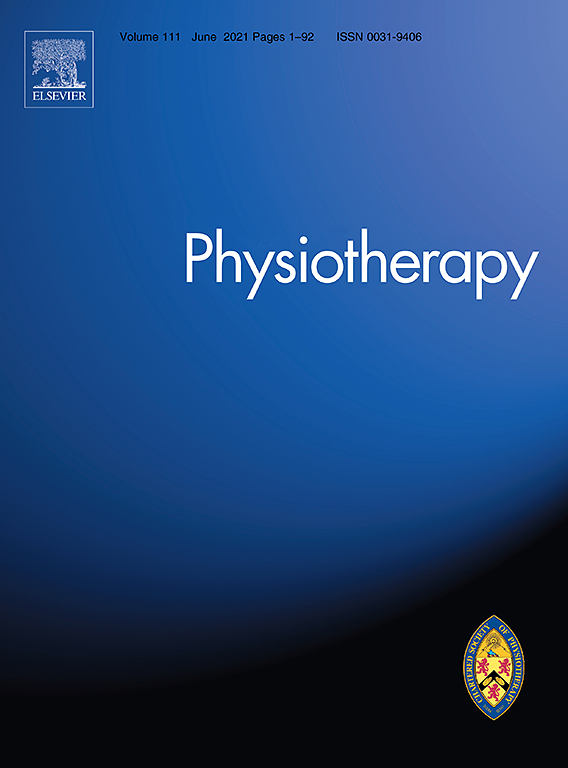
Systematic Review
Acupuncture combined with physiotherapy or exercise was found to be more effective for frozen shoulder than physiotherapy or exercise alone in the short and long term.
A. Rubio M. Mansfield J. Lewis

Systematic Review
Acupuncture may be effective at relieving chronic knee pain 12 weeks after acupuncture administration.
Zhang Q, Yue J, Golianu B, Sun Z, Lu Y.
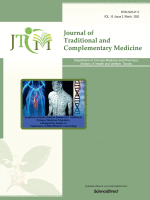
Systematic Review
In oral care, acupuncture can be a supplement to conventional treatments in temporomandibular disorders, facial pain, pain management, Sjoegrens syndrome, and in phobias and anxiety.
Gupta, D., Dalai, D., Swapnadeep, Mehta, P.D., Indra, B., Rastogi, S., Jain, A., Chaturvedi, M., Sharma, S., Singh, S., Gill, S., Singh, N., & Gupta, R. (2014). Acupuncture (針灸 Zhēn Jiǔ) – An Emerging Adjunct in Routine Oral Care. Journal of Tradi
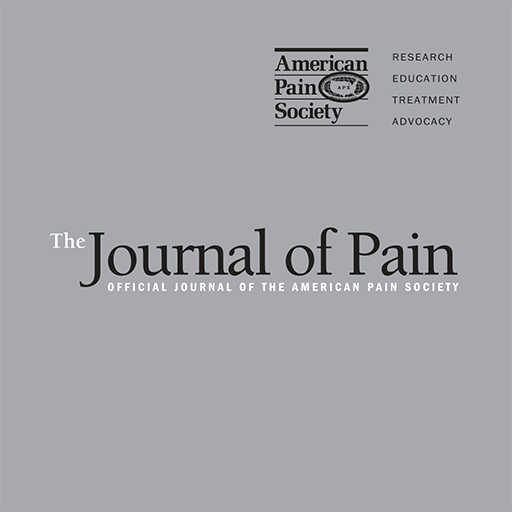
Systematic Review
Acupuncture has a clinically relevant effect on chronic pain that persists over time. Referral for acupuncture treatment is a reasonable option for chronic pain patients.
Vickers, Andrew J. et al.

Systematic Review
The current literature suggests that acupuncture reduces endometriosis-related pain and serum CA-125 levels, regardless of the control intervention used.
Xu Y, Zhao W, Li T, Zhao Y, Bu H, Song S
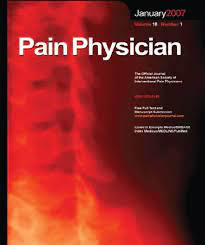
Meta-Analysis
The existing evidence suggests that most acupuncture therapies, including acupuncture combined with other therapies, are effective in decreasing pain and in improving physical function.
Li X, Wang R, Xing X, Shi X, Tian J, Zhang J, Ge L, Zhang J, Li L, Yang K.
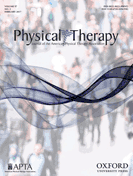
Systematic Review
Our findings support the use of tai chi as a treatment for people with arthritis and potentially for low back pain.
Amanda Hall, Bethan Copsey, Helen Richmond, Jacqueline Thompson, Manuela Ferreira, Jane Latimer, Chris G. Maher

Cohort Study
Combining effleurage massage and green coconut water is more effective than massage alone in reducing menstrual pain and anxiety, and boosting ß-endorphin levels in teenage girls.
Ulya FH, Suwandono A, Ariyanti I, Suwondo A, Kumorowulan S, Pujiastuti SE

Systematic Review
Acupoint-stimulation can relieve pain effectively in the treatment of primary dysmenorrhea and offers advantages compared with treatment by NSAIDs.
Xu, Y., Zhao, W., Li, T. et al.
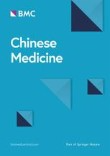
Systematic Review
Cupping therapy and acupuncture are potentially safe, and they have similar effectiveness in relieving pain.
Zhang, YJ., Cao, HJ., Li, XL. et al.
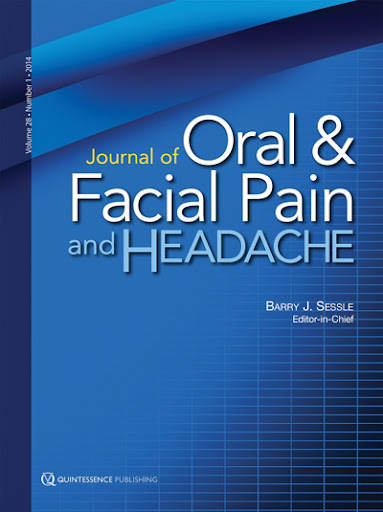
Systematic Review
Acupuncture yielded results similar to those observed in groups treated with occlusal splints for pain in myofascial temporomandibular disorder.
Ana Carla Bezerra De Carvalho Justo Fernandes, DDS, MSc/Dayanne Monielle Duarte Moura, DDS, MSc/Laura Géssica Dantas Da Silva, DDS, MSc/Erika Oliveira De Almeida, DDS, MSc, PhD/Gustavo Augusto Seabra Barbosa, DDS, MSc, PhD
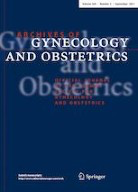
Randomised Controlled Trial
Honey has been shown to provide similar pain relief to traditional medication mefenamic acid for women with primary dysmenorrhea, with fewer side effects.
Amiri Farahani L, Hasanpoor-Azghdy SB, Kasraei H, Heidari T
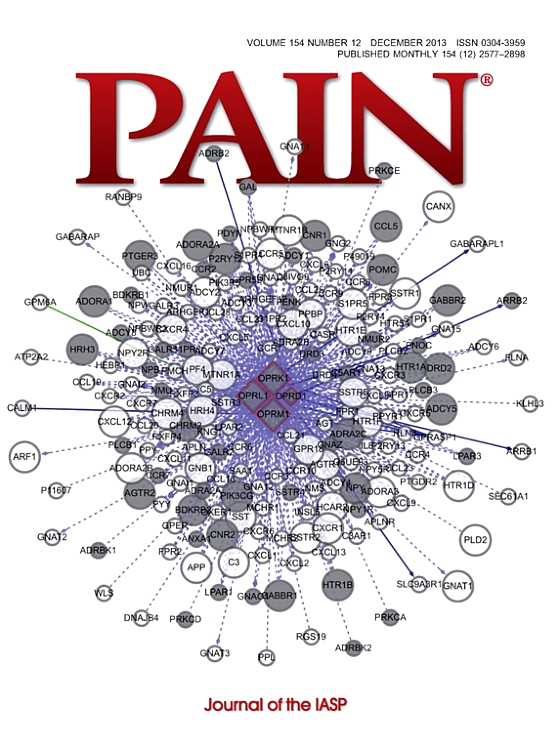
Systematic Review
Patients with chronic pain can generally be reassured that treatment effects persist after a course of treatment with acupuncture.
MacPherson, H; Vertosick, E.A; Foster, N.E; Lewith, G; Linde, K; Sherman, K.J; Witt, C.M; Vickers, A.J

Randomised Controlled Trial
Our study provides evidence that acupuncture has a specific impact on frozen shoulder beyond the placebo effects that may not only be beneficial in reducing short-term pain perception, but may also have a positive long-term influence on the time course of recovery.
Schröder S, Meyer-Hamme G, Friedemann T, Kirch S, Hauck M, Plaetke R, Friedrichs S, Gulati A, Briem D

Systematic Review
The majority of randomised controlled trials showed benefit for acupuncture over control in the treatment of diabetic neuropathy, Bell's palsy, and carpal tunnel syndrome.
Alexandra Dimitrova, Charles Murchison, and Barry Oken.

Systematic Review
Acupuncture can be adopted as part of a multimodal approach for reducing cancer-related pain.
Chiu HY, Hsieh YJ, Tsai PS.

Systematic Review
Acupuncture therapy is effective in reducing the degree of pain in patients with temporomandibular disorders, especially those with myofascial pain symptoms.
Wu, Jun-Yi MD; Zhang, Chao MD; Xu, Yang-Peng MM; Yu, Ya-Yu MD; Peng, Le PhD; Leng, Wei-Dong PhD; Niu, Yu-Ming PhD; Deng, Mo-Hong PhD
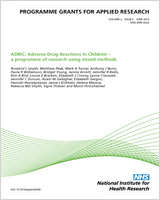
Systematic Review
The programme of research found that acupuncture was more effective than usual care and sham acupuncture for chronic pain, that it was one of the more clinically effective physical therapies for osteoarthritis and that it showed benefits in the treatment of depression.
MacPherson H, Vickers A, Bland M, et al.

Systematic Review
Acupuncture may be recommended for the treatment of chronic prostatitis/chronic pelvic pain syndrome with relatively rare incidence of adverse events.
Qin, Z., Wu, J., Tian, J. et al.

Systematic Review
Acupuncture relieves neck pain better than sham acupuncture and those who received acupuncture report less pain and disability at short‐term follow‐up than those on a wait‐list.
Trinh K, Graham N, Irnich D, Cameron ID, Forget M.

Randomised Controlled Trial
Acupuncture was a feasible intervention and reduced threatened miscarriage symptoms when compared to a touch intervention.
Betts D, Smith CA, Dahlen HG.

Systematic Review
Acupuncture may have beneficial effects on improving dependency, global neurological deficiency, and some specific neurological impairments for people with stroke in the convalescent stage, with no obvious serious adverse events.
Yang A, Wu HM, Tang JL, Xu L, Yang M, Liu GJ.

Systematic Review
Acupuncture, in combination with regular rehabilitation, may effectively alleviate poststroke shoulder pain more than rehabilitation alone.
Lee, S.-H., & Lim, S. M.

Systematic Review
Our meta-analysis found that, overall, acupuncture was superior to sham acupuncture in terms of pain relief and disability reduction for patients with musculoskeletal disorders.
Yuan QL, Wang P, Liu L, et al.

Review Article
Previous records suggest pleiotropic pharmacological activities of capsaicin such as an analgesic, anti-obesity, anti-pruritic, anti-inflammatory, anti-apoptotic, anti-cancer, anti-oxidant, and neuro-protective functions. Emerging data indicate its clinical significance in treating vascular-related diseases, metabolic syndrome, and gastro-protective effects.
Basith S, Cui M, Hong S, Choi S

Systematic Review
Oral ginger could be an effective treatment for menstrual pain in dysmenorrhea.
Chen X. Chen, Bruce Barrett, Kristine L. Kwekkeboom,
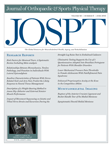
Systematic Review
Acupuncture, specifically needle-based and electroacupuncture, can potentially provide therapeutic benefits for carpal tunnel syndrome, Achilles tendinopathy, and shoulder injuries.
Cox, J., Varatharajan, S., Côté, P., & Optima Collaboration

Systematic Review
Acupuncture and related therapies are effective in reducing pain, fatigue, and in improving quality of life when compared with conventional intervention alone among cancer patients.
Lau CH, Wu X, Chung VC, Liu X, Hui EP, Cramer H, Lauche R, Wong SY, Lau AY, Sit RS, Ziea ET, Ng BF, Wu JC.

Systematic Review
Clinicians may consider Tai Chi as a viable complementary and alternative medicine for chronic pain conditions.
Kong, L., Lauche, R., Klose, P. et al.

Systematic Review
Certain modes of acupuncture improved postoperative pain on the first day after surgery and reduced opioid use. Our findings support the use of acupuncture as adjuvant therapy in treating postoperative pain.
Wu M-S, Chen K-H, Chen I-F, Huang SK, Tzeng P-C, Yeh M-L, et al.

Review Article
Acupuncture could be tried as a complement in the treatment of pain in endometriosis as it is an overall safe treatment.
Lund I, Lundeberg T

Systematic Review
Current evidence supports acupuncture as an effective treatment for chronic prostatitis/chronic pelvic pain syndrome-induced symptoms, particularly in relieving pain.
Qin Z, Wu J, Zhou J, Liu Z.
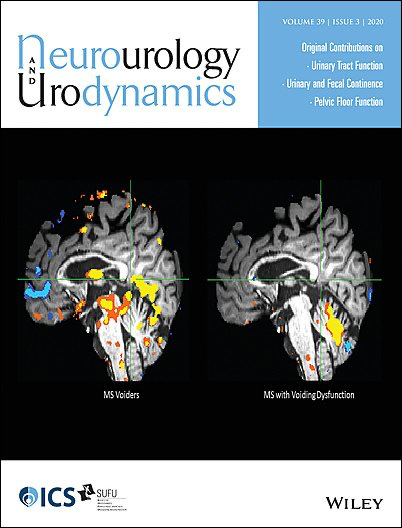
Systematic Review
Acupuncture has promising efficacy for patients with chronic prostatitis/chronic pelvic pain syndrome.
Chang SC, Hsu CH, Hsu CK, Yang SSD, Chang SJ

Systematic Review
Acupuncture therapy is more effective than NSAID in improving clinical efficacy rates and pain scores for treatment of chrondomalacia patellae.
Lv Z.-T.a · Li Z.-Q.b · Zhou X.c · Ma W.-W.d · Zhang J.-M.a · Chen A.-M
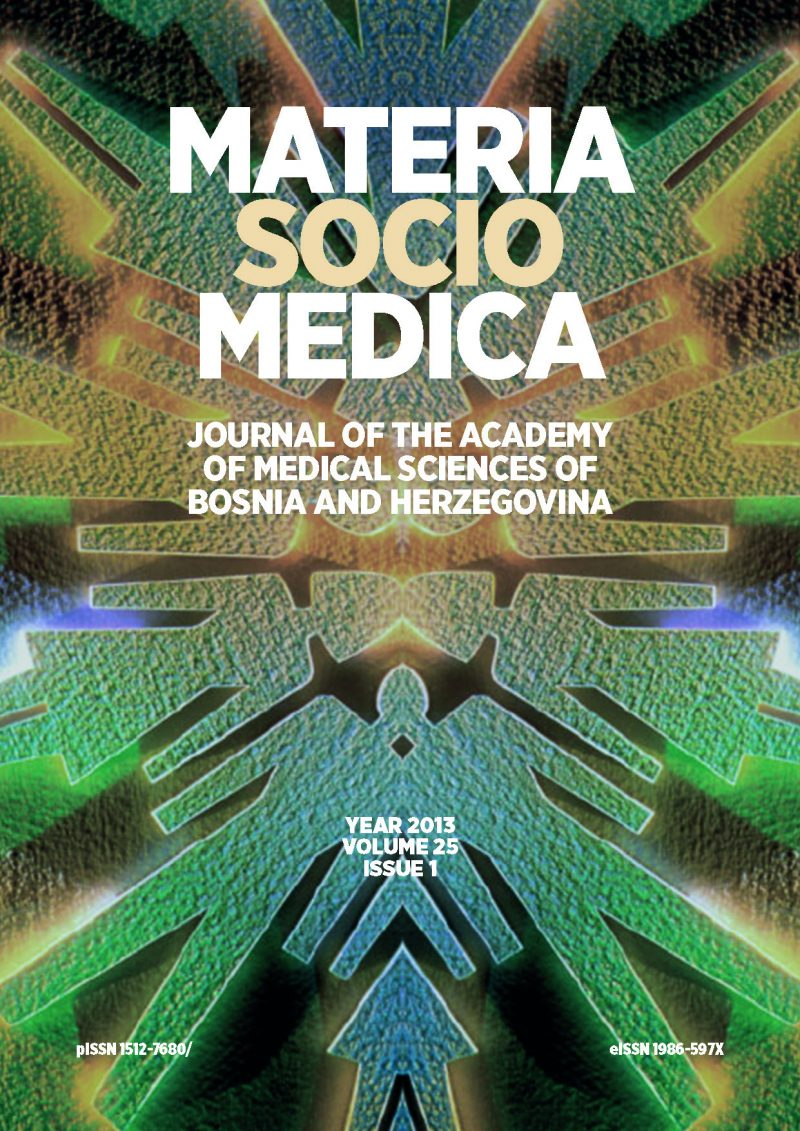
Randomised Controlled Trial
Acupuncture may enhance shoulder movement and relieve pain more effectively than standard treatment in patients suffering from adhesive capsulitis, also known as a frozen shoulder.
Asheghan M, Aghda A, Hashemi E, Hollisaz M

Systematic Review
Acupuncture may be effective in treating the pain associated with sciatica.
Ji M, Wang X, Chen M, Shen Y, Zhang X, Yang J
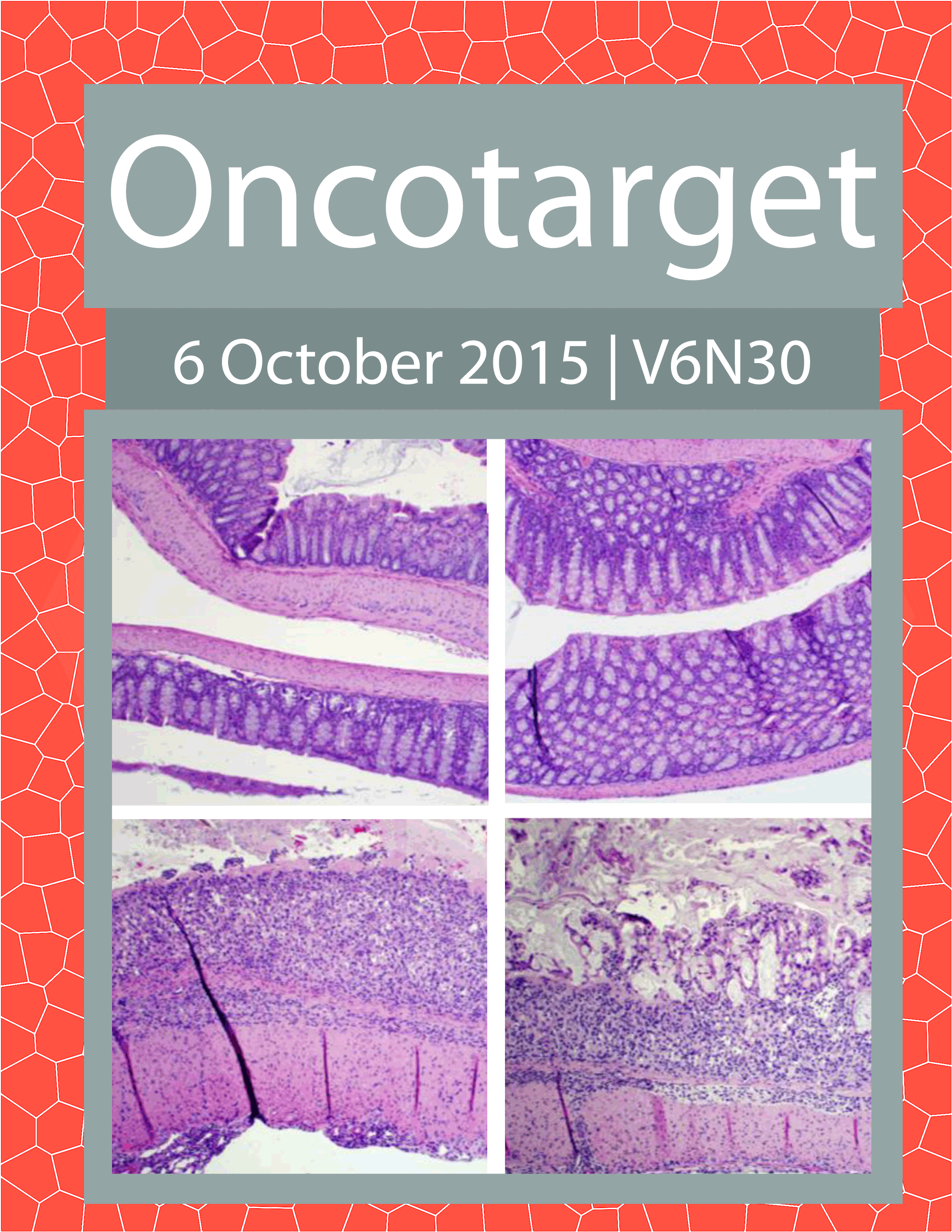
Systematic Review
Traditional Chinese medicine psycho-behavioral interventions represent beneficial adjunctive therapies for cancer patients.
Tao W, Luo X, Cui B, Liang D, Wang C, Duan Y, Li X, Zhou S, Zhao M, Li Y, He Y, Wang S, Kelley KW, Jiang P, Liu Q.

Systematic Review
The use of acupuncture may be more effective than drugs and may enhance the effect of drugs for patients with sciatica.
Zongshi Qin, Xiaoxu Liu, Jiani Wu, Yanbing Zhai, Zhishun Liu,

Systematic Review
Acupressure showed evidence of pain relief while acupuncture improved both the mental and the physical components of quality of life associated with primary dysmenorrhea.
Abaraogu UO, Tabansi-Ochuogu CS

Randomised Controlled Trial
Short-term acupuncture treatment is more effective than ibuprofen for mild to moderate carpal tunnel syndrome.
Hadianfard M, Bazrafshan E, Momeninejad H, Jahani N.

Systematic Review
There is moderate‐quality evidence from individual studies suggesting that acupuncture improved pelvic pain more than usual prenatal care.
Liddle SD, Pennick V

Systematic Review
The majority of trials demonstrate a positive effect of acupuncture over control condition in the treatment of neuropathy.
Alexandra Dimitrova, Charles Murchison, Barry Oken
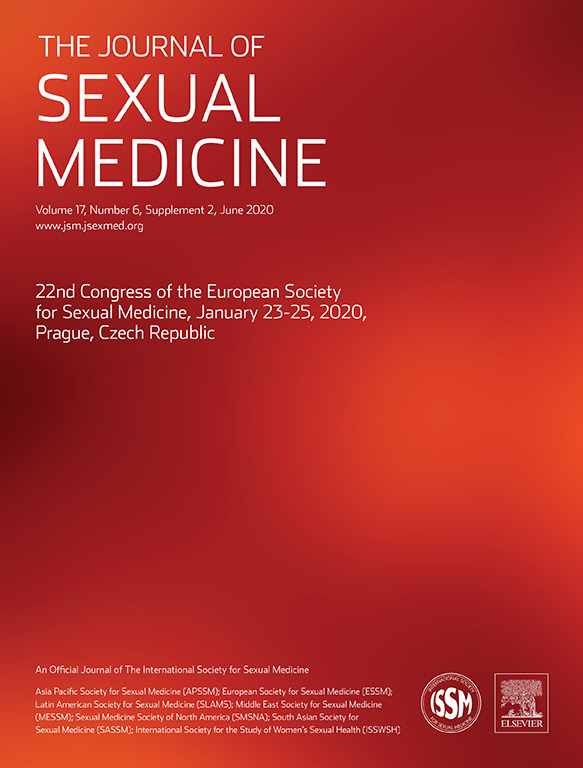
Randomised Controlled Trial
Acupuncture appeared to reduce vulvar pain and dyspareunia with an increase in overall sexual function for women with vulvodynia.
Schlaeger JM, Xu N, Mejta CL, Park CG, Wilkie DJ

Systematic Review
Acupuncture, either used in isolation or as an adjunct to conventional therapy, provides short-term improvements in pain and function for chronic low back pain.
Liu L, Skinner M, McDonough S, Mabire L, Baxter GD.
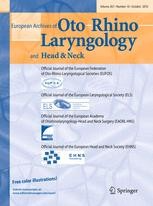
Systematic Review
Administering honey postoperatively can significantly lessen pain and foster improved wound healing following tonsillectomy.
Hwang SH, Song JN, Jeong YM, Lee YJ, Kang JM
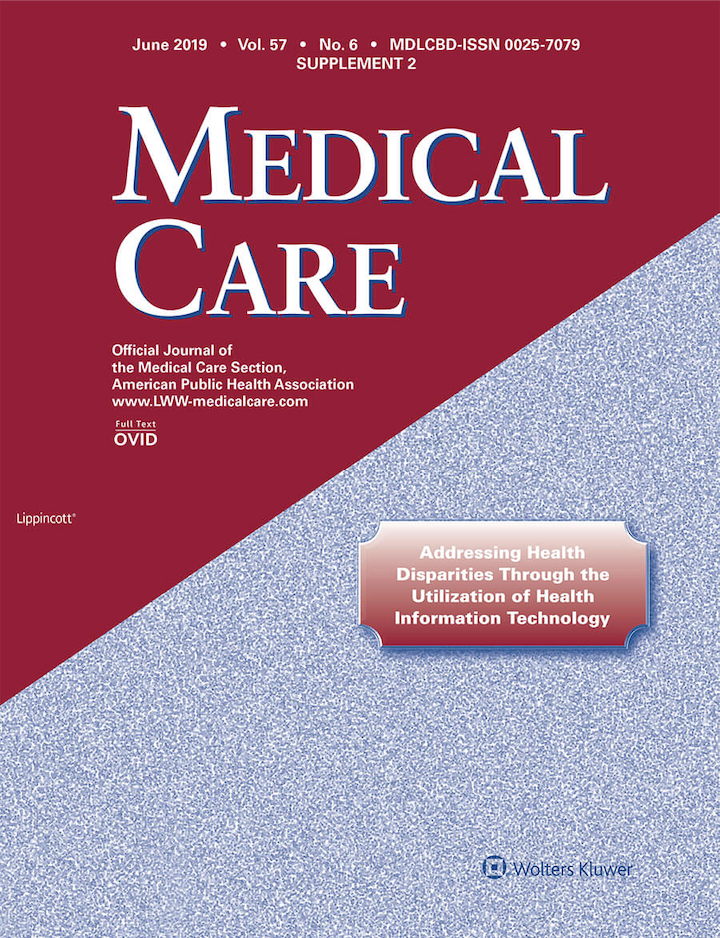
Randomised Controlled Trial
Improvement in post traumatic stress disorder severity was significantly greater among those receiving acupuncture than in those receiving usual PTSD care.
Engel CC, Cordova EH, Benedek DM, Liu X, Gore KL, Goertz C, et al.

Experimental Study
Epigallocatechin 3-gallate (EGCG), found in green tea, can significantly slow down osteoarthritis progression and reduce associated pain in a post-traumatic osteoarthritis mouse model.
Leong DJ, Choudhury M, Hanstein R, Hirsh DM, Kim SJ, Majeska RJ, Schaffler MB, Hardin JA, Spray DC, Goldring MB, Cobelli NJ, Sun HB
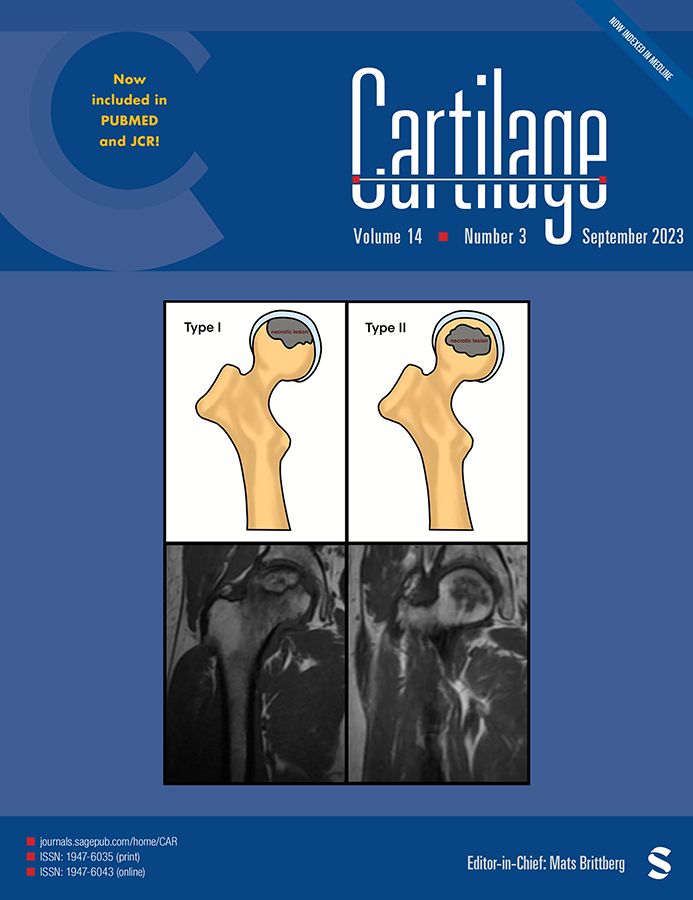
Review Article
A dietary supplement Avocado/Soybean Unsaponifiables aids in treating Osteoarthritis by preventing cartilage degradation and promoting cartilage repair, thereby reducing pain and enhancing joint functionality.
Christiansen BA, Bhatti S, Goudarzi R, Emami S

Systematic Review
The use of acupuncture for osteoarthritis is associated with significant reductions in pain intensity, improvement in functional mobility and quality of life.
Manyanga, T., Froese, M., Zarychanski, R. et al.

Systematic Review
Moderate quality studies suggest that acupuncture is more effective than sham acupuncture for lateral elbow pain.
Gadau M, Yeung WF, Liu H, Zaslawski C, Tan YS, Wang FC, et al

Systematic Review
Acupuncture showed both clinically important changes and statistically significant results for management of low back and/or pelvic pain (LBPP) in pregnancy.
Close C, Sinclair M, Liddle SD, Madden E, McCullough JE, Hughes C.
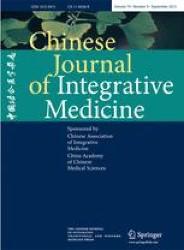
Systematic Review
Acupuncture shows promising evidence in cancer palliative care, particularly in reducing therapy-induced side effects and cancer pain.
Lian, WL., Pan, Mq., Zhou, Dh. & Zhang, ZJ.

Systematic Review
Acupuncture's efficacy in treating gynecologic and obstetric disorders
Selva Olid A, Martinez Zapata MJ, Sola I, Stojanovic Z, Uriona Tuma SM, Bonfill Cosp X.
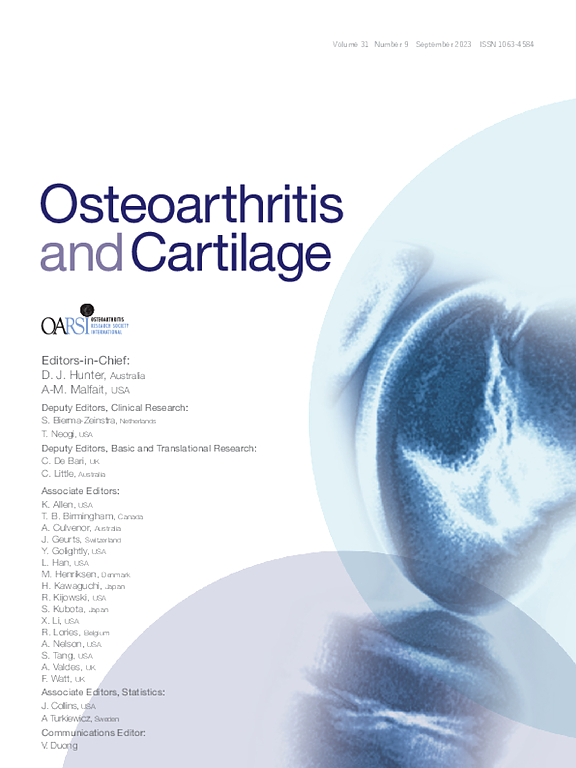
Randomised Controlled Trial
Tart cherry juice potentially helps alleviate symptoms of mild to moderate knee osteoarthritis and decreases the levels of high sensitivity C-reactive protein.
Schumacher HR, Pullman-Mooar S, Gupta SR, Dinnella JE, Kim R, McHugh MP

Randomised Controlled Trial
Tart cherry juice shows promise in easing knee osteoarthritis symptoms.
Schumacher HR, Pullman-Mooar S, Gupta SR, Dinnella JE, Kim R, McHugh MP

Systematic Review
Compared with no treatment and standard therapy, acupuncture improves pain and stiffness in people with fibromyalgia.
Deare JC, Zheng Z, Xue CC, Liu JP, Shang J, Scott SW, Littlejohn G.

Systematic Review
Acupuncture has shown potential in alleviating symptoms and improving overall quality of life for patients suffering from ankle sprains.
Park J, Hahn S, Park JY, Park HJ, Lee H

Systematic Review
Our findings suggest that acupressure at the SP6 acupoint may provide more effective pain relief than that of control treatment.
Chen MN, Chien LW, Liu CF

Systematic Review
Limited evidence supporting the benefit of acupressure in alleviating menstrual pain and reducing symptoms.
Jiang H, Ni S, Li J, Liu M, Li J, Cui X, Zhang B

Systematic Review
There is evidence supporting the effectiveness of acupuncture for plantar heel pain comparable to that available for conventionally used interventions, such as stretching, night splints or dexamethasone.
Clark RJ, Tighe M

Systematic Review
Acupuncture combined with exercise is effective for shoulder pain after stroke.
Jung Ah Lee, Si-Woon Park, Pil Woo Hwang, Sung Min Lim, Sejeong Kook, Kyung In Choi, and Kyoung Sook Kang.

Randomised Controlled Trial
Blended essential oils, including lavender, sage, and marjoram, show potential in relieving menstrual cramps and reducing pain duration in women with primary dysmenorrhea.
Ou MC, Hsu TF, Lai AC, Lin YT, Lin CC

Systematic Review
Ginger can reduce the direct activation of type 3 and 4 afferent nerve fibers by substances such as bradykinin and sensitization of afferent fibers by prostaglandins and cytokines.
Rohini Terry, PhD, Paul Posadzki, PhD, Leala K. Watson, BSc (Hons), Edzard Ernst, MD, PhD

Systematic Review
Acupuncture shows potential for reducing dysmenorrhoea scores in endometriosis patients.
Zhu X, Hamilton KD, McNicol ED
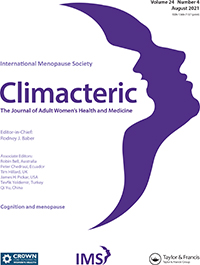
Randomised Controlled Trial
Pumpkin seed oil supplementation may increase good cholesterol levels, lower diastolic blood pressure, and alleviate menopausal symptoms in postmenopausal women.
Gossell-Williams M, Hyde C, Hunter T, Simms-Stewart D, Fletcher H, McGrowder D, Walters CA

Randomised Controlled Trial
Acupuncture can provide pain relief to patients with plantar fasciitis.
Shi Ping Zhang , Tsui-Pik Yip, Qiu-Shi Li

Clinical Study
Chinese acupuncture is safe and can be efficient in alleviating pain in patients suffering from temporomandibular disorder without clear joint pathology.
Noiman M, Garty A, Maimon Y, Miller U, Lev-Ari S.
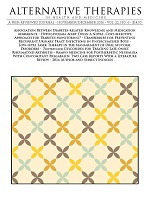
Systematic Review
The evidence reviewed previously suggests that acupuncture is of similar efficacy as carbamazepine but with fewer adverse effects in treatment of trigeminal neuralgia.
Liu H, Li H, Xu M, Chung KF, Zhang SP
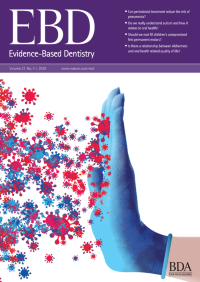
Review Article
There is limited evidence that acupuncture is more effective than sham acupuncture in alleviating pain and masseter muscle tenderness in temporomandibular disorders.
Jens C Türp
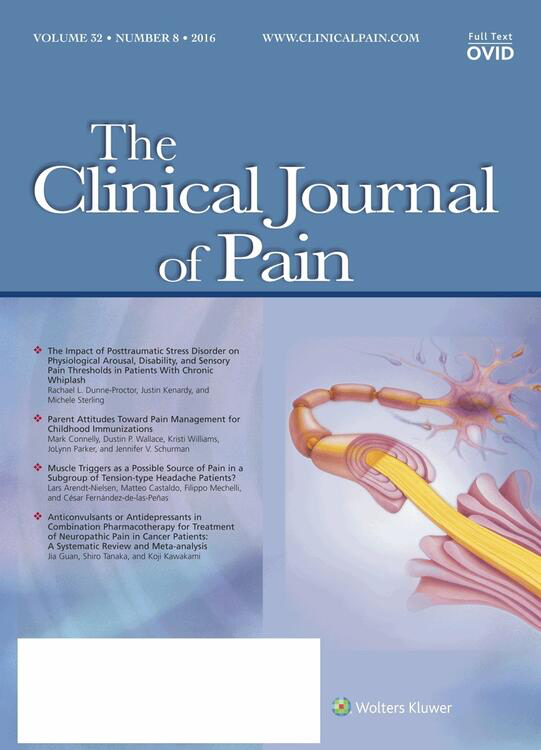
Systematic Review
Acupuncture is a reasonable adjunctive treatment for producing a short-term analgesic effect in patients with painful temporomandibular disorder symptoms.
La Touche R, Goddard G, De-la-Hoz JL, Wang K, Paris-Alemany A, Angulo-Díaz-Parreño S, Mesa J, Hernández M
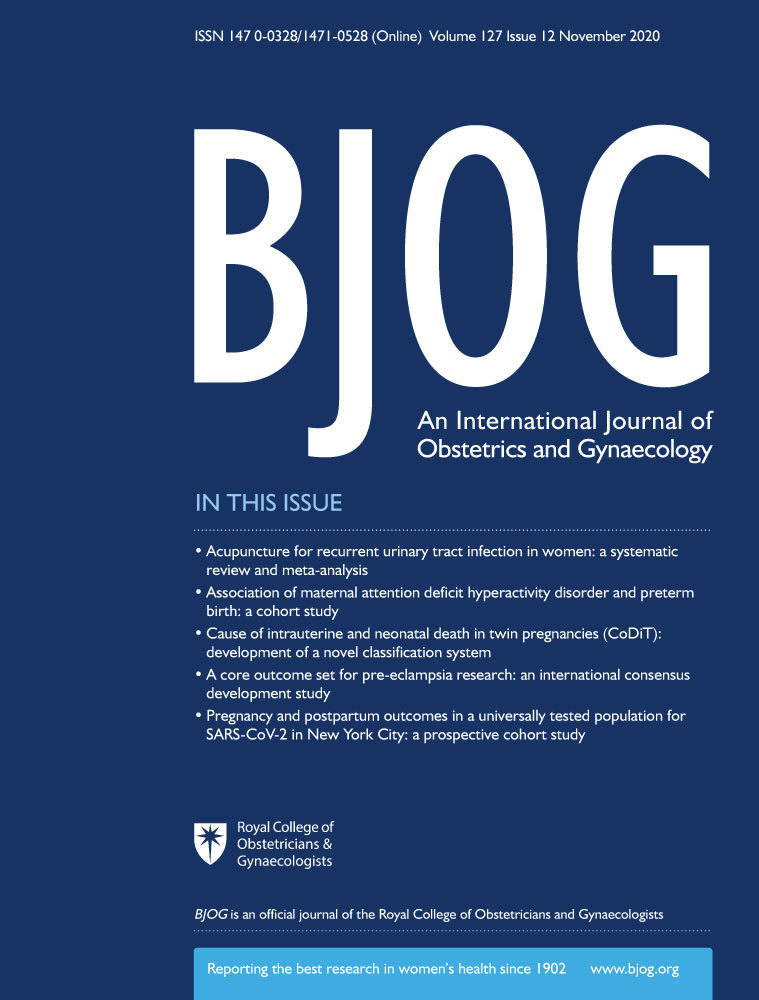
Systematic Review
Acupuncture ineffective for labour pain relief:
S-H Cho, H Lee, E Ernst
Executive Summary
Write an executive summary in the form of a blog article on the topic of "Research into Chinese medicine treatment for Pain" summarising the research below and using language that can be easily understood by patients and avoiding medical jargon using a professional and caring tone of voice.
Write an executive summary in the form of a blog article on the topic of "Researched Chinese medicine treatments for Pain" summarising the research below in an objective and easy to understand way, and using language that can be easily understood by patients. Group the article into Chinese medicine treatments first, followed by nutrition and other treatments. Avoid using medical jargon and use a professional and caring tone of voice.
Write me a concise but easy to understand executive summary on the topic of "Chinese medicine treatments for Pain" based on the following research that I will give you. Your summary should be 2 paragraphs long in Australian English spelling and include references to the studies.
A Clinical Study published in 2025 in the journal Scientific Reports found that Jujube syrup presented improved results in treating pediatric functional constipation compared to polyethylene glycol, demonstrating a potentially effective and safe alternative treatment. The researchers conducted a double-blind, randomized clinical trial involving children aged 2-10 years old diagnosed with functional constipation. These children were selected from patients referred to the gastroenterology clinic of 17-Shahrivar Hospital in Rasht, Iran. The eligible candidates were divided into two groups, each receiving either polyethylene glycol (PEG) or Ziziphus jujuba syrup (ZS) in a dosing range of 1-5 cc/kg/day. The patients were monitored over a three-month period, with bi-weekly check-ups in the first month, followed by monthly check-ups for the next two months. Additionally, liver and kidney function tests, as well as blood sugar levels, were verified at the start and end of the study. Out of 90 qualified children, 32 patients in the PEG group and 30 in the ZS group finished the follow-ups. The therapeutic response score in the group administered ZS showed a distinct improvement compared to those given PEG. Similarly, the average number of encopresis and pain scores, as measured by a visual analog scale, showed a significant reduction in the ZS group compared to the PEG group. Other indices, such as frequency of defecation and medication adherence, also showed a noticeable improvement in the ZS group. With only a few self-limiting side effects reported in the PEG group, it was determined that ZS provides a potential choice for functional constipation treatment without any adverse events or liver and kidney injury.
A Systematic Review published in 2023 in the journal Nutrients found that Vitamin D supplementation significantly reduces pain levels in people suffering from primary dysmenorrhea. In the methodology of this study, a systematic database search was conducted for randomized controlled trials assessing the effects of oral vitamin D supplementation on relieving the symptoms of primary dysmenorrhea. The trials included comparisons of vitamin D treatment with placebo or standard care. Pain levels due to dysmenorrhea were gauged using a visual analogue or numerical rating scale. Analyses were conducted using a standardized mean difference in a meta-analysis. The results indicated that pain levels were considerably lower in participants who took vitamin D compared to the placebo, showcasing vitamin D's effectiveness in managing dysmenorhea-related pain. Notably, these relief effects were recorded regardless of the vitamin D administration duration (more or less than 70 days) and frequency, provided that the average weekly dosage was above 50,000 IU. This suggests that the significant pain relief provided by vitamin D supplementation could make it a potent alternative treatment for primary dysmenorrhea.
A Randomised Controlled Trial published in 2023 in the journal Bioscientia Medicina : Journal of Biomedicine and Translational Research found that Dark chocolate decreases the severity of menstrual pain in female hospital employees. The researcher undertook an experimental study with 32 female employees of the Cabangbungin General Hospital, Bekasi Regency, as participants. After being selected, these subjects were systematically analyzed in both singular and joint approaches using SPSS version 25. The results supported the study's initial hypothesis that dark chocolate can alleviate menstrual pain. The statistical test results used confirm a significant effect of dark chocolate on dysmenorrhea, demonstrating a fundamental link between the consumption of dark chocolate and the easing of menstrual pain in subjects.
A Systematic Review published in 2023 in the journal Journal of Tissue Viability found that Honey dressing significantly promotes healing and reduces recovery time in managing diabetic foot ulcers. For the research methodology, the study used a combination of randomized controlled trials, quasi-experimental, and cross-sectional studies. Only the randomized controlled trials and quasi-experimental studies were chosen for the meta-analysis, while observational studies were subject to a descriptive analysis. In terms of the results discussion, the meta-analysis indicated that using honey as a dressing for diabetic foot ulcers resulted in a reduction in wound recovery time, pain experienced, duration of hospital stay, and an acceleration in wound granulation. Therefore, it was concluded that honey dressing is an effective intervention for accelerating healing in diabetic foot ulcers.
A Randomised Controlled Trial published in 2023 in the journal Journal of Ethnopharmacology found that Gui Zhi Fu Ling Wan significantly reduced menstrual pain in primary dysmenorrhea patients with heat-burning blood-stasis syndrome, without notable adverse effects. In the methodology, a randomized, double-blinded, placebo-controlled trial was conducted. Eligible patients suffering from primary dysmenorrhea with heat-burning blood-stasis syndrome were randomly placed into two groups – one received Guizhi Fuling Wan, the other a placebo, administered twice daily across three menstrual cycles, with a 3-month follow-up. The primary measurement was the change in pain intensity from the beginning to the 6th month, gauged by using a Visual Analog Scale. In the discussion of results, data showed that the pain intensity (measured using Visual Analog Scale) significantly decreased in the Guizhi Fuling Wan group compared to the placebo over the 6 month period. Secondary measurements also indicated a greater reduction in Cox Menstrual Symptom Scale, Self-rating Anxiety Scale, and traditional Chinese medicine syndrome scores in the Guizhi Fuling Wan group compared to the placebo. However, there was no significant difference between the two groups when measuring the Self-rating Depression Scale. Furthermore, no serious adverse events were observed during the trial.
A Systematic Review published in 2023 in the journal Medicine found that Tuina therapy for chronic low back pain indicates potential pain relief and reduced disability but doesn't improve quality of life Tuina's efficacy and safety for chronic non-specific low back pain demonstrates its potential for reducing pain and physical disability but not improving quality of life; adverse events were mild and self-resolving, suggesting Tuina's relative safety.
A Systematic Review published in 2023 in the journal Medicine found that Tuina massage for chronic low back pain reveals promising results amid methodological considerations The study confirms the potential of Tuina in mitigating low back pain-related pain and physical disability, though not significantly impacting quality of life. Reported adverse events, such as localized bruising and pain, were transient and self-resolving, indicating Tuina's relatively safe nature.
A Randomised Controlled Trial published in 2023 in the journal Journal of Food and Dairy Sciences found that Cinnamon, ginger, and mint enhanced chocolates effectively reduce menstrual pain and improve blood iron levels without increasing body weight or negatively affecting cholesterol. The methodology of the study involved a sample of 48 female student volunteers, aged 18-25, from Mansoura University who were experiencing dysmenorrhea. These volunteers were divided into eight groups of six and each group was given a different type of chocolate: regular chocolate, chocolate without herbal powder, chocolate with cinnamon powder, chocolate with cinnamon oil, chocolate with ginger powder, chocolate with ginger oil, chocolate with mint powder, and chocolate with mint oil. Discussion of the results demonstrated that the consumption of chocolates supplemented with cinnamon, ginger, and mint powders and their respective essential oils led to a significant improvement in participants' hemoglobin scores compared to a control group which consumed normal chocolate. Furthermore, it was found that these chocolates had a positive influence on serum total cholesterol, triglycerides, high-density lipoprotein, and low-density lipoprotein scores. Importantly, chocolate consumption did not lead to an increase in the participants' body mass index, proving that these chocolate variants could reduce menstrual pain and lift blood iron levels without instigating weight gain or having adverse effects on cholesterol levels.
A Randomised Controlled Trial published in 2023 in the journal Medical Acupuncture found that Acupuncture combined with a home-exercise program significantly reduces pain in patients suffering from plantar fasciopathy more than just a home exercise program. A randomized controlled trial was set up at two U.S. Air Force military treatment facilities using subjects over 18 years old suffering from plantar fasciopathy. In total, 94 subjects were divided into two groups; those who only did home exercises and those who did home exercises and received acupuncture. The intervention group got acupuncture every other week, four times in total. There was no blinding and after an initial 12-week study, patients in the control group were given an option to cross over to acupuncture. The main focus of the trial outcomes was on reduction of pain and improved functioning, with scores taken at baseline, every visit, and six weeks after treatment. The outcome revealed that the control group had a notable reduction in pain at the end of the study, the intervention group had over a 50% reduction in pain immediately after every acupuncture session and a sustained reduction in pain at the termination of the study. In addition, subjects who crossed over to acupuncture from the control group observed a considerable drop in their pain scores instantly as well as at the 12 weeks post-acupuncture point. However, while function scores did enhance, there was no significant statistical difference.
A Systematic Review published in 2023 in the journal Frontiers in Medicine found that Acupuncture provides speedy and effective pain relief for renal colic, surpassing traditional drugs with fewer side effects suggesting its potential as a safe and efficient option for acute pain treatment Acupuncture proves effective for relieving pain in renal colic, demonstrating rapid onset of analgesic action and lower pain scores at 30-60 minutes compared to conventional treatments. The mechanism of action remains unclear but appears to involve nervous system modulation, endocrine regulation, and muscle relaxation. Compared to NSAIDs and opioids, acupuncture offers a safer, less risk option with potential for effective pain relief.
A Randomised Controlled Trial published in 2023 in the journal Journal of Tropical Pharmacy and Chemistry found that The combination of dark chocolate with herbs could be one of the therapies for period pain. This test was conducted on 30 respondents who were divided into three groups, namely the positive control group (K), dark chocolate (C), and a combination of dark chocolate with herbs (C+H). Dark chocolate was combined with herbal ingredients consisting of turmeric, red ginger, moringa, sambiloto extract, and honey as a beverage 250 mL. The study is quantitative research with quasi-experimental method. Pain measurement using the Numeric Rating Scale (NRS) sheet was given before and 2 hours after treatment. The data was analyzed using paired t-test. State the results of the values obtained the combination of dark chocolate and herbs showed a significant reduction in pain before and after treatment (p<0.05).
A Randomised Controlled Trial published in 2023 in the journal Topics in Geriatric Rehabilitation found that Auricular acupuncture relieved pain and decreased disability more effectively than physiotherapy for frozen shoulder treatment. The research was conducted through a randomized clinical trial involving three parallel groups in an outpatient clinic at a university hospital. The 116 participants, suffering from a frozen shoulder, were randomly allocated to three groups where they underwent treatments of physiotherapy, local acupuncture, or auricular acupuncture. Assessment tools like the Shoulder Pain and Disability Index questionnaire and measures of the shoulder's active and passive ranges of motion were used to evaluate the effects of treatments both before and after their implementation. The results of the study revealed that the most substantial improvements in active and passive ranges of motion including abduction, flexion, and passive external rotation were brought about by physiotherapy. Despite this, instances of pain reduction were more successfully achieved with acupuncture treatments, with auricular acupuncture leading the pack. In addition to this, auricular acupuncture made significant strides in improving the functional abilities of patients when compared to its counterpart treatments. Throughout the study, there were no reported side effects from any of the treatment approaches used.
A Randomised Controlled Trial published in 2022 in the journal European Journal of Integrative Medicine found that Both dark chocolate and music medicine significantly reduced menstrual pain and anxiety in young women with period pain. Mean menstrual pain intensity and mean anxiety level in the dark chocolate and music group decreased significantly after the intervention. No significant difference was observed in the control group. The difference between menstrual pain intensity and anxiety levels of the groups was tested by analysis of variance, and the standardized effect size calculated at 95% confidence level, and α = 0.05 was 0.35 and 0.42, respectively.
A Systematic Review published in 2022 in the journal Phytomedicine found that Acupuncture shows positive effects on cancer-related issues; research calls for further exploration of acupuncture's efficacy and safety, especially for conditions like depression, offering further potential support for cancer survivors This review summarizes evidence from 51 systematic reviews on acupuncture for cancer-related conditions. Acupuncture was found to have positive effects on various conditions such as cancer-related pain, fatigue, insomnia, nausea, and more. The methodological quality of the reviews was generally low, and some biases were identified. Acupuncture was considered safe, with only mild adverse events reported. In clinical practice, acupuncture can be a beneficial option for cancer survivors for certain conditions.
A Systematic Review published in 2022 in the journal Dermatologic Therapy found that Long Dan Xie Gan formula used as an adjuvant therapy may hasten skin healing, relieve pain symptoms, and prevent persistent pain in acute herpes zoster patients. For the methodology, multiple databases such as PubMed, Embase, Cochrane Library, China National Knowledge Infrastructure, Chinese Scientific Journal Database, and Wanfang were searched by two independent authors for relevant randomized controlled trials (RCT) until July 31, 2021. The chosen studies analysed the additive effects of LDXG formula, in different forms such as decoction, capsule, or pill, for acute herpes zoster management. Nine RCTs fitting the criteria were selected, totaling 821 patients for the meta-analysis. Concerning the results, statistical analysis using a random effect model revealed that adding LDXG formula to conventional therapy noticeably shortened the time of blister resolution, crust formation, and pain resolution. It also reduced the pain intensity and incidence of lingering pain for those with acute herpes zoster in comparison to conventional treatment alone. Yet, this evidence was assessed as being of very low to moderate certainty, indicating interpretation of these results should be cautious due to statistical heterogeneity and/or an unclear risk of bias existing.
A Practice Guideline published in 2022 in the journal Perspectives on Integrative Medicine found that Acupuncture is safe and may be a cost-effective treatment for shoulder pain. There were 131 statements recommending the use of acupuncture for shoulder pain across 12 subtypes of shoulder pain. The most common statements were for non-specific ‘shoulder pain.’ There were 11 statements against the use of acupuncture for shoulder pain and three subtypes of shoulder pain. The level of evidence in studies of acupuncture treatment for shoulder pain is low, therefore, further research is needed. Recommendations for the use of acupuncture for shoulder pain are increasing but lag behind those for other pain problems such as low back pain.
A Clinical Study published in 2022 in the journal Phytomedicine found that Acupuncture has shown potential in enhancing structural nerve regeneration in Chemotherapy-induced peripheral neuropathy, leading to subjective improvements and positive neurological findings. This research was conducted at the HanseMerkur Center for TCM at the University Medical Center, Hamburg-Eppendorf. Sixty patients who had been diagnosed with Chemotherapy-induced peripheral neuropathy underwent acupuncture treatment. Patients were selected based on physical examinations, subjective and quantitative evaluations conducted using nerve conduction studies. They were then randomly divided into two groups. The first group received a ten-week acupuncture treatment while the latter was put on a waiting list. After fourteen weeks, evaluations were carried out on both groups. The second group then received the acupuncture treatment while group one was put on the waiting list. Both groups were subjected to another evaluation after 28 weeks. The results showed noticeable improvements in sural sensory nerve amplitude and sural nerve conduction velocity among patients who received acupuncture treatment. This can be seen in the subjective improvements reported by the patients in the form of reduced burning pain, cramps, numbness, frequency of symptoms and improved gait. Significantly positive findings from the physical examination, including blind walking, heel-to-toe walking, and distal pallhypesthesia further bolster the potential benefits of acupuncture treatment in managing Chemotherapy-induced peripheral neuropathy.
A Randomised Controlled Trial published in 2022 in the journal The Open Public Health Journal found that Chamomile sachets could be a viable alternate treatment for primary dysmenorrhea, as they've shown similar effects to mefenamic acid in reducing pain and bleeding. In the methodology of this study, the researchers took 200 female students diagnosed with primary dysmenorrhea and divided them randomly into two groups. One group was given mefenamic acid and the other group was administered chamomile. The intensity of pain, related symptoms, and bleeding were assessed using various measurement scales. Evaluating the results, both chamomile and mefenamic acid made a noticeable impact in decreasing the intensity of pain and bleeding. However, it was found that chamomile displayed a greater effectiveness in reducing the symptoms of primary dysmenorrhea, presenting it as a promising substitute treatment avenue.
A Systematic Review published in 2022 in the journal Frontiers in Medicine found that Electroacupuncture may be more effective than manual acupuncture for managing frozen shoulder, with larger effect sizes in terms of pain, function, and response rate. This review included thirteen studies involving 936 patients. The EA group exhibited improvements in FS pain, function, and response rates over the manual acupuncture (MA) group. As an adjunct treatment, EA improved FS pain compared to the control treatments. No adverse effects were reported. EA was found to be an efficacious method for treating FS in this review. The meta-analysis showed that EA led to a greater reduction of FS pain than MA did, although with a very low certainty of evidence. In comparison to MA, EA led to a superior degree of functional improvement in FS patients, with a very low certainty of evidence. In comparison to MA, EA enhanced the response rate of FS, again with a low certainty of evidence. Compared with WM used in isolation, EA plus WM reduced FS pain with a low certainty of evidence.
A Systematic Review published in 2022 in the journal Alimentary Pharmacology & Therapeutics found that Peppermint oil proved more effective than placebo in treating irritable bowel syndrome symptoms, but with an increased rate of adverse events. In evaluating the effectiveness and safety of peppermint oil for irritable bowel syndrome, the researchers searched medical literature for randomised controlled trials involving peppermint oil treatments in IBS. A systematic review and analysis included trials up to the date of April 2nd, 2022. The team assessed the efficacy and safety of the peppermint oil treatment based on various factors including effect on global IBS symptoms and abdominal pain along with incidence of adverse events or gastro-oesophageal reflux. From the literature review, 10 suitable randomised control trials were identified, encompassing a total of 1030 patients. The results showed that peppermint oil performed better than a placebo in lessening overall irritable bowel syndrome symptoms and reducing abdominal pain. However, this was coupled with a higher rate of recorded adverse events in patients who were administered peppermint oil. Despite the positive performance of peppermint oil over placebo, the evidence quality considered for this conclusion was very low.
A Randomised Controlled Trial published in 2022 in the journal Explore: The Journal of Science & Healing found that Inhalation and massage therapy with lavender essential oil significantly mitigates perceived labour pain in women. The study was implemented using a random controlled trial on pregnant women divided into three groups – a control group, a group for lavender essence inhalation and a third group for lavender essence massage. After being divided into their respective groups, the first stage of labour was divided into three phases – early, active and transition – during which the interventions were applied. In the massage group, sacral compression and lower back massage were given, incorporating 2 drops of lavender oil in each labour phase. For the inhalation group, 2 drops of lavender oil were dripped onto the palms of the participants, who were then asked to inhale it for 3 minutes. Individual information was gathered through formats like the Personal Information Form, Visual Analogue Scale and Postpartum Assessment of Women Survey. The results showed that women who underwent inhalation and massage therapies with lavender essential oil experienced less severe labour pain as compared to the control group. It was also discovered that the lavender oil inhalation was notably beneficial during the latent phase of labour whilst massage therapy demonstrated greater effectiveness during the active and transition periods. Therefore, incorporating lavender oil via massage therapy and inhalation methods during labour and delivery is highly recommended as a supplementary method to manage labour pain.
A Systematic Review published in 2022 in the journal Health Care for Women International found that Cold cabbage leaf application was effective in reducing breast pain. The systematic review and meta-analysis aimed to assess the impact of cold cabbage leaf application on postpartum breast engorgement and pain. After a thorough search of Turkish and English databases, eight studies were included for analysis out of 25,996 results. The pooled results showed that cold cabbage leaf application led to a significant reduction in breast pain, but did not demonstrate a significant effect on breast engorgement. The researchers concluded that while this method effectively alleviates breast pain, further experimental studies are needed to better understand its impact on breast engorgement.
A Systematic Review published in 2022 in the journal Healthcare found that Acupuncture showed a significant effect in the management of fibromyalgia patients. It reduced pain, depression, and enhanced quality of life. There were 23 included RCTs. The total sample size was 1409 patients. Compared with the sham/placebo group, the network analysis showed the highest improvement in the quality of life in the acupuncture group standardized mean difference, and then in the physiotherapy group. For the pain, there was a significant reduction with acupuncture, compared with sham/placebo. Regarding depression, it showed a significant reduction with acupuncture compared with sham/placebo. Finally, for stiffness, it showed no significant differences in the stiffness between acupuncture, fluoxetine, and physiotherapy compared with sham/placebo.
A Systematic Review published in 2022 in the journal Journal of Orthopaedic Surgery and Research found that Individualised acupuncture and standard acupuncture combined with TENS were the most effective protocols for the non-pharmacological management of chronic aspecific low back pain based on measures of pain and disability, compared to sham treatment. The results of this Bayesian network meta-analysis show that individualised acupuncture and standard acupuncture combined with Transcutaneous Electrical Nerve Stimulation (TENS) are the most effective protocols for the non-pharmacological management of chronic aspecific low back pain (LBP), with the highest improvement in pain and quality of life compared to sham treatment.
A Systematic Review published in 2022 in the journal International Journal of Environmental Research and Public Health found that Dietary strategies, such as caloric restriction and ketogenic diets, can alleviate chronic pain and enhance quality of life. This systematic review selected 16 articles from various databases including PubMed, Web of Sciences, ProQuest, and Scopus that were published within the last 6 years. These consisted of randomized clinical trials (RCTs), observational studies, and systematic reviews evaluating the effectiveness of different dietary strategies in the treatment of chronic pain. A range of assessment scales—PEDro, PVI, QUALSYT and the Quality Assessment Tool of Systematic Reviews scale— were utilized to gauge the risk of bias in these studies. The findings indicate an inconclusive consensus on the impact of an intermittent fasting (IF) diet on pain improvement. However, a caloric restriction diet emerged as a potential long-term treatment option for pain. Additionally, time-restricted food and ketogenic diets showed promising results in improving life quality in chronic conditions. Despite some studies indicating opposite results, the majority of the selected articles exhibited good methodological quality on their respective assessment scales.
A Review Article published in 2022 in the journal Advances in Nutrition found that Consuming kiwifruit, particularly the green variety, can effectively alleviate upper gastrointestinal symptoms like abdominal discomfort, pain, and indigestion. The research undertook a systematic scoping review of three electronic databases from 1947 until January 2021. The team searched for clinical trials that investigated the effects of either green or gold kiwifruit or their compounds on upper gastrointestinal symptoms. They focused on the studies that had the symptom relief as secondary outcomes in healthy participants or those with functional constipation or irritable bowel syndrome with constipation. The outcomes were analyzed based on the type of measurement tools used; one being the Gastrointestinal Symptom Rating Scale (GSRS) and the others being non-GSRS methods. The analysis unveiled that out of the identified 12 clinical trials, with a total of 661 participants, only five used the GSRS to assess symptom relief. Green kiwifruit showed notable results in reducing abdominal discomfort and pain. Kiwifruit consumption, in general, appeared to diminish indigestion. While the number of studies reporting on symptom relief using a comparable measurement was limited, the evidence for kiwifruit's positive efficacy on gastrointestinal symptom relief remained consistent.
A published in 2022 in the journal Current Pain and Headache Reports found that Acupuncture is a low-risk method that has the potential to enhance perioperative analgesia, decrease opioid requirement, and reduce unwanted side effects of anesthesia, surgery, and opioid administration such as nausea/vomiting. Patients undergoing abdominal, spine/neuro, and gynecologic pelvic surgery generally benefit from acupuncture. Out of the various acupuncture techniques, electroacupuncture, transcutaneous electric acupoint stimulation, and traditional total body acupuncture seem to be most promising as adjuncts to multimodal perioperative analgesia. Benefits include improved analgesia and/or reduced narcotic requirements, decrease in PONV, and shorter time to return of bowel function.
A Review Article published in 2022 in the journal Multiple Sclerosis and Related Disorders found that Acupuncture, when used as an integrative therapy in conjunction with traditional treatments, significantly improves the quality of life in patients with Multiple Sclerosis. In the methodology of this study, the PUBMED database was meticulously searched in September 2021, for English articles or at least ones with English abstracts, surfacing every article published from the inception of the literature up until the latter part of 2021. The search terms included keywords such as 'acupuncture', 'electroacupuncture', and 'multiple sclerosis' in the titles and abstracts. Out of the 75 articles discovered, just a little over a third, precisely 31 articles, were incorporated into this study. The discovery from the methodology outlined was that acupuncture provides an array of benefits for Multiple Sclerosis patients. These benefits are primarily seen in the regulation of the neuro-immune system, enhancement of life quality, fatigue reduction, improved bladder functionality, diminished limb spasm and pain, deceleration of disease progression, and decreased relapses. Traditional Chinese acupuncture and scalp acupuncture were observed to be particularly helpful in alleviating Multiple Sclerosis symptoms such as fatigue, neural functional deficits, pain, gait abnormalities, and bladder dysfunction, alongside reducing relapse occurrences. This makes acupuncture a viable integrated therapy option for patients with Multiple Sclerosis.
A Systematic Review published in 2022 in the journal BioMed Research International found that Acupuncture can reduce pain and improve functional activities in patients with knee osteoarthritis, proving particularly beneficial for chronic sufferers and enhancing their quality of life. This study amassed randomized controlled trials from various databases including PubMed, Embase, and others to assess the effectiveness of acupuncture in alleviating the symptoms of knee osteoarthritis. The researchers conducted a meta-analysis using the Cochrane systematic review method by integrating Review Manager 5.4 and TSA 0.9.5.10 beta software, in conjunction with the GRADE approach for quality assessment of the evidence. They also implemented a trial sequential analysis to manage random errors and calculate the required information size. The meta-analysis included eleven randomized controlled trials involving 2484 patients. The results indicate a positive effect of acupuncture on reducing pain and enhancing patient functionality. Conversely, stiffness symptoms were not significantly alleviated by acupuncture. Moreover, the analysis demonstrated no substantial difference between the effectiveness of acupuncture and sham procedures in improving the psychological aspects of patients' quality of life. Furthermore, physical health improvement, as measured by SF-36 or SF-12, was not significantly different between groups receiving real or sham acupuncture. The trial sequential analysis graphs showed cumulative Z-curves crossing the traditional statistical level favoring acupuncture, highlighting its potential usefulness. Therefore, acupuncture shows promise as an alternative therapy for patients with knee osteoarthritis.
A Systematic Review published in 2022 in the journal Frontiers in Surgery found that Acupuncture, particularly electro-acupuncture, may alleviate post-hemorrhoidectomy pain at certain stages, but overall effectiveness remains inconclusive. The study conducted a systematic review to assess acupuncture's effect on pain experienced post-hemorrhoidectomy. To compile the required data, the researchers closely searched through nine databases, such as PubMed and Embase, for randomized controlled trials (RCTs) home in on information concerning pain level after the surgery, the dosage of rescue analgesic medication used, patients' quality of life, and details about adverse events. Extracted data was analyzed narratively. The systematic review included four RCTs that encompassed a total of 275 patients. One observed study demonstrated that patients who underwent electro-acupuncture recorded significantly lower pain scores on the visual analog scale post-surgery and during their first defecation compared to those in the sham acupuncture group. Similar trends appeared on the verbal rating scale and Wong-Baker Faces scale but at varying time points. Another study displayed that electro-acupuncture was successful in relieving pain during defecation, up to a week following surgery, more so than local anesthetics. However, two trials that compared manual acupuncture with active medications for post-hemorrhoidectomy pain demonstrated inconsistent results.
A Systematic Review published in 2022 in the journal Integrative Medicine Research found that Some complementary approaches, such as massage and herbal ointments, show promise in reducing postpartum pain. This passage discusses a systematic review aimed at examining the effectiveness and safety of non-pharmacological methods for managing postpartum pain in women. The review included 30 trials involving both first-time and experienced mothers who experienced pain in the two weeks following childbirth. The primary focus was on pain reduction. The review found that massage showed a reduction in pain for women who had undergone caesarean births within the first 24 hours postpartum and at seven days postpartum. Additionally, herbal ointments were found to reduce perineal pain for women who had received an episiotomy within the first 24 hours and at 14 days postpartum. However, the number of trials reporting on safety was limited, and the overall quality of evidence was deemed very low. The conclusion emphasizes the need for further high-quality trials to assess the safety and effectiveness of herbal ointment and massage during the early postpartum period.
A Systematic Review published in 2022 in the journal Evidence-Based Complementary and Alternative Medicine found that Traditional Chinese medicine, including acupuncture, can provide superior pain relief and faster recovery for HIV-related Herpes Zoster compared to regular drugs. The review began by searching nine electronic databases for randomized controlled trials focused on the use of traditional Chinese medicine in treating HIV-associated Herpes Zoster. Two independent authors extracted data on interventions and outcomes, and the Cochrane risk-of-bias tool was used to evaluate the quality of the trials. Meta-analyses were subsequently performed using specific software. Results of the review showed that in general, the use of Chinese herbal medicine resulted in lower pain intensity and shorter herpes-related pain duration. Additionally, patients treated with this type of medicine and combined treatments recorded lower incidences of postherpetic neuralgia. The cure rate, defined as the complete absence of pain and herpes, also significantly improved with acupuncture and Chinese herbal medicine, compared to regular drugs. Notably, four trials reported on side effects, and no severe adverse events were mentioned.
A Clinical Study published in 2022 in the journal Jurnal Kebidanan found that Lavender aromatherapy is more effective in reducing pain intensity during active Phase I labor than lemon aromatherapy. The methodology employed for this study was a quasi-experimental format utilizing a non-equivalent control group pretest and posttest design. The research was conducted in the City of Mataram with a total of 30 mothers, 15 of whom were given lavender aromatherapy and the remaining 15 given lemon aromatherapy. All participants were selected using a total sampling technique. The results showed a marked decrease in pain intensity for those mothers who were given lavender aromatherapy compared to those who received lemon aromatherapy, during the active phase I of labor. Despite both groups displaying a significant decline in discomfort according to the posttest data, the average decrease was more pronounced for the group that used lavender aromatherapy. This evidence advocates for the further exploration of lavender's potential uses in childbirth pain relief management.
A Randomised Controlled Trial published in 2022 in the journal Evidence-Based Practice found that Chamomile was found to be less effective than mefenamic acid for relieving cyclic menstrual pain. In the methodology deployed, the researchers conducted a randomized controlled trial to compare the effectiveness of chamomile and mefenamic acid in treating menstrual pain. The patients involved in the study were randomly assigned to receive either chamomile or mefenamic acid as a form of treatment for their cyclic menstrual discomfort. In the subsequent discussion of results, it was determined that chamomile was not as effective as mefenamic acid in alleviating menstrual pain. The patients who were administered chamomile did not experience as much relief from their discomfort as those who were given mefenamic acid. Despite chamomile's widely acknowledged health benefits, in this case, it did not prove as successful as the more traditional treatment method in providing sufficient pain relief.
A Systematic Review published in 2022 in the journal Medical Acupuncture found that Acupuncture may be effective and safe for short-term pain reduction and functional improvement in hand-and-wrist conditions. In the 10 included RCTs (622 participants), 6 had a low risk of bias. For cryotherapy-induced pain, 1 trial showed significant pain reduction post treatment. For rheumatoid arthritis, 1 trial shown significant pain reduction and function improvements post treatment and short-term. For carpal tunnel syndrome, 1 trial showed significant pain reduction and functional improvements intermediate-term, while 3 trials suggested no significant difference. For tenosynovitis, 1 trial showed significant pain reduction and function improvements short-term. For poststroke impairments, 1 trial showed significant function improvements post treatment and at short-term, while another trial suggested no significant difference. No significant improvements were noted for trapezio-metacarpal joint osteoarthritis. In 2 trials, adverse effects occurred in patients with carpal tunnel syndrome; yet acupuncture appeared to be relatively safe.
A Systematic Review published in 2022 in the journal Journal of Pain Research found that Acupuncture is more effective than control treatment in alleviating pain and improving well-being in both the short- and long-term in patients with fibromyalgia. This meta-analysis included 12 studies with 715 participants comparing the effects of real acupuncture with control intervention. The results indicated that acupuncture could effectively relieve pain and improve well-being in patients with FM, with both short - and long-term benefits. However, acupuncture had no effect on fatigue, sleep, physical function, and stiffness compared with control treatment. The subgroup analysis indicated that the real acupuncture group produced more analgesic effects than the control group, with different number of sessions, types of acupuncture, and stimulation. In addition, acupuncture was not associated with serious reactions and had a reliable safety profile.
A Network Pharmacology published in 2022 in the journal Annals of Medicine found that The Gui Zhi-Shao Yao herb pair in traditional Chinese medicine potentially treats chronic pain, anxiety, and depression through interactions with nine key targets. The methodology in this research utilised network pharmacology to explore the active components of the "Gui Zhi-Shao Yao" herb pair and their possible targets. Initially, 15 active compounds were identified through a series of analysis which revealed about 130 potential targets. By considering the intersections between the targets of the "Gui Zhi-Shao Yao" herb pair and chronic pain, anxiety disorder, and mental depression, nine vital targets were identified and listed in order of importance. The results discussion revealed that the "Gui Zhi-Shao Yao" herb pairing acted on the nine identified key targets to alleviate chronic pain, anxiety, and depression. Gene ontology and pathway analysis demonstrated that there were 11 primary pathways, including AGE-RAGE signalling pathway, IL-17 signalling pathway, and TNF signalling pathway. These pathways appear to be actively involved in the pathological processes, providing a holistic understanding of how the "Gui Zhi-Shao Yao" herb pair functions therapeutically.
A Systematic Review published in 2022 in the journal International Journal of Gynecology & Obstetrics found that Numerous complementary treatments have been used to alleviate the symptoms of endometriosis, but only acupuncture has demonstrated a significant improvement in outcomes. The complementary interventions studied were acupuncture, exercise, electrotherapy, and yoga. All were inconclusive in affirming benefit, but demonstrated a positive trend in the treatment of symptoms of endometriosis. Meta-analysis of acupuncture showed a significant benefit in pain reduction as compared with placebo.
A Randomised Controlled Trial published in 2021 in the journal Pharmaceuticals found that Medical-grade honey outperforms conventional treatment in healing cold sores, reducing healing time and alleviating associated symptoms like pain and itching. The methodology in this study involved a crossover trial with a group of 29 patients with recurrent cold sores. The majority of these patients experienced four or more episodes per year, so they served as their own control group. These patients applied a medical-grade honey product called L-Mesitran Soft to their cold sore either at the onset of symptoms or upon the appearance of the blister. After the healing process, they answered a questionnaire, assessing the effectiveness of the honey treatment based on healing time, pain, and itching level. Researchers found that the average healing time was significantly less with the honey treatment in comparison to conventionally used treatments. The honey treatment led to faster healing in 86.2% of all patients and increased subjective healing score in 79.3% of the patients. Moreover, patients experiencing pain and itching with cold sores reported a reduction in these symptoms when treated with medical-grade honey. Additionally, all the patients expressed a preference for the honey treatment over conventional ones for future cold sores. This suggests the potential of MGH as a superior alternative treatment for cold sores.
A Systematic Review published in 2021 in the journal Medical Acupuncture found that Acupuncture displays potential as a safe and effective treatment for foot and ankle pain, providing pain relief and functional improvement. The researchers gathered Randomized Controlled Trials (RCTs) from 6 major English databases, and relevant systematic reviews manually via Google Scholar. The selected RCTs studied the comparison of acupuncture with various types of sham acupuncture and nonactive or waitlist controls in terms of pain intensity, functional status, and general quality of life. All procedures including study screening, data extraction, risk of bias assessment, and quality assessment were conducted independently. Instead of performing a quantitative synthesis, the team opted for a narrative synthesis as quantitative pooling wasn't fit for the collected data. Four RCTs involving a total of 211 participants were included. Due to distinct clinical heterogeneity involving all the outcomes, the team did not conduct a quantitative analysis. Using a quality grading system, all outcomes were rated as supported by low or very low-quality evidence. Despite this, the study still showed acupuncture is potentially effective for treating participants with plantar fasciitis or Achilles tendinopathy, in terms of pain relief and functional status improvement, over short- and intermediate-term follow-ups. Notably, no adverse events linked to acupuncture use were reported.
A Systematic Review published in 2021 in the journal Complementary Therapies in Medicine found that Turmeric curcuminoids are associated with better pain relief than NSAIDs in knee osteoarthritis. The meta-analysis results showed that curcuminoids were significantly more effective than comparators regarding visual analogue scale (VAS) and Western Ontario and McMaster Universities Arthritis Index (WOMAC) pain scores. However, no significant difference in pain relief or AEs between the high-dose (daily dose ≥1000 mg or total dose ≥42 gm) and low-dose (daily dose <1000 mg or total dose <42 gm) curcuminoid treatments was observed. When comparing curcumininoids versus NSAIDs, a significant difference in VAS pain was found. For AE analysis, three of our included studies used NSAIDs as comparators, with all reporting higher AE rates in the NSAID group, though significance was reached in only one study.
A Meta-Analysis published in 2021 in the journal Nutrients found that Anti-inflammatory diets can lead to significantly lower levels of pain than regular diets for those with rheumatoid arthritis. During the study, the researchers investigated the impact of potentially anti-inflammatory diets (including Mediterranean, vegetarian, vegan, and ketogenic) on pain caused by rheumatoid arthritis. They used variables such as pain on a visual analogue scale, levels of C-reactive protein, erythrocyte sedimentation rate, health assessment questionnaire, disease activity score, tender/swollen joint counts, and measurements of weight, and body mass index. For their sources, the team scoured databases like MEDLINE, Embase, and CINAHL and ended up with 564 unique publications, out of which 12 were used in the systematic review and 7 in the meta-analysis. The results were obtained using a meta-analysis of eligible randomized controlled trials in RevMan 5. To compute the results, the mean differences or standardized mean differences were employed, and the inverse variance method of pooling was used with a random-effects model. In terms of bias risk assessment, all the studies used were identified as having a high risk of bias. Despite this, the results showed a consistent pattern that the anti-inflammatory diets resulted in significantly lower pain than regular diets for individuals suffering from rheumatoid arthritis.
A Randomised Controlled Trial published in 2021 in the journal Evidence-Based Complementary and Alternative Medicine found that Jiawei Danggui Beimu Kushen pills were shown to be effective in treating prostate cancer, improving patients' quality of life and potentially regulating serum PSA levels. In this study, 234 patients suffering from prostate cancer were randomly assigned into two groups: an observation group and a control group, with 117 patients in each. The control group were administered oral bicalutamide tablets, while the observation group received Jiawei Danggui Beimu Kushen pills in addition to the control group's treatment. Numerous factors such as the treatment effectiveness, scores related to symptoms, immune function and quality of life were compared before and after the treatment. The levels of serum PSA and f-PSA in the patients were also monitored and compared at different intervals during the treatment. After the treatment, the observation group showed a higher effective rate than the control group. The scores related to symptoms were reduced in both groups post treatment, but more so in the observation group. The quality-of-life scores increased in both groups but were particularly higher in the observation group. The levels of serum PSA and f-PSA were noted to decrease as the treatment time increased and were significantly lower in the observation group after 180 days of treatment. The observation group also showed a higher five-year cumulative survival rate. There was no significant difference in the occurrence of dizziness, fatigue, and gastrointestinal reactions; however, rates of dysuria and hematuria were found to be significantly less in the observation group. The pills were effective in reducing IPSS score and TCM syndrome scores, alleviating pain, and enhancing the quality of life.
A Cohort Study published in 2021 in the journal STRADA Jurnal Ilmiah Kesehatan found that Green coconut water was found to significantly reduce dysmenorrhea pain among adolescent girls. The researchers used a Quasi Experiment methodology for this study, involving a pretest-posttest design with an added control group. The research team analysed the data with the Paired T-Test, which measured the difference in dysmenorrhea pain scales within a single group, both before and after the administration of green coconut water. An additional test, the Independent T-Test, was utilised to observe and evaluate the difference between groups. After applying green coconut water, the results revealed a noticeable difference in the dysmenorrhea pain scale among the tested adolescent girls. Green coconut water showed a clear impact in reducing the dysmenorrhea pain, solidifying its potential to serve as a traditional treatment alternative for adolescent girls suffering from dysmenorrhea in the Berekah village of the Sukabumi district.
A Randomised Controlled Trial published in 2021 in the journal Current Reviews in Clinical and Experimental Pharmacology found that Inhalation of chamomile oil significantly reduces pain after cesarean section in first-time mothers, decreasing the need for analgesics. The study was a randomized, double-blind clinical trial involving 128 first-time pregnant women who elected to have a cesarean section. Participants were either given one drop of 5% chamomile oil, or a placebo drop, which they inhaled for 15-20 minutes from a distance of 5 cm from their noses, concurrently at 4, 8, and 12 hours after surgery. Pain intensity was measured using the Visual Analog Scale (VAS) both half an hour before and after the inhalation. The results revealed that there was no significant statistical difference between the chamomile and placebo group regarding baseline pain prior to the intervention. However, after the administration of the chamomile oil or placebo, a significant difference in pain was observed at 4, 8, and 12 hours after the intervention. Chamomile oil inhalation was found to dramatically reduce the intensity of pain compared to the post-intervention pain experienced by the placebo group. The use of chamomile oil as a form of aromatherapy after the cesarean section was noted to not only reduce pain in first-time mothers, but also lessen their need for analgesics.
A Systematic Review published in 2021 in the journal Journal of Korean Medicine Rehabilitation found that Acupuncture appears to have positive effects in pain relief and functional recovery after rotator cuff surgery. The research method applied to this study involved a comprehensive search of key terms like 'rotator cuff surgery' and 'acupuncture' across ten databases. The focus was on finding suitable randomized controlled trials to study. Once these trials were identified, they were thoroughly analyzed to assess the therapeutic effects of acupuncture after rotator cuff surgery. The subsequent in-depth analysis of six select randomized controlled trials revealed the positive effect of acupuncture on patients who had undergone rotator cuff surgery. This acupuncture treatment seems beneficial in terms of providing pain relief and aiding in functional recovery of patients post-surgery. Notably, there's mention of a high overall risk of bias in these analyzed trials.
A Randomised Controlled Trial published in 2021 in the journal Phytotherapy Research found that Curcumin supplements have comparable effects to placebos in alleviating symptoms of Premenstrual Syndrome and dysmenorrhea in young women. In the methodology of this study, a randomized, triple-blinded, placebo-controlled trial was carried out. Women who were affected by both Premenstrual Syndrome and dysmenorrhea were enrolled and randomly assigned to either the curcumin or placebo group. Participants were given a capsule, containing either 500mg of curcuminoid or a placebo, once daily, starting from 7 days before menstruation and continuing till three days after menstruation. This was maintained for three continuous menstrual cycles. As per the results, upon the completion of the trial, both the curcumin and placebo groups witnessed a significant decrease in the severity of Premenstrual Syndrome and dysmenorrhea symptoms, as evident by a decrease in the scores of the Premenstrual Syndrome Screening Tool and the visual analog scale. Therefore, curcumin was found to have similar effects to the placebo, in terms of relieving symptoms of both Premenstrual Syndrome and dysmenorrhea.
A Systematic Review published in 2021 in the journal Complementary Medicine Research found that Acupuncture treatment offers significant benefits for herpes zoster patients, including reduced pain intensity and faster healing times. The methodologies of this study entailed screening five databases for randomized clinical trials (RCTs) that were published up to August 2019. These studies had to examine the effectiveness of acupuncture as a standalone treatment for herpes zoster. Key outcomes assessed included pain intensity, crust formation time, crust shedding time, and the occurrence of post-herpetic neuralgia. In the study's results, there was considerable impact noted from acupuncture treatment on the herpes zoster patients. When compared to antiviral therapy, it was found that acupuncture led to less pain, quicker formation and shedding of crusts, and a lower incidence of post-herpetic neuralgia. A meta-regression analysis identified that the sample size and treatment duration were significant sources of variation in the results. Despite some variation in the decrustation time data, a sensitivity analysis indicated that the general outcomes were stable and reliable.
A Review Article published in 2021 in the journal Disease and Diagnosis found that Lavender aromatherapy, whether administered through massage or inhalation, appears effective in reducing active phase labor pain. The researchers conducted their study by performing a detailed search using a number of specific keywords such as lavender, childbirth, labor, pregnancy, labor pain, aromatherapy, and delivery across multiple databases. These databases included MEDLINE/PubMed, Scopus, and Google Scholar. Using these keywords they extracted relevant data from the seven most reliable studies they found, two of which originated in Egypt and Indonesia, and remaining five in Iran. The chosen studies depicted a range of qualities, with some using massage aromatherapy, and others applying inhalation as their method of practice. In analyzing these studies, it was found that all of them indicated that lavender aromatherapy, regardless of whether it was applied via massage or inhalation, had the potential to lessen the pain felt during the active phase of labor. The studies provided basis for insightful consideration of the application of lavender aromatherapy as a viable method for managing labor pain.
A Randomised Controlled Trial published in 2021 in the journal United European Gastroenterology Journal found that Small-intestinal release peppermint oil is a cost-effective treatment for Irritable Bowel Syndrome, yielding modest quality of life gains and relieving abdominal pain. In the research study, a multicenter, randomized, placebo-controlled trial was carried out to evaluate the cost-effectiveness of small-intestinal release peppermint oil - an often used treatment - in patients with Irritable Bowel Syndrome (IBS). The cost-effectiveness was analyzed from a societal perspective, using two different approaches: costs per Quality of Life Years (QALY) and costs per successfully treated patient or abdominal pain responder. The later was defined according to Food and Drug Administration (FDA) definitions. Sensitivity analyses were also conducted to further substantiate the results. This comprehensive evaluation involved 126 IBS patients randomly assigned to receive either placebo or peppermint oil. The findings showcase that peppermint oil took precedence as a dominant and effective treatment compared to placebo in considerable number of cases. Not only did it prove more successful at reducing the abdominal pain experienced by IBS patients, but analysis also positioned it as a viable option with regards to the cost-effectiveness ratio based on QALY. The results displayed that peppermint oil came out as a financially savvy treatment in varying scenarios, demonstrating a high probability of cost-effectiveness when evaluated using the abdominal pain responder outcome measure.
A Systematic Review published in 2021 in the journal Frontiers in Oncology found that Current evidence suggests that acupuncture might improve breast cancer treatment-related symptoms measured with patient-reported outcomes including quality of life, pain, fatigue, hot flashes, sleep disturbance and anxiety. Out of the 2, 524 identified studies, 29 studies representing 33 articles were included in this meta-analysis. At the end of treatment (EOT), the acupuncture patients’ quality of life (QoL) was measured by the QLQ-C30 QoL subscale, the Functional Assessment of Cancer Therapy-Endocrine Symptoms (FACT-ES), the Functional Assessment of Cancer Therapy–General/Breast (FACT-G/B), and the Menopause-Specific Quality of Life Questionnaire (MENQOL), which depicted a significant improvement. The use of acupuncture in BC patients lead to a considerable reduction in the scores of all subscales of the Brief Pain Inventory-Short Form (BPI-SF) and Visual Analog Scale (VAS) measuring pain. Moreover, patients treated with acupuncture were more likely to experience improvements in hot flashes scores, fatigue, sleep disturbance, and anxiety compared to those in the control group, while the improvements in depression were comparable across both groups. Long-term follow-up results were similar to the EOT results.
A Systematic Review published in 2021 in the journal Complementary Therapies in Medicine found that Meta-analysis results showed that Tuina was superior to drugs for improving the effectiveness rate for tension-type headache. Seven studies were included with a total sample of 1228 individuals. Meta-analysis results showed that Tuina was superior to drugs for improving the effectiveness rate. A visual analog scale (VAS) score of Tuina was significantly lower than that of drugs. The trial sequential analysis showed that the effectiveness of Tuina for tension-type headache was accurate. Adverse events were tolerable. Tuina has a certain effect in treating tension headache. However, due to the low level of methodological quality included in the article, this conclusion should be considered cautiously.
A Study Protocol published in 2021 in the journal Trials found that Gynoclear™, a formulation of six herbs, could potentially reduce the severity and duration of pain and other symptoms associated with endometriosis. The methodology consisted of a randomized, double-blind, placebo-controlled trial with a minimum of 90 participants across Australia who have confirmed endometriosis and moderate or greater pelvic pain. These participants were equally divided to receive either Gynoclear™ or a placebo. Gynoclear's active ingredients consist of six herbs, namely Safflower, Chinese cinnamon, Hoelen, Tree peony, Peony, and Red sage. The participants were required to document their pain experiences for a total of five months, which included a month of screening, two months of treatment, and a month post-treatment. The main variable being studied was the change in endometriosis-related pain. The results of the study aimed to establish the efficacy of Gynoclear™ in reducing endometriosis-related pain and other symptoms. Secondary outcomes encompassed change in health-related quality of life, alterations in the use of rescue analgesics, and changes in sexual discomfort and fatigue. The practicality and usefulness of Gynoclear™ intended to serve both healthcare professionals and individuals suffering from endometriosis.
A Systematic Review published in 2021 in the journal Cureus Journal of Medical Science found that Acupuncture seems to be an effective method for the long-term reduction of the intensity of headache pain in patients with tension-type headaches. In the long term, acupuncture demonstrated a statistical (p=0.009) and clinical benefit compared with placebo/sham. Statistical analyses between the two groups showed a reduction of 0.41 in the VAS scale at the acupuncture group (mean difference: -0.41[CI: -0.72, -0.10]) (Figure 6).The heterogeneity was zero (I2=0%, p=0.65). As a result, acupuncture seems to be an effective method for the long-term reduction of the intensity of headache pain in patients with TTH.
A Review Article published in 2021 in the journal Anesthesiology and Pain Medicine found that Acupuncture is shown to be a beneficial supplementary treatment for chronic abdominal pain, improving patients' quality of life and cutting healthcare costs. The research explores the utilization of acupuncture to treat chronic abdominal pain, a condition widespread and chiefly affected by Irritable Bowel Syndrome (IBS) and Inflammatory Bowel Disease (IBD). This type of pain is defined by three episodes of severe abdominal pain over a span of three months. While its causes are still being looked into, it is believed to be an outcome of the chronicity of acute pain or chronic pain syndromes. A wide array of treatments for these conditions exist but often fall short of fully controlling the symptoms. Acupuncture, a form of traditional Chinese medicine based on the concept of rebalancing the patient's Qi, or Ying/Yang balance, is being investigated as a complementary method. In terms of results, acupuncture has proven effective in providing additional alleviation of symptoms, leading to improved quality of life and reduced disability for patients affected by chronic abdominal pain. While it's not a curative solution, it aids in minimizing symptoms and enhancing overall life quality. It is also considered a safe and inexpensive alternative that may result in significant healthcare savings. Notably, it's not recommended for all patients; its benefits seem to be more pronounced in a select group.
A Review Article published in 2021 in the journal Anesthesiology and Pain Medicine found that Acupuncture has shown promise as a complementary approach in treating chronic abdominal pain, providing symptom relief and improving quality of life. The methodology revolves around applying acupuncture, a form of integrative medicine from traditional Chinese medicine, to patients suffering from chronic abdominal pain. This pain is defined as having three severe abdominal pain instances over three months, often caused by chronic acute pain or chronic pain syndromes, primarily IBS and IBD. Despite existing treatments, these often fail to control the symptoms completely, leaving room for complementary methods like acupuncture. This practice is based on rebalancing a patient's Qi, or Ying/Yang balance, previously shown effective in treating various conditions. The results reveal that acupuncture can serve as a crucial adjunct in managing chronic abdominal pain. It is not a cure, but it significantly aids in symptom reduction and quality of life improvement. Particularly for those affected by IBS and IBD, acupuncture offers extra relief from lingering symptoms, thereby improving quality of life, decreasing disability, and potentially contributing to healthcare cost savings. Acupuncture has emerged as a safe, inexpensive, and beneficial approach for selected patients suffering from chronic abdominal pain.
A Systematic Review published in 2021 in the journal Evidence-Based Complementary and Alternative Medicine found that Moderate-quality evidence revealed an association between acupressure and greater pain relief compared with physical therapy. The systematic review and meta-analysis included 23 RCTs with 2400 participants with low back pain. Consistent with previous systematic reviews, moderate-quality evidence revealed an association between acupressure and greater pain relief compared with physical therapy. Although rated as very-low to low, poor quality evidence suggested that acupressure, with or without combinative acupuncture therapy, contributed to a greater amelioration of pain and functional disability from low back pain compared with usual care, tuina massage, or acupuncture. Trial sequential analysis results revealed that adequate studies supported the significance of the clinical response rate of acupressure, with or without combinative acupuncture therapy, compared to other treatments.
A Randomised Controlled Trial published in 2021 in the journal Arthritis & Rheumatology found that Intensive electroacupuncture appears to reduce pain and improve function in knee osteoarthritis patients more effectively than sham acupuncture. In this multicenter research, individuals suffering from knee osteoarthritis were randomly selected to receive one of three treatments thrice weekly, over an eight-week period: electroacupuncture, manual acupuncture, or sham acupuncture. A double-blind model was enforced where participants, outcome assessors, and statisticians remained unaware of the specific treatment group allocations. The primary benchmark of success was the response rate, which gauged the ratio of participants who noted a minimum clinically important improvement in both pain and function by the eighth week. In the study involving 480 participants, 442 were evaluated for the effectiveness of treatment. The response rates varied among the groups at week 8: with electroacupuncture and manual acupuncture groups reporting higher rates of improvement compared to the sham acupuncture group. On continued assessment at weeks 16 and 26, these higher response rates were sustained in both the electroacupuncture and manual acupuncture groups. Among the patients, those who received intensive electroacupuncture reported less pain and better function at week 8 compared to those who received sham acupuncture, and these effects persisted through week 26. Whereas, intensive manual acupuncture did not show any significant benefits at week 8 but showed improvement in the follow-up period.
A Systematic Review published in 2021 in the journal BMJ Supportive & Palliative Care found that Acupuncture may be an effective and safe treatment associated with pain reduction in the palliative care of patients with cancer. Five studies (n=189) were included in this systematic review. Results indicated a favourable effect of acupuncture on pain relief in palliative care for patients with cancer. According to OCEBM 2011 Levels of Evidence, they were level 2 in one case (20%), level 3 in two cases (40%) and level 4 in the remaining (40%). Low-level evidence adversely affects the reliability of findings. Acupuncture may be an effective and safe treatment associated with pain reduction in the palliative care of patients with cancer. Further high-quality, adequately powered studies are needed in the future.
A Systematic Review published in 2021 in the journal Journal of Complementary and Integrative Medicine found that Fennel intake decreased significantly the intensity of dysmenorrhea compared to placebo and was similar to non-steroidal anti-inflammatory drugs such as mefenamic acid. Meta-analysis of these trials showed that F. vulgare intake decreased significantly the intensity of dysmenorrhea compared to the placebo. However, the effect of Mefenamic acid with F. vulgare was not different from each other. The F. vulgare alleviates dysmenorrhea. Regarding the same effect of F. vulgare with NSAIDs, it is highly recommend to the women suffered from dysmenorrhea specifically the ones who have high tendency toward herbal medicine.
A published in 2020 in the journal Evidence-Based Complementary and Alternative Medicine found that Treatments according to traditional Chinese medicine syndrome differentiation can provide patients with individualized treatments for chronic fatigue syndrome. Currently, there are many methods for treating CFS with TCM, showing its advantages. On one hand, treatments according to syndrome differentiation are diverse and involve herbal decoctions and proprietary Chinese medicines. External treatments include moxibustion, acupuncture, tuina, cupping, and other treatments. Combination therapies include two or more external treatments combined and internal and external treatments combined, which are often better than monotherapies and can remedy deficiencies. However, the clinical manifestations of CFS are different. Although fatigue is the main manifestation, there are individual differences in the appearance of insomnia or muscle pain in some patients. Treatments according to syndrome differentiation can provide patients with individualized treatments. On the other hand, TCM often has the advantages of simplicity, effectiveness, convenience, and a lower cost.
A Meta-Analysis published in 2020 in the journal Evidence-Based Complementary and Alternative Medicine found that Acupuncture at ST25 appears to be more effective than lactulose in the treatment of functional constipation. The meta-analysis demonstrates that acupuncture at ST25 appears to be more effective than lactulose in the treatment of functional constipation. This was found to be especially true for deep needling with high-frequency dilatational wave, which had a greater impact on improving CCS, FSD, CTT, and CCS6m. Additionally, acupuncture at ST25 was shown to be safer than conventional treatment, with the rate of AE being significantly lower for both deep needling and shallow needling.
A Systematic Review published in 2020 in the journal Neural Plasticity found that Acupuncture treatment can improve the clinical effectiveness of diarrhea-predominant irritable bowel syndrome or functional diarrhea. In this systematic review and meta-analysis, the effectiveness and safety of 31 acupuncture concerned studies for patients with IBS-D or FD were evaluated. We found that acupuncture can significantly reduce the number of stools per week in IBS-D or FD patients, improve patients’ overall symptoms, improve the total effective rate, decrease the recurrence rate, and reduce the pain level of patients. Based on the results, we believe that acupuncture can improve the quality of life of patients with IBS-D or FD. Although the number of adverse events in the acupuncture group was similar to that in the control group, the majority of adverse events in the acupuncture group were subcutaneous hemorrhage. With such slight adverse events, we have observed that acceptance among patients has not been reduced. Moreover, the withdrawal rate of patients in the acupuncture group was still slightly lower than that in the control group.
A Systematic Review published in 2020 in the journal Evidence-Based Complementary and Alternative Medicine found that Lavender can decrease the severity of labor pain, which could influence health policy makers and gynecologists. This study conducted a meta-analysis of previously published literature on the effects of lavender on labor pain from 2006 to 2019. The researchers utilized a variety of both national and international databases to collate articles for their analysis. Due to the varied nature of the studies, a random effects model was employed for a standardized comparison of labor pain scores within the intervention and control groups. In the analysis, thirteen articles met the specific criteria needed for inclusion in the study. Upon examination, a significant difference was found in the mean pain scores between the control group and the group who had experienced the intervention of lavender. This suggests that lavender can potentially be effective in reducing the severity of labor pain.
A Systematic Review published in 2020 in the journal Nutrients found that Fennel is as effective as conventional drug therapies in alleviating pain in primary dysmenorrhea. A total of 12 studies were included in this review. The pooled results of seven trials showed that the effect of fennel is similar to that of conventional drug therapies in alleviating pain. In comparison with placebo, fennel was seen to have favorable effects on reducing pain in primary dysmenorrhea. Only three studies assessed adverse events (AEs), and one study reported minor AEs. Although the risk of bias for all the included studies was moderate, potential publication bias was observed due to the presence of a greater number of small studies with favorable effects.
A Systematic Review published in 2020 in the journal Evidence-Based Complementary and Alternative Medicine found that Acupuncture could be safe and effective for pain reduction, restoring shoulder function, and restoring flexion range of motion for frozen shoulder patients in the short term and midterm. In this systematic review and a meta-analysis, acupuncture had shown to be a safe treatment with a significant effect in regard to reducing pain, improving shoulder function, and flexion ROM in the short term and midterm. However, due to the small number of included studies and methodological limitations in these studies, more large-scale high-quality RCTs are warranted in order to give a robust conclusion. Future studies should compare acupuncture to other treatments and sham acupuncture. Additionally, longer follow-up time is needed for investigating the effect of acupuncture in the mid- and long term, and the duration of future FS studies follow-up should be increased to one year.
A Systematic Review published in 2020 in the journal Current Rheumatology Reports found that The majority of studies concluded the superiority of short-term analgesic effects over various controls and suggested that acupuncture may be efficacious for chronic musculoskeletal pain. We examined 16 review articles and 11 randomized controlled trials published in the last 5 years on the clinical efficacy of acupuncture in adults with CMP conditions. The available evidence suggests that acupuncture does have short-term pain relief benefits for patients with symptomatic knee osteoarthritis and chronic low back pain and is a safe and reasonable referral option. Acupuncture may also have a beneficial role for fibromyalgia. However, the available evidence does not support the use of acupuncture for treating hip osteoarthritis and rheumatoid arthritis.
A Randomised Controlled Trial published in 2020 in the journal Current Women s Health Reviews found that The use of ginger, chamomile, and honey significantly diminished the intensity of dysmenorrhea pain as compared to the use of mefenamic acid. Methodology: The research involved 200 female students from Arak universities, suffering from primary dysmenorrhea. These participants were randomly divided into two groups. Initially, one cycle without any intervention was evaluated for all students. Following this, group A was administered 250mg of mefenamic acid while group B received a combination of 1000mg ginger, 5000mg chamomile along with a teaspoonful of honey. This regimen was followed for two days prior and for the first three days of menstruation, administered three times daily and was carried out over two consecutive cycles. To measure the pain severity, associated symptoms of dysmenorrhea and bleeding, tools such as a visual analogue scale, Andersch-Milsom Verbal Scale, and Higham chart were used. Discussion of Results: Following the intervention, the pain intensity experienced by the group treated with ginger, chamomile, and honey was found to decrease significantly when compared to the group that was administered mefenamic acid.
A Randomised Controlled Trial published in 2020 in the journal Journal of Complementary and Integrative Medicine found that Inhalation aromatherapy using Damask rose and lavender essential oils can reduce anxiety and pain in women after they have had a cesarean section. This study was a randomized clinical trial involving 90 mothers who had cesarean sections at a hospital in Jahrom, Iran, in 2017. Prior to intervention, the incidences and severities of pain and anxiety were measured for all participants. The two intervention groups underwent aromatherapy with Damask rose and lavender essential oils. The participants were given cotton balls stained with three drops of these essential oils to inhale from a distance of 10cm for 30 minutes. The control group went through similar procedure but with normal saline. Pain and anxiety levels were assessed using established scales 5 minutes after the specified process. Following the interventions, the two aromatherapy groups experienced significantly different pain and anxiety levels compared to the control group. The results showed no tangible difference between the pain and anxiety levels of those who inhaled lavender oil and those who inhaled Damask rose oil.
A Systematic Review published in 2020 in the journal Complementary Therapies in Medicine found that Lavender demonstrates significant benefits for pain relief and episiotomy wound healing in postpartum. This systematic review, conducted in accordance with PRISMA guidelines and registered in PROSPERO, analyzed six studies after screening 57 potentially relevant ones. Lavender was found to significantly reduce pain and accelerate healing of episiotomy wounds. Perineal pain, often stemming from perineal trauma like episiotomies, can impede mobility and daily activities for postpartum mothers. The study suggests routine Lavender use post-delivery for potential benefits, but acknowledges the need for further research due to observed heterogeneity in results. It emphasizes caution in interpreting Lavender's effects on episiotomy healing.
A Systematic Review published in 2020 in the journal Acupuncture in Medicine found that Acupressure offers promising pain relief and shorter labor duration during childbirth. Acupressure as an adjunct to standard labor procedures significantly reduces pain and shortens labor duration, according to a meta-analysis of 13 randomized controlled trials. The analgesic effect is immediate and lasts over 60 minutes. Acupressure demonstrated shorter first and second stages of labor. Its impact on Cesarean section rates was inconclusive, and medication use did not differ significantly. No adverse events were reported. While promising, further high-quality trials are needed to confirm these findings, indicating moderate evidence for acupressure's potential in labor pain management.
A Randomised Controlled Trial published in 2020 in the journal Acupuncture in Medicine found that Electroacupuncture and manual acupuncture show similar effectiveness in relieving plantar heel pain syndrome with no significant difference between the two modalities. In this research, participants were randomly divided into two groups to receive either electroacupuncture (EA) or manual acupuncture (MA) treatments. They underwent a course of 12 treatment sessions over a span of 4 weeks, followed by 24 weeks of follow-up. The study prioritized the assessment of treatment responders, who were identified as patients showcasing at least a 50% reduction from their initial worst pain intensity experienced during the initial steps in the morning after 4 weeks of treatment. The study encompassed 92 patients diagnosed with PHPS, enlisted between July 2018 and June 2019. A total of 78 patients (85% of the original group) successfully completed both the treatment and follow-up. The results highlight that after the 4-week treatment period, both the EA and MA groups experienced a decrease in heel pain and showed improved plantar function with no serious treatment-related adverse events. Interestingly, no significant differences were observed between the two groups in terms of pain intensity relief or in any secondary outcomes after 4 weeks of treatment and at follow-up points at 16 and 28 weeks.
A Systematic Review published in 2020 in the journal European Journal of Integrative Medicine found that Auricular acupressure combined with acupuncture showed the highest effectiveness in reducing post-hemorrhoidectomy pain. A systematic review and network meta-analysis was used to identify the comparative efficiency of various acupuncture-related techniques for pain relief following hemorrhoidectomy. Searches were conducted across several databases, including MEDLINE, Embase, the Cochrane Library Chinese biomedical database, and China journal full-text database, from January 1, 1996, to February 1, 2020. The search targeted randomized controlled trials assessing the effectiveness of acupuncture and related techniques. The Cochrane risk of bias instrument and GRADE were used to determine the quality of the included trials, and the data were processed using a random-effects model. The study analyzed 107 randomized controlled trials, assessing the relative effectiveness of 40 treatments technique and 48 randomized controlled trials were used to analyze a responder rate. The results showed that Auricular acupressure plus acupuncture, acupuncture, other acupuncture techniques and auricular acupressure were significantly more effective than usual care. Furthermore, auricular acupressure plus acupuncture emerged as the most effective treatment. An additional round of analysis that focused on pain intensity was carried out, using 72 of the original randomized controlled trials. This study found that offering eight treatments had a higher effectiveness compared to usual care, with auricular acupressure plus acupuncture emerging as the most potent relief method.
A Review Article published in 2020 in the journal Revista Internacional de Acupuntura found that Acupuncture therapy seems to decrease frequency and intensity of trigeminal neuralgia pain episodes, alone or in combination with gold standard medications. Among the six studies selected, most were randomized controlled clinical trials, developed in China. Only one study performed a retrospective cross-sectional. To assess pain, most used the VAS scale. There were very similar methods concerning points selection and treatment protocols. All studies found a significant decrease in pain frequency or intensity, disregarding the type of acupuncture applied.
A Systematic Review published in 2020 in the journal Journal of International Medical Research found that For primary dysmenorrhoea, cinnamon/fennel/ginger effectively reduced pain intensity, and cinnamon shortened the duration of pain. Nine studies with 647 patients were selected. Compared with the results in the control group, pain intensity was significantly relieved in the trial group when assessed by the intervention, observation period, and study quality. Pain duration was significantly shorter in the trial group. No publication bias was observed for either outcome.
A Systematic Review published in 2020 in the journal Frontiers in Neurology found that Compared with the sham acupuncture group, the acupuncture group had greater improvements in the frequency of migraine attacks, VAS score, and treatment efficiency. Meta-analysis of 28 articles showed that acupuncture treatment has higher treatment efficiency than sham acupuncture treatment, and acupuncture can reduce the frequency of migraine attacks and ameliorate the visual analog scale (VAS) score more significantly. Compared with the medication (medication group), acupuncture treatment is more effective and the incidence of adverse reactions is lower. In addition, the transcranial doppler (TCD) analysis results suggested that the acupuncture group has a better hemodynamic improvement effect than the medication group, but the results need to be further verified due to the existence of heterogeneity.
A Systematic Review published in 2020 in the journal Evidence-Based Complementary and Alternative Medicine found that Our meta-analysis revealed small-to-moderate analgesic effects of acupuncture on delayed onset muscle soreness, especially on day 1 by comparing the acupuncture and control groups. Our systematic review and meta-analysis revealed that acupuncture had very-small-to-small and small-to-moderate effects on pain relief for DOMS when compared with sham and no acupuncture, respectively. The evidence for the benefit of acupuncture to relieve the symptoms of DOMS was still weak. Based on our review, limited findings of acupuncture for DOMS were concluded through insufficient data due to a lack of high-quality and well-reported articles.
A Systematic Review published in 2020 in the journal Journal of Acupuncture and Tuina Science found that In the treatment of knee osteoarthritis, the acupuncture group had significant advantages over sham acupuncture or no-acupuncture groups in relieving pain and improving physical function. Eight databases were extensively searched up to March 2018. Randomized controlled trials (RCTs) comparing the efficacy of acupuncture with sham acupuncture or no acupuncture for knee osteoarthritis were included. The Cochrane Collaboration’s tool was used for assessing the risk of bias. A total of 18 RCTs were included, involving a total of 3 522 participants. The results showed that acupuncture was superior to sham acupuncture in relieving pain and improving physical function. In comparison to the no-acupuncture group, the acupuncture group also showed significant advantages in relieving pain and improving physical function. Sensitivity analyses suggested that the results were robust, and Egger’s test found no potential publication bias.
A Systematic Review published in 2020 in the journal Evidence-Based Complementary and Alternative Medicine found that In the treatment of chronic pain with depression, acupuncture could not only achieve better clinical efficacy, but also have higher safety compared with conventional mediation therapy. Acupuncture has a promising application prospect due to its unique advantages for the treatment of chronic pain with depression comorbidity, which can be used in patients suffering from some certain chronic pain with depression comorbidity with poorer response to the conventional medication or suffering from serious side effects.
A Systematic Review published in 2020 in the journal Acupuncture in Medicine found that Acupuncture appears to be the least expensive therapeutic modality to deliver long-term in the management of trigeminal neuralgia, and our analysis indicated that it was less stressful to patients than pharmacotherapy or surgery. Acupuncture also had fewer mean reported side effects compared with surgery and pharmacotherapy, and the lowest cost; after 5 years, the cost of acupuncture was estimated to be £750, compared to £1507.73 for carbamazepine and £4878.42 for microvascular decompression. Acupuncture was the least stressful according to the Holmes and Rahe’s Social Readjustment Rating Scale (SRRS) (53 points), whereas surgery was second most stressful (153 points) and pharmacotherapy was the most stressful intervention to patients (217 points).
A Systematic Review published in 2020 in the journal Acupuncture in Medicine found that Acupuncture appears more effective than pharmacotherapy or surgery in the management of trigeminal neuralgia. Acupuncture appears more effective than pharmacotherapy or surgery. Statistical analysis of side effects was not possible due to inconsistent reporting protocols, but the data suggest that acupuncture is considerably safer than pharmacotherapy or surgery. Acupuncture also appears to be the least expensive therapeutic modality to deliver long-term (65 weeks onwards), and our analysis indicated that it was less stressful to patients than pharmacotherapy or surgery. Further study into these areas and the practicality of its availability in the UK National Health Service (NHS) and other health systems is recommended.
A Meta-Analysis published in 2020 in the journal Journal of Maternal and Child Health found that Acupuncture therapy can affect pain reduction in dysmenorrhea patients. 7 articles from South Korea, Taiwan, Spain, China, India, and Hong Kong were reviewed in this meta-analysis. This study showed that acupuncture therapy was -1.16 better in reducing pain in dysmenorrhea patients.
A Review Article published in 2020 in the journal Phytotherapy Research found that Ginger, through various methods, exhibits promising pain reduction effects for conditions such as dysmenorrhea, muscle soreness, osteoarthritis, low back pain, and migraines. The review incorporates a vast range of randomized controlled trials conducted over the past decade, where ginger was mainly used for pain relief in distinct conditions. The conditions included dysmenorrhea, delayed onset muscle soreness, osteoarthritis, chronic low back pain, and migraines. The variety of methods used included oral administration, topical application, and aromatic oil massages. In the analysed trials, for dysmenorrhea and muscle soreness, the considered studies suggested a promising effect after both oral and topical administration of ginger. As for osteoarthritis, most trials demonstrated pain reduction following topical and oral use of ginger, one focused on the beneficial effects of ginger in relieving migraine pain. Last but not least, a trial involving massages with aromatic ginger oil highlighted its potential in reducing chronic low back pain.
A Systematic Review published in 2020 in the journal Ethiopian Journal of Health Sciences found that Aromatherapy, specifically with lavender essential oil, can effectively alleviate maternal anxiety and labor pain. The methodology involved a systematic review of five databases - PubMed, SCOPUS, Web of Science, Google Scholar and Scientific Information Database - for studies on the use of aromatherapy for pain and anxiety management during labor. Search keywords included variations of aromatherapy, essential oil, aroma, pain, anxiety, labor, and delivery. The quality, bias, and reliability of the identified studies were assessed using the Cochrane Collaboration's 'Risk of bias' protocol. 33 studies met the inclusion criteria, with various methods of aromatherapy application utilized, such as inhalation, massage, footbaths, birthing pools, acupressure, and compresses. The most commonly used essential oil was lavender, used individually or mixed with other essential oils. These studies, predominantly conducted in Iran, formed the basis for our analysis and provided evidence to assess the positive impact of aromatherapy on labor pain and anxiety.
A Review Article published in 2020 in the journal Plants found that Pomegranate, due to its polyphenols, flavonoids and fatty acids, exhibits significant pain-relieving effects and could potentially be used as a treatment for various types of pain. The methodology utilized in the research consisted of conducting a review of scientific articles that met specific inclusion criteria. They focused on the use of different parts of a pomegranate and how they impact different kinds of pain. Special attention was given to the antinociceptive effect of pomegranate, with the potential mechanisms of action being closely scrutinized. The results of the review have provided evidence that the pomegranate plant contains elements that have an antinociceptive effect and that this effect could be due to the presence of compounds like polyphenols, flavonoids, and fatty acids. The analyses suggest that these effects might be due to the activation of the L-arginine / NO pathway, TRP superfamily members (TRPA1 or TRPV1) and the opioid system. Implications for the field include understanding the mechanisms by which this effect is generated to potentially develop alternative treatments for specific types of pain, aiming to both alleviate discomfort and reduce the adverse effects produced by traditional drugs. The research proposes that the pomegranate could be further considered for the treatment of inflammatory, nociceptive, and neuropathic pain.
A Systematic Review published in 2020 in the journal Pain Research & Management found that Acupuncture reduced more headache days and the times of using painkiller and was more effective in reducing the frequency and degree of headache than western medicine and sham acupuncture. Based on high quality of evidence, we conclude that acupuncture is more effective and safer than medication or sham acupuncture in the treatment of migraine. However, the methodological quality, risk of bias, and reporting quality of SRs in acupuncture for migraine still needs improvement in future.
A Randomised Controlled Trial published in 2020 in the journal Journal of Oral Rehabilitation found that Acupuncture, regardless of whether on specific or non-specific points, substantially decreases non-chronic pain in patients suffering from Temporomandibular Disorders. In this double-blinded, single-centre, randomized controlled trial, 49 patients with non-chronic painful Temporomandibular Disorders were divided into two groups. Group A received acupuncture on specific points, while Group B had acupuncture on non-specific points. Subjects were examined, treated weekly with acupuncture for a month by a dentist, and reexamined five weeks after the initial examination by an examiner unaware of the study groups. The main criteria for assessment was characteristic pain intensity, with other factors considered including mouth opening ability, patients' expectations regarding treatment, mood, and oral health-related quality of life. The results indicated that neither age nor characteristic pain intensity significantly differed between the two groups. However, characteristic pain intensity was notably lower five weeks post initial examination for both groups. A perceived increase in mouth-opening capacity, enhanced oral health-related quality of life, and a substantial reduction in mood disorder symptoms were encountered, with all patients holding positive views towards acupuncture therapy. The findings determined that the reduction of non-chronic pain from Temporomandibular Disorders through acupuncture cannot be credited to the selection of specific points alone.
A Systematic Review published in 2020 in the journal Complementary Therapies in Medicine found that Acupuncture appears to be an effective and safe method to alleviate persistent myofascial head and neck pain. To investigate the impact of acupuncture on persistent myofascial head and neck pain, only randomized controlled clinical trials were considered. These studies were hunted in a variety of databases, including PubMed, Ovid Medline, Embase, Google Scholar, and the Cochrane Library, in addition to a manual search. The main metric used for outcome measurement was the comparison of the mean pain intensity score on the Visual Analogue Scale (VAS) between the acupuncture and sham-needling/no intervention groups. Additionally, safety data and adherence rate were looked into. The key findings from the gathered randomized controlled clinical trials showed a decrease in the Visual Analogue Scale pain intensity scores in the acupuncture group when compared with the sham-needling/no intervention group. Only four trials were included in the concluding meta-analysis, which showed a substantial difference in pain intensity between the acupuncture and sham-needling/no intervention groups. Overall, the results demonstrated promising safety levels, evidenced by low side effects/withdrawal rates. However, the studies were inconsistent in the way they reported outcomes.
A Systematic Review published in 2020 in the journal Cochrane Database of Systematic Reviews found that Acupuncture and acupressure for labor pain. This review of 28 trials encompassing 3960 women assessed the efficacy of acupuncture and acupressure in managing labor pain. Results indicate that acupuncture may enhance pain relief satisfaction and reduce analgesic use. Acupressure, compared to combined control or usual care, may decrease pain intensity. However, evidence quality varies, emphasizing the need for further high-quality research including sham controls, and exploring additional outcomes like sense of control in labor and overall childbirth satisfaction.
A Randomised Controlled Trial published in 2020 in the journal Jurnal Kedokteran Brawijaya found that Consuming 330 ml of green coconut water can be an effective non-pharmacological approach to alleviate dysmenorrhea pain. The study used a non-pharmacological, randomized controlled trial to identify the optimal dosage of green coconut water as a magnesium source for reducing dysmenorrhea pain. A group of 21 participants was evenly divided into three groups. Treatment group 1 received 330 ml of green coconut water, treatment group 2 received 165 ml of green coconut water, and the control group was given 330 ml of mineral water. Each dosage was repeated three times every 4 hours. The study relied on the Visual Analogue Scale questionnaire to assess the severity of pain experienced by the participants both before and after the administration of the assigned drinks. In the results discussion, it was identified that the group that ingested 330 ml of green coconut water experienced the most significant decrease in pain compared to the other two groups. Conversely, treatment group 2 showed only a minor reduction in dysmenorrhea pain. Meanwhile, the control group, which only consumed mineral water, did not display any notable changes in their levels of pain intensity. From these findings, it was concluded that a 330 ml dosage of green coconut water is an effective non-pharmacological treatment alternative for dysmenorrhea pain.
A Randomised Controlled Trial published in 2020 in the journal Journal of General Internal Medicine found that Both individual and group acupuncture therapy delivered in primary care settings reduced chronic pain and improved physical function at 12 weeks. Our results demonstrate that individual and group acupuncture can be offered safely in the community health center setting, that acceptability to patients and clinicians is very high, and that a substantial proportion of patients with chronic pain will have clinically significant improvement in both pain and overall physical health. Based on these results, acupuncture therapy should be offered as part of pain care to underserved populations in the primary care setting. Non-inferiority of group treatment was not demonstrated, suggesting that further research is needed on the optimal strategy for delivering group acupuncture in this context to consider it as effective as individual treatment.
A Randomised Controlled Trial published in 2020 in the journal Acupuncture in Medicine found that Electroacupuncture might provide stronger impact on knee osteoarthritis than manual acupuncture, though both methods are safe and feasible treatments. The study consisted of a multicenter randomized controlled clinical trial conducted in Beijing, during which 60 participants suffering from knee osteoarthritis were split into two groups: Electroacupuncture and Manual Acupuncture. Participants in both groups were treated at the same local traditional acupuncture points, with the Electroacupuncture group using an electrical apparatus. The Manual Acupuncture group experienced a sham procedure, utilizing a working power indicator but no actual current, to keep the participants blind to the experimental conditions. Over 8 weeks, both groups received 24 treatment sessions. The successfulness of the treatments was determined by response rates, pain, stiffness, functionality, and quality of life. In the results, 53 out of 60 participants completed the study. Within these participants, the response rates were 43% for the Electroacupuncture group and 30% for the Manual Acupuncture group. Differences between group outcomes were noted but not deemed statistically significant. There were low rates of adverse effects in correspondence with the two methods, which were also evenly distributed across the two groups.
A Randomised Controlled Trial published in 2020 in the journal Complementary Medicine journal found that The combination of ginger and chamomile was as effective as mefenamic acid in managing dysmenorrhea pain and more efficient in reducing related symptoms. The methodology used was a randomized controlled clinical trial involving 400 female students from Arak University. Four groups of participants were created, each with 100 students. The treatments given to these groups were ginger with honey, chamomile with honey, a mix of ginger and chamomile with honey, and mefenamic acid. The participants consumed their respective treatments three times daily, starting from two days before menstruation and continuing into the first three days of the cycle, for two consecutive periods. The pain intensity, related symptoms, and bleeding were evaluated over the first three days of each cycle, both one month before treatment and two months after it. The study found that all four treatment options significantly decreased pain severity, painful days, low back pain, analgesic consumption, total symptom score, and bleeding. Again the blend of ginger and chamomile was notably better than the other treatments in lowering the total symptom score. Meanwhile, mefenamic acid was particularly effective at reducing bleeding loss. Despite these differences, there was no significant variation among the groups outside of total symptom score and bleeding loss.
A Randomised Controlled Trial published in 2020 in the journal Evidence-Based Complementary and Alternative Medicine found that Group acupuncture was noninferior to individual acupuncture for treating cancer pain and was superior in many health outcomes. Group acupuncture is more cost-effective for alleviating cancer pain and should be considered for implementation trials. Biweekly acupuncture therapy offered in the group setting for 6 weeks, delivered for half the cost of individual acupuncture, was as effective as individual acupuncture for reducing cancer-related pain interference and severity and was superior to individual acupuncture in improving sleep quality, fatigue, and psychological distress. Group acupuncture may be an effective treatment option for patients who may otherwise be unable to afford it due to relatively high costs and the lack of universal coverage for acupuncture treatment. Where possible, cancer centers and practitioners should consider offering acupuncture in group-based settings, rather than individually, for routine cancer pain treatments as a more cost-effective delivery model.
A Review Article published in 2020 in the journal Biomolecules found that Avocado and soybean unsaponifiables may effectively reduce inflammation and symptoms related to osteoarthritis, autoimmune diseases, and menopause. The research involves summarizing various studies on the biological effects of the avocado-soybean unsaponifiables (ASU), highlighting its potent anti-inflammatory properties. The extracted ASU are a combination of elements derived from the fruits and seeds of avocados and soybeans. To understand its impact, the researchers categorized the applications of ASU in treating different conditions such as osteoarthritic pain, hip and knee osteoarthritis, autoimmune diseases, and menopause-related symptoms amongst postmenopausal women. The discussion revealed significant links between avocado and soybean unsaponifiables and symptom improvement in areas of osteoarthritic pain, autoimmune conditions, and postmenopause. Particularly notable is the ASU mixture's potential role as an adjunct treatment, meaning it’s meant to supplement primary treatments for such conditions. Its benefits were not only limited to physical reduction of inflammation and associated pain, but also improved mood and quality of life for postmenopausal women by significantly reducing menopause-related symptoms. The study also delves into the safety, toxicological considerations, and regulatory practices related to the use of ASU.
A Randomised Controlled Trial published in 2020 in the journal Journal of the Formosan Medical Association found that Electroacupuncture plus rehabilitation may provide earlier pain relief for patients with frozen shoulder syndrome and could be applied clinically. This clinical trial investigated the short and medium-term effects of true and sham electroacupuncture on people with frozen shoulder syndrome (FSS). The study included 21 participants who were randomly divided into two groups: a true electroacupuncture group and a sham electroacupuncture group. Both groups received 18 sessions of treatment over 6-9 weeks and were then followed up for 1, 3, and 6 months. The results showed that both groups had lasting effects at 1, 3, and 6 months, but the true electroacupuncture group showed earlier pain relief and more improvement in shoulder mobility. Overall, the study suggests that electroacupuncture plus rehabilitation may provide early pain relief for FSS patients and may have clinical applications.
A Systematic Review published in 2019 in the journal JAMA Oncology found that Acupuncture and/or acupressure was significantly associated with reduced cancer pain and decreased use of analgesics. This study found a moderate level of evidence that acupuncture and/or acupressure was significantly associated with lower pain intensity in patients with cancer compared with a sham control, which suggests a potential for a combination of acupuncture and acupressure to help reduce opioid doses in patients with cancer.
A Systematic Review published in 2019 in the journal Pain Research and Management found that Acupuncture could be used as an adjunct in clinical settings to improve efficacy of western medicine for irritable bowel syndrome. Taken together, for improvement of IBS symptoms and quality of life, no difference was found in acupuncture relative to sham controls studies, while some studies indicated positive results of acupuncture in alleviating IBS symptoms, reflective of a larger potential for treating IBS by true acupuncture. Acupuncture seemed to be superior over western medicine, but the placebo effects couldn’t be ignored for all the studies were conducted in China. Acupuncture might be used as an adjunct to western medicine, herbal medicine and tuina for a better clinical effect. Future high-quality and large-sample studies with adequate stimulation amounts need to be conducted for further testing.
A Systematic Review published in 2019 in the journal Pain Research & Management found that Acupuncture has the advantage for acute and preventive treatment of migraine in pain improvement and safety. This overview included a considerable number of systematic reviews/meta analyses (SR/MAs), illustrating that acupuncture has the advantage in pain improvement of VAS score, headache days/frequency, analgesic use and efficacy of response rate, and effective rate according to the present evidence. In terms of conclusion, the results of all 15 (100%) SR/MAs were positive. For treatment, 6 SR/MAs reported acupuncture had superiority relative to drugs; 4 SR/MAs reported acupuncture had superiority relative to sham acupuncture, drugs; 3 SR/MAs reported acupuncture had superiority relative to sham acupuncture; 1 SR/MA reported acupuncture had superiority relative to drugs, other TCM treatments. 1 SR/MA reported that acupuncture had superiority in treating migraine, but did not mention the control group in the conclusions. Based on previous evidence we reviewed, we supposed acupuncture might be a kind of available treatment for migraine in preventive or acute treatment, but in consideration of low methodological quality of present SR/MAs or RCTs of acupuncture for migraine, we need more high-quality evidence to demonstrate the effect of acupuncture for migraine.
A Randomised Controlled Trial published in 2019 in the journal The Oncologist found that Acupuncture treatment significantly improves neuropathic symptoms in women suffering from chemotherapy-induced peripheral neuropathy after breast cancer therapy. In this randomized pilot trial, women with stage I-III breast cancer with grade 1 or higher chemotherapy-induced peripheral neuropathy post adjuvant chemotherapy were tested. Patients were split evenly into two groups: an immediate acupuncture group and a control group. Those in the immediate acupuncture arm underwent 18 acupuncture sessions over 8 weeks before the treatment was halted. Conversely, the control group received the usual care over eight weeks before beginning nine acupuncture sessions across the same time span. Different parameters such as sensory scores, neurotoxicity, and pain severity were evaluated at the start, then at 4, 8, and 16 weeks post enrollment. The results, which excluded any statistical references, showed a notable improvement in the immediate acupuncture group in terms of neuropathic symptoms, including sensory scores, neurotoxicity summary score, and pain severity score when observed at the end of eight weeks. No negative side effects were observed during the entire period. This indicates acupuncture as a potential therapeutic option for breast cancer patients suffering from chemotherapy-induced peripheral neuropathy.
A Systematic Review published in 2019 in the journal Journal of Obstetrics and Gynaecology Research found that Acupuncture intervention could significantly improve the treatment outcomes for breast cancer-related lymphedema, regardless of the control treatments used. The methodology of this study began with a detailed survey of public databases, including China Academic Journals Full-text Database, Database of Chinese Sci-Tech Journal, Wanfang, PubMed, Embase and the Cochrane Library, and focused on looking for randomized controlled trials related to the use of acupuncture for the treatment of breast cancer-related lymphedema. Clinical trials on the treatment of this condition, where acupuncture was used in conjunction with drugs or functional exercise, were singled out for inclusion in the study. The assessment of any potential risk of bias and quality was performed by two investigators using Cochrane Handbook standard, accompanied by meta-analysis with the help of Revman software. As for the discussion of the results, the study comprised 13 different studies, enrolling a total of 747 patients. Analysis of these enrolled studies revealed that the use of acupuncture intervention showed an increase in success rate in treating breast cancer-related lymphedema. This was evidenced by an observed improvement in the subjective pain, discomfort, and upper limb swelling in patients who received acupuncture therapy, irrespective of the control intervention used. However, it was mentioned that the majority of the studies used in the assessment contained inconsistent efficacy indicators.
A Review Article published in 2019 in the journal Engineering found that In 2017, dozens of Chinese proprietary medicines were employed as rheumatoid arthritis treatments and resulted in good outcomes, according to the National Health Insurance Directory of China. Based on the expert consensus in treating RA in China, YiShenJuanBi Pill and WangBi Electuary were recommended as treatments for patients with RA in the inactive stage, and have been listed in the guidelines since 2013. According to several clinical studies, YiShenJuanBi Pill markedly improves clinical symptoms and relieves bone erosion in patients with RA, and is particularly effective in patients with early-stage or age-related RA. WangBi Electuary alleviates the symptoms of patients with RA in a relatively short time when combined with MTX, and the efficacy of this combined therapy has been shown to be better than the combined therapy of MTX and LEF. TongBi Capsule and HanShiBi Pill are highly recommended for patients with RA presenting with cold-dampness syndrome. Moreover, TongBi Capsule has been used to treat age-related RA when combined with MTX, and shows better effectiveness and fewer side effects than the MTX monotherapy. HanShiBi Pill is more suitable for long-term treatment courses because it exerts fewer gastrointestinal effects while simultaneously producing good effects on arthritis. For patients diagnosed with heat-dampness syndrome, TCM doctors may select BiZhongXiao Decoction, ShiReBi Pill, or ReBiKang Capsule.
A Systematic Review published in 2019 in the journal JBI Database of Systematic Reviews and Implementation Reports found that Breast massage eases pain and symptoms in breastfeeding problems. This systematic review assesses the effectiveness of breast massage as a treatment for breastfeeding problems. It focuses on outcomes like pain reduction, increased milk supply, and resolution of issues like blocked ducts and mastitis. While breastfeeding is crucial for infant health, rates drop, and complications like mastitis contribute. The review covers studies from 1980 to 2017, including six diverse studies. Although outcomes varied due to different interventions and small sample sizes, all reported reduced pain. However, lack of detailed technique explanation and training hinder replicability. This research is valuable for healthcare professionals, suggesting a need for standardized measurement tools and more robust trials.
A Systematic Review published in 2019 in the journal Complementary Therapies in Medicine found that Our study found ginger is a promising herbal medicine for health care, which is beneficial for nausea and vomiting, metabolic syndrome and pain. In our overview, most of systematic reviews suggest ginger is a promising herbal medicine for health care, which is beneficial for nausea and vomiting, metabolic syndrome and pain. However, considering the limited quality of included evidence and heterogeneity of different clinical trials, more well-design studies are required to confirm the conclusion further.
A Meta-Analysis published in 2019 in the journal Women and Birth found that Aromatherapy significantly reduces labor pain and duration without impacting emergency caesarean section, membrane rupture, and the onset of spontaneous labor. Researchers undertook a meta-analysis of randomized controlled trials for determining the efficacy of aromatherapy in mitigating labor pain and reducing its duration. Various academic and scientific databases such as PubMed, EMBASE, Cochrane Central Register of Controlled Trials, Google Scholar, and Clinicaltrials.gov were employed to find relevant trials. A total of 17 trials involving low-risk laboring women were identified and included in the meta-analysis. Observations from the meta-analysis revealed that aromatherapy effectively alleviated labor pain during the transition phase and reduced the periods of active phase and third stage labor. Additionally, a trend of decreasing duration was noticed during the second stage. Notably, aromatherapy did not have any marked effects on emergency caesarean sections, membrane ruptures, or the initiation of spontaneous labor, indicating its general safety for expectant mothers. However, the diversity of outcomes across different trials was noted.
A Systematic Review published in 2019 in the journal Journal of Pain Research found that Acupuncture shows potential in reducing pain intensity, alleviating anxiety, and improving quality of life for patients suffering from postherpetic neuralgia. Methodology: To understand the effectiveness of acupuncture in treating postherpetic neuralgia, six different databases were examined for randomized controlled trials. The data from these studies was extracted and further assessed for quality. A meta-analysis was conducted on a selection of these studies using the software RevMan 5.3. Additionally, the Grading of Recommendations Assessment Development and Evaluation system contributed towards evaluating the overall quality of the evidence presented in these studies. Discussion: The research establishes that acupuncture has a positive effect on postherpetic neuralgia, such as lowering the intensity of pain experienced and reducing the scores on the Hamilton Anxiety Scale. Other forms of intervention like electroacupuncture, fire needle, and bloodletting and cupping also proved effective in relieving pain. The results also indicate an enhanced quality of life for those individuals who used acupuncture. The quality of evidence that supports the use of acupuncture for this type of pain was judged to be moderate.
A Systematic Review published in 2019 in the journal Brazilian Journal of Pain found that Gua-sha has proved to be a relevant alternative for painful conditions involving the spine and the surroundings. Gua sha is a simple, inexpensive alternative with short-term effects for the treatment of conditions involving the spine and surrounding areas, such as a single intervention or in combination. The analyzed studies, for the most part, showed superior results with Gua-sha compared to the counter-intervention group (control).
A Systematic Review published in 2019 in the journal Evidence-Based Complementary and Alternative Medicine found that Acupuncture therapy is an effective and safe treatment for chronic pain-related insomnia. In our current study, we pooled the data from nine studies involving 944 patients. Our pooled analysis indicated that acupuncture treatment was significantly better than drugs group in improving effective rate and cure rate and in debasing PSQI score and VAS score. In addition, compared with sham acupuncture, manual acupuncture treatment has an advantage in improving the effective rate and reducing the PSQI score, but the two groups have no statistical significance in improving the cure rate. In this meta-analysis, only four studies reported relevant adverse events. The combined data showed no significant difference in adverse reactions between acupuncture group and control group. Therefore, we can carefully recommend that acupuncture is as safe as control group for CPRI. In addition, adverse events were relatively mild, mainly including bruises, soreness, nausea, dizziness, and other discomforts. These adverse events can be effectively avoided by strengthening the aseptic operation specification, and improving the professional ability of doctors. Based on the findings of our included studies, we propose that acupuncture is an effective and safe therapy for patients with CPRI.
A Animal Study published in 2019 in the journal Journal of Food Biochemistry found that Pomegranate rind extract has been found to decrease pain and inflammation, suggesting it could contribute to treating rheumatoid arthritis. The researchers tested the effects of various doses of pomegranate rind extract on Wistar rats within established models of pain and inflammation, such as eddy's hot plate-induced algesia, carrageenan, and Complete Freund's adjuvant-induced models. Indomethacin was also evaluated for comparison. Researchers used bioactive compounds such as phenolics and flavanoids, both of which are known for their potent antioxidant activity. The results observed showed that a dose of 200 mg/kg of pomegranate led to a clear reduction in paw swelling in the rats in both inflammation models. The data further revealed an increase in pain threshold. Through these results, it was determined that pomegranate extract acts to reduce pain and inflammation by inhibiting the activation of a number of inflammatory markers. Furthermore, this study presents the first report on the inhibitory mechanism of these markers by pomegranate rind extract, which is enriched with tannins and flavanoids.
A Randomised Controlled Trial published in 2019 in the journal International Journal of Basic & Clinical Pharmacology found that Avocado oil supplement combined with exercise improves joint function in osteoarthritis over traditional treatments like NSAIDS and multivitamins with exercise. In this study, 90 osteoarthritis patients were randomly sorted into three groups for different treatments: one group took multivitamins associated with exercise, the second group took NSAIDS, and the third, avocado oil combined with strengthening exercises. The pain and knee functionality of each participant were measured using the Visual Analogue Scale and Oxford Knee score respectively. Throughout the three-month treatment course, the group that used avocado oil alongside exercises outperformed the others. They had the highest Oxford Knee scores, indicating better knee functionality, and also had higher average Pain Threshold scores from the Visual Analogue Scale. Hence, this study postulates that avocado oil, coupled with muscle exercises, offers a more effective solution for managing osteoarthritis over NSAIDS and multivitamins.
A Randomised Controlled Trial published in 2019 in the journal Arthritis Research & Therapy found that Strong electroacupuncture for at least two weeks improves chronic pain management in knee osteoarthritis patients better than weak or sham electroacupuncture. In this investigation, a multicenter, three-arm parallel, single-blind randomized controlled trial was conducted in which 301 patients suffering from knee osteoarthritis were randomly divided into three groups based on the electroacupuncture current intensity: strong, weak, and sham. Treatments were carried out in five sessions per week over a two-week period. The impact of these treatments was primarily measured by assessing the Visual Analog Scale, conditioned pain modulation function, and the Western Ontario and McMaster Universities Osteoarthritis Index. After a week of electroacupuncture, a clinically significant improvement was observed in Visual Analog Scale scores and Western Ontario and McMaster Universities Osteoarthritis Index scores, but not in conditioned pain modulation function. However, after two weeks of treatment, improvements were seen in all three primary outcomes when compared to baseline. In terms of enhancing conditioned pain modulation function specifically, both weak and strong electroacupuncture outperformed the sham option, with strong electroacupuncture showing superiority to weak, and resulted in better pain management.
A Systematic Review published in 2019 in the journal Frontiers in Neurology found that Acupuncture therapy seems effective for motor function, pain relief and activities of daily living in stroke patients with mild Shoulder-Hand Syndrome, when it is used in combination with rehabilitation. This systematic review shows that adding acupuncture to routine rehabilitation can improve clinical outcomes (pain and motor function) for people with mild post-stroke SHS. However, the evidence was assessed as “low” by GRADE due to the methodological limitations and heterogeneity of included studies, which made our certainty in recommending acupuncture for this condition in clinical practice as “low.” Well-designed placebo-controlled RCTs with a long treatment duration and follow up, as well as standardized reporting, are needed to support acupuncture's safe and effective use in the management of post-stroke SHS.
A Systematic Review published in 2019 in the journal Evidence-Based Complementary and Alternative Medicine found that We found good evidence that receiving acupuncture for chronic pain is better than not receiving treatment or being placed on a waiting list and reasonable evidence that it is better than conventional or usual care. In general, our analysis demonstrated good evidence that receiving acupuncture is better than not receiving treatment or being put on a waiting list in terms of pain control. When it was compared to conventional or usual care, acupuncture presented slightly (reasonable) better outcomes. Limited evidence was found in placebo treatments that involve the expectation of needling (real or fake). However, conclusions about the effectiveness of acupuncture in treating chronic pain are still limited due to the low quality of the studies published.
A Systematic Review published in 2019 in the journal Journal of Pain Research found that Acupuncture is an effective and safe treatment for patients with fibromyalgia. It may be more effective in relieving pain in both the short and long term compared with conventional medication. We included 12 RCTs that compared acupuncture therapy to sham acupuncture or conventional medication. With respect to reducing pain (VAS 0–10 cm scale), there was moderate-quality evidence showing that real acupuncture was more effective than sham acupuncture in the short term, and similar results were obtained with low-quality evidence in the long term. With respect to improving the quality of life, there was low-quality evidence showing that real acupuncture was more effective than sham acupuncture in both the short and long term. In the comparison of acupuncture vs conventional medication, we found very low-quality evidence showing that acupuncture was more effective in relieving pain in both the short and long term.
A Systematic Review published in 2019 in the journal BMC Complementary Medicine and Therapies found that Peppermint oil has been shown to be a safe and effective treatment for pain and overall symptoms in adults suffering from irritable bowel syndrome. In their research, the authors conducted a systematic search across numerous scientific databases, including, but not limited to, MEDLINE, Cochrane Central Register of Controlled Trials, ClinicalTrials.gov, EMBASE, and Web of Science. The aim was to find randomized controlled trials that investigated the effects of peppermint oil on irritable bowel syndrome. They assessed the eligible studies using the Cochrane risk of bias tool. The primary outcomes they concentrated on were global improvement in irritable bowel syndrome symptoms and abdominal pain. Through their intensive research, they were able to include twelve randomized trials with 835 patients. They performed a random-effects meta-analysis on the primary outcomes. Peppermint oil was found to significantly improve global symptoms and reduce abdominal pain. This demonstrated that peppermint oil could be a beneficial treatment option for irritable bowel syndrome patients.
A Systematic Review published in 2019 in the journal Acupuncture in Medicine found that There is moderate evidence of efficacy for acupuncture in terms of pain reduction immediately after treatment for non-specific low back pain ((sub)acute and chronic) when compared to sham or placebo acupuncture. 14 trials (2110 participants) were included in the review, and 9 were included in the meta-analysis. Immediately after the acupuncture treatment we found statistically significant differences in pain reduction between acupuncture and sham or placebo therapy, but there were no differences in function. At follow-up, there were significant differences in pain reduction, but not in function. We conducted subgroup analyses both immediately after treatment and at follow-up.
A Randomised Controlled Trial published in 2019 in the journal Journal of Nutritional Science found that Daily consumption of three gold-fleshed kiwifruit is associated with a significant increase of two complete spontaneous bowel movements per week and reduction in gastrointestinal discomfort in mildly constipated adults. This randomised, controlled study demonstrated that consumption of three A. chinensis var. chinensis ‘Zesy002’ (Zespri® SunGold kiwifruit) daily in mildly constipated individuals resulted in a significant increase in two CSBM per week when compared with baseline and the dietary fibre supplement Metamucil®. It also reduced gastrointestinal discomfort by improving symptoms of indigestion, constipation and abdominal pain when compared with baseline and significantly improved indigestion when compared with Metamucil®. ‘Zesy002’ were also well tolerated, efficacious and safe. This is the first study assessing the impact of ‘Zesy002’ on stool frequency and gastrointestinal discomfort, and the results suggest that SunGold kiwifruit has some potential as a possible alternative therapy for constipation. Further studies in this area are required to replicate these findings in other populations and to ascertain a deeper understanding of the mechanisms of action that may be driving these results. These will help to confirm and grow the evidence for ‘Zesy002’ kiwifruit as a whole food which can be incorporated into the daily diet as a treatment for improving symptoms in mildly constipated individuals.
A Practice Guideline published in 2018 in the journal Inflammatory Bowel Diseases found that Acupuncture has been shown to decrease disease activity and inflammation via increase of vagal activity in inflammatory bowel disease. In this review, we discuss the history, theory, and methodology of acupuncture and review potentially beneficial mechanisms of action of acupuncture for managing inflammatory bowel disease. Acupuncture has been shown to decrease disease activity and inflammation via increase of vagal activity in inflammatory bowel disease. Acupuncture has demonstrated beneficial roles in the regulation of gut dysbiosis, intestinal barrier function, visceral hypersensitivity, gut motor dysfunction, depression/anxiety, and pain, all of which are factors that can significantly impact quality of life in patients with inflammatory bowel disease.
A Review Article published in 2018 in the journal Annals of Otology, Rhinology & Laryngology found that Honey exhibits efficacy in otolaryngology, supported by high-quality evidence, particularly in preventing oral mucositis in cancer patients, alleviating pediatric cough, and managing post-tonsillectomy pain. The research involved a comprehensive review of 63 studies across diverse otolaryngology subspecialties. A literature search encompassed PubMed, EMBASE, and Cochrane databases. The studies comprised meta-analyses, randomized control trials, case reports, and animal/in vitro models. Notably, Level 1 evidence predominated, affirming honey's effectiveness in areas such as head and neck surgery, pediatrics, and rhinology. Specific applications include oral mucositis prevention, pediatric cough relief, and post-tonsillectomy pain control, supported by robust meta-analyses. The potential scope for honey in otolaryngology extends beyond current validated uses, suggesting avenues for future exploration.
A Systematic Review published in 2018 in the journal Journal of Clinical Medicine found that Aromatherapy (via inhalation, massage, or oral use) appears to be more effective than a placebo for pain reduction in primary dysmenorrhea. The methodology of the study involved a comprehensive search for relevant data in eleven international databases, including some dedicated to Korean medical literature, until August 2018, with no restrictions on the language of publication. The focus was directed on randomized controlled trials holding aromatherapy as a potential treatment for pain reduction in primary dysmenorrhea, a common condition characterized by menstrual pain. Data mining and the evaluation of potential biases were handled by two independent reviewers. The results indicated a consistent trend across trials: aromatherapy, whether applied through inhalation, massage, or oral intake, tended to have a positive effect on pain reduction when compared to a placebo control. It was also observed that the efficacy remained noticeable across different modes of implementation (inhalation, massage, or oral), suggesting that the therapeutic potential of essential oils was not necessarily restricted to one specific form of application. It is important to state that individual results varied; nevertheless, the general direction of the results remained consistent.
A Randomised Controlled Trial published in 2018 in the journal Clinical Interventions in Aging found that The extract from cucumber, Q-Actin, is effective in reducing moderate knee osteoarthritis related pain and potentially in managing knee pain, stiffness, and physical functions. In this double-blind, parallel-group clinical trial conducted in three different centres, 122 patients aged between 40 and 75 years with diagnosed moderate knee Osteoarthritis were randomly divided into two groups. Over a 180-day period, one group received the cosmetically prescribed dose of 1,350 mg of glucosamine-chondroitin orally twice daily, and the other group took an orally administered 10 mg of Q-Actin (aqueous extract of cucumber) twice per day. The results showed a significant decrease in Osteoarthritis Index scores in the group that received the cucumber extract, indicating reduced pain and improved physical function. This trend was observed throughout the trial, and by the 180th day, the extract's effectiveness was substantially higher than that of the traditionally prescribed glucosamine-chondroitin. Notably, no adverse effects from the cucumber extract were reported during the trial period.
A Systematic Review published in 2018 in the journal Evidence-Based Complementary and Alternative Medicine found that There is potential of acupuncture combined with conventional treatment for treating female chronic pelvic pain. This review suggests the potential of acupuncture combined with conventional treatment compared to conventional treatment alone for treating female chronic pelvic pain. However, there is insufficient evidence to conclude that acupuncture can be recommended as a complementary and alternative (CAM) treatment for women with CPP. To draw a firm conclusion, future studies should require not only lager, more rigorously designed RCTs but also research on different acupuncture treatment types.
A Systematic Review published in 2018 in the journal Revista Latino-Americana de Enfermagem found that Cupping therapy has demonstrated notable effects in reducing chronic back pain in adults. The systematic review and meta-analysis involved two independent researchers who examined national and international databases. They also explored the reference lists of additional systematic reviews. The quality of the studies was evaluated using the Jadad scale, a globally recognized tool assessing the methodological quality of clinical trials. Extracting 16 studies for qualitative review and 10 for quantitative analysis, the research found positive impacts of cupping therapy on chronic back pain in adults. It was noted that there isn't a standardized protocol for treatment with this therapy. The study mainly evaluated outcomes based on factors such as pain intensity, physical incapacity, the quality of life, and the nociceptive threshold before the application of mechanical stimulus. A noteworthy reduction in pain intensity was seen through the use of cupping therapy.
A Systematic Review published in 2018 in the journal International Journal of Gynecology & Obstetrics found that Acupuncture showed a significant benefit in pain reduction for women with endometriosis as compared with placebo. The complementary interventions studied were acupuncture, exercise, electrotherapy, and yoga. All were inconclusive in affirming benefit, but demonstrated a positive trend in the treatment of symptoms of endometriosis. Meta-analysis of acupuncture showed a significant benefit in pain reduction as compared with placebo. Numerous complementary treatments have been used to alleviate the symptoms of endometriosis, but only acupuncture has demonstrated a significant improvement in outcomes.
A Systematic Review published in 2018 in the journal Medicine found that Acupuncture might reduce menstrual pain and associated symptoms more effectively compared to no treatment or NSAIDs. The results of this study suggest that acupuncture might reduce menstrual pain and associated symptoms more effectively compared to no treatment or NSAIDs, and the efficacy could be maintained during a short-term follow-up period. Despite limitations due to the low quality and methodological restrictions of the included studies, acupuncture might be used as an effective and safe treatment for females with primary dysmenorrhea.
A Systematic Review published in 2018 in the journal Cochrane Database of Systematic Reviews found that In people with hip osteoarthritis, at close to 8 weeks, acupuncture plus routine primary physician care may improve pain and function compared to routine primary physician care alone. Because acupuncture has previously been documented to have a low risk of adverse effects, and because arthritis patients seem to be accepting of acupuncture (Rao 1999), there seem to be few drawbacks to hip OA patients electing to receive acupuncture, other than the additional costs incurred. While some private health insurance plans cover much of the costs of acupuncture, it is not typically covered by governmental health plans, with some exceptions (NICE 2009). Thus, the out‐of‐pocket costs of the acupuncture will vary depending on an individual's health plan. Given the potential disability caused by OA of the hip and the few available treatments, acupuncture may be considered one treatment option, particularly among patients who are not yet ready for a joint replacement or who are unable to tolerate oral NSAIDs. However, patients should be informed that acupuncture probably has little or no effect in reducing pain or improving function relative to sham acupuncture. . Because there are currently no registered ongoing RCTs, this evidence base is unlikely to substantially change in the near future.
A Systematic Review published in 2018 in the journal Journal of Advanced Nursing found that Skin-patches of Chinese herbal medicine combined with Western medicine seemed to be more effective than Western medicine alone to reduce the pain scores of patients with acute gouty arthritis. Nineteen studies met our inclusion criteria. After synthesizing the data, the results showed that skin-patches of CHM combined with Western medicine seemed to be more effective than Western medicine alone for pain relief in patients with acute gouty arthritis and had fewer adverse events. Due to the quality of the data, larger and more rigorously designed clinical trials with proper outcome measures are necessary.
A Systematic Review published in 2018 in the journal Acupuncture in Medicine found that Acupuncture showed a more favourable effect in the treatment of lumbar disc herniation than lumbar traction, ibuprofen, diclofenac sodium and meloxicam. Thirty RCTs involving 3503 participants were included in the study. Meta-analysis showed that acupuncture had a higher total effective rate than lumbar traction, ibuprofen, diclofenac sodium and meloxicam. Acupuncture was also better than lumbar traction and diclofenac sodium in terms of visual analogue scale (VAS) scores, and better than lumbar traction with respect to Japanese Orthopaedic Association (JOA) scores. In addition, the total effective rate in five individual trials was greater for acupuncture than for mannitol plus dexamethasone and mecobalamin, ibuprofen plus fugui gutong capsule, loxoprofen, mannitol plus dexamethasone and huoxue zhitong decoction, respectively. Additionally, two individual trials showed a superior effect of acupuncture in VAS scores comparedwith ibuprofen or mannitol plus dexamethasone, respectively.
A Systematic Review published in 2018 in the journal Clinical Rehabilitation found that Current evidence suggests that traditional manual acupuncture integrated with rehabilitation therapy is more effective in alleviating pain, improving limb movement and activities of daily living. A total of 20 studies involving 1918 participants were included in this study. Compared to rehabilitation therapy alone, the combined therapy significantly reduced pain on the visual analogue scale and improved limb movement on the Fugl–Meyer Assessment scale and the performance of activities of daily living (ADL) on the Barthel Index scale or Modified Barthel Index scale. Of these, the visual analogue scale score changes were significantly higher favoring the combined therapy after treatment, with severe heterogeneity.
A Systematic Review published in 2018 in the journal Journal of Obstetrics, Gynecology and Cancer Research found that Aromatherapy with lavender demonstrated effectiveness in reducing labor pain during childbirth. In the methodology for this systematic review and meta-analysis, researchers independently conducted searches across international databases such as MEDLINE/PubMed, Cochrane Library, Cochrane Central Register of Controlled Trials, and Scopus. The search utilized specific symbols and terms to locate relevant randomized clinical trials. Data was then statistically analyzed using Comprehensive Meta-analysis (CMA) software. In the discussion of results, a total of 244 primary studies were initially found, and ultimately 5 studies, which included 541 participants, were analyzed in the review. It was found that aromatherapy with lavender reduced labor pain in the active phase of childbirth. Overall, the clinical trials were of moderate quality and combinatory. Importantly, the use of lavender in aromatherapy led to a notable difference in labor pain between the aromatherapy groups and control groups. This finding suggests the potential of lavender aromatherapy as a useful tool for pain relief during labor.
A published in 2018 in the journal Pain Medicine found that Acupuncture therapy offered in the group setting was effective in reducing pain severity, pain interference, and depression in patients with chronic neck, back, or shoulder pain or osteoarthritis. Subjects received eight weekly acupuncture therapy sessions in a group setting. Acupuncture therapy included a combination of palpation, acupuncture needling, Tui na, Gua sha, and auricular treatment. Baseline pain levels were established in a two- to four-week run-in; assessment of the intervention impact on pain intensity, mood, and functional status were made at the end of the treatment period (eight weeks) and 16 weeks after completion of intervention (24 weeks). Of the total 113 participants recruited for the trial, 96 completed the 24-week protocol. We found a statistically and clinically significant decrease in pain severity, pain interference, and depression in our study population. There were no serious adverse events. Acupuncture therapy offered in the group setting was effective in reducing pain severity, pain interference, and depression in patients with chronic neck, back, or shoulder pain or osteoarthritis. Benefit persisted through the 24-week measure despite no additional treatment. This finding has potentially important implications for improving access to effective acupuncture treatment for patients with limited financial resources.
A Randomised Controlled Trial published in 2018 in the journal Clinical Nutrition found that Green tea extract can potentially control pain and improve knee joint physical function in adults suffering from osteoarthritis. The study employed a randomized open-label active-controlled clinical trial in which fifty adults with knee osteoarthritis were randomly divided into two groups. One group received the green tea extract in tablet form along with diclofenac tablet, referred to as the "intervention group," while the other, the "control group," received only the diclofenac tablet. This trial period lasted four weeks. The researchers evaluated the patients at the start of the trial and then four weeks later, measuring the pain score through a visual analogue scale and a specific osteoarthritis questionnaire's score, in addition to its three sub-scores. The participants were also asked to report any side effects experienced during the trial period. The outcomes of the experiment showed that when compared to the control group, the green tea group showed a significant decrease in their pain score and the score measuring knee joint function. However, no differences were observed between the two groups in terms of the specific osteoarthritis questionnaire's pain and stiffness scores. An adverse event of gastric upset was reported in only one patient from the control group.
A Systematic Review published in 2018 in the journal Frontiers in Neurology found that Most studies reviewed concluded that conventional and electroacupuncture could be effective for management of shoulder pain after stroke. This review suggests that conventional acupuncture and electroacupuncture could be effective treatments for survivors with poststroke shoulder pain, with regard to reducing pain and improving upper extremity function and physical function. However, the results of this review should be interpreted with consideration of its limitations.
A Systematic Review published in 2018 in the journal The Journal of Alternative and Complementary Medicine found that Patients in both group and individual acupuncture study arms valued the pain relief, improved quality of life, and relaxation experienced during acupuncture. Group acupuncture can decrease cost and increase capacity by decreasing clinic space needs and increasing patient volume per acupuncturist; however, the effectiveness and patient acceptability of group and individual session acupuncture have never been directly compared. Patients in both study arms valued the pain relief, improved quality of life, and relaxation experienced during acupuncture. Privacy and mixed-sex groups were cited as a concern by a minority of patients; however, most of those randomized to the group setting noted that these concerns abated after initiating treatment. Differences between arms included the depth of the relationship with the acupuncturist and misgivings related to the treatment space. Group dynamics varied; some groups fostered a supportive, therapeutic interaction, while others were more reserved.
A Clinical Study published in 2018 in the journal Evidence-Based Complementary and Alternative Medicine found that Drinking alkaline-reduced water can improve the quality of life in patients suffering from diarrhea-predominant irritable bowel syndrome. In this study, twenty-seven patients with diarrhea-predominant irritable bowel syndrome were divided into two groups: one group that drank at least 2 liters of alkaline-reduced water a day, and a control group that drank placebo water. The duration of the experiment was eight weeks, during which symptom scores (including quality of life and abdominal pain/discomfort), stool form, and frequency were evaluated via questionnaires both before and after the treatment duration. The results indicated that an overall greater percentage of patients in the alkaline-reduced water group experienced symptom improvement across the majority of the treatment period compared to the control group. Specifically, the quality of life score in the alkaline-reduced water group significantly improved, a change which was significantly more substantial than the minor improvement seen in the control group. The report about abdominal pain also showed its reduction in both groups, but this change did not significantly differ between the two groups.
A Randomised Controlled Trial published in 2018 in the journal Nursing and Midwifery Studies found that Inhalation aromatherapy with Boswellia Carterii essential oil can significantly reduce labor pain intensity in nulliparous women. In this randomized controlled trial, 126 nulliparous women were split into two groups — an aromatherapy group and a placebo group. A piece of gauze was soaked with Boswellia Carterii essential oil diluted in normal saline for the aromatherapy group and was attached to the collar of each woman in this group. This intervention was repeated at 30-minute intervals up to a cervical dilation of 10 centimeters. The placebo group intervention mirrored those of the aromatherapy group but used only normal saline on the gauze. The intensity of labor pain was assessed before the intervention and at certain cervical dilation stages using a numeric pain rating scale. The results revealed that the aromatherapy group experienced significantly less labor pain compared to the placebo group at all tracked stages of cervical dilation. It was found that Boswellia Carterii essential oil can indeed mitigate labor pain when used in inhalation aromatherapy. No significant differences were observed concerning the 1 and 5 minute Apgar scores across both groups.
A Randomised Controlled Trial published in 2017 in the journal Belitung Nursing Journal found that Dark chocolate could reduce menstrual pain significantly in late adolescents. This was a true experiment study with randomized pretest-posttest with control group design. This study was conducted from September to November 2016 at the Bhakti Husada Boarding School of Poltekkes Kemenkes Semarang. There were 50 samples recruited by simple random sampling, with 25 randomly assigned to the experiment and control group. Numeric Rate Scale (NRS) was used to measure pain. Independent t-test and Mann-Whitney were used to examine the effect of intervention. There were significant differences in menstrual pain (p <0.001) before and after treatment. The mean of menstrual pain in the treatment group (2.76 ) was lower than the menstrual pain in the control group (5.36) with p <0.001.
A Review Article published in 2017 in the journal PLOS One found that Traditional Chinese Medicine offers potential benefits like pain relief and functional improvement for knee osteoarthritis with few adverse events. Five electronic databases were searched up until April 2016 to study the efficacy and safety of Traditional Chinese Medicine (TCM) for treating knee osteoarthritis. The methodological quality of the included studies was evaluated using the Assessment of Multiple Systematic Reviews (AMSTAR) and the Risk of Bias in Systematic reviews (ROBIS) tools. The quality of evidence was determined using the Grading of Recommendations, Assessment, Development and Evaluations (GRADE) approach. The findings indicate that TCM potentially benefits patients with knee osteoarthritis through pain relief, functional improvement, and few adverse effects. However, deficiencies were found in the methodological quality of the reviews, such as the absence of an a-priori protocol or protocol registration, and an incomplete literature search. Furthermore, none of the studies offered a list of excluded studies. Overall, the quality of evidence in the systematic reviews was deemed poor, ranging from 'very low' to 'low'. This shortcoming was primarily due to a substantial risk of bias in the original trials, inconsistencies, and imprecision in the outcomes. Though TCM generally appears to be effective for knee osteoarthritis treatment, the evidence is not strong enough due to methodological flaws. Therefore, these findings should be approached cautiously in a clinical setting.
A Systematic Review published in 2017 in the journal Physiotherapy found that Acupuncture combined with physiotherapy or exercise was found to be more effective for frozen shoulder than physiotherapy or exercise alone in the short and long term. Shoulder pain is a leading musculoskeletal pain complaint, and is responsible for high morbidity with marked impact on quality of life. Acupuncture is a modality commonly employed in the treatment of shoulder conditions; however, past systematic reviews investigating its effectiveness have been inconclusive, noting a paucity of good quality research. A new body of research has since been published, and is included within this review. The objective of this systematic review was therefore to investigate the current evidence base for the effectiveness of acupuncture in the treatment of shoulder pain.
A Systematic Review published in 2017 in the journal Acupuncture in Medicine found that Acupuncture may be effective at relieving chronic knee pain 12 weeks after acupuncture administration. Nineteen trials were included in this systematic review. Of these, data from 17 studies were available for analysis. Regarding the effectiveness of acupuncture alone or combined with other treatment, the results of the meta-analysis showed that acupuncture was associated with significantly reduced CKP at 12 weeks on WOMAC pain subscale and VAS. As for safety, no difference was found between the acupuncture and control groups.
A Systematic Review published in 2017 in the journal Journal of Traditional and Complementary Medicine found that In oral care, acupuncture can be a supplement to conventional treatments in temporomandibular disorders, facial pain, pain management, Sjoegrens syndrome, and in phobias and anxiety. Acupuncture aims to treat a range of medical and dental ailments, though is most commonly used for pain relief. This article reviews about the various possible roles of acupuncture in clinical dental practice. Acupuncture has potential in supplementing conventional treatment procedures by its diverse applicability outreach. Role of acupuncture in dental practice has been well supported by clinical trials. Its role in alleviating facial pain, pre-operative and post-operative dental pain has led to its widespread application.
A Systematic Review published in 2017 in the journal The Journal of Pain found that Acupuncture has a clinically relevant effect on chronic pain that persists over time. Referral for acupuncture treatment is a reasonable option for chronic pain patients. We included randomized trials of acupuncture needling versus either sham acupuncture or no acupuncture control for nonspecific musculoskeletal pain, osteoarthritis, chronic headache, or shoulder pain. Trials were only included if allocation concealment was unambiguously determined to be adequate. Raw data were obtained from study authors and entered into an individual patient data meta-analysis. The main outcome measures were pain and function. An additional 13 trials were identified, with data received for a total of 20,827 patients from 39 trials. Acupuncture was superior to sham as well as no acupuncture control for each pain condition (all P < .001) with differences between groups close to .5 SDs compared with no acupuncture control and close to .2 SDs compared with sham. We also found clear evidence that the effects of acupuncture persist over time with only a small decrease, approximately 15%, in treatment effect at 1 year. Acupuncture is effective for the treatment of chronic musculoskeletal, headache, and osteoarthritis pain. Treatment effects of acupuncture persist over time and cannot be explained solely in terms of placebo effects. Referral for a course of acupuncture treatment is a reasonable option for a patient with chronic pain.
A Systematic Review published in 2017 in the journal PLOS One found that The current literature suggests that acupuncture reduces endometriosis-related pain and serum CA-125 levels, regardless of the control intervention used. Of the 10 studies included, only one pilot study used a placebo control and assessed blinding; the rest used various controls (medications and herbs), which were impossible to blind. The sample sizes were small in all studies, ranging from 8 to 36 patients per arm. The mean difference (MD) in pain reduction (pre- minus post-interventional pain level—measured on a 0–10-point scale) between the acupuncture and control groups was 1.36. Acupuncture had a positive effect on peripheral blood CA-125 levels, as compared with the control groups. Similarly, the effect of acupuncture on clinical effective rate was positive, as compared with the control groups.
A Meta-Analysis published in 2017 in the journal Pain Physician found that The existing evidence suggests that most acupuncture therapies, including acupuncture combined with other therapies, are effective in decreasing pain and in improving physical function. Thirty-three trials with 1,692 patients were included. Patients were allocated to 22 kinds of interventions, of which dry needling and manual acupuncture was the most frequently investigated intervention. Compared with placebo-sham acupuncture, scraping combined with warming acupuncture and moxibustion was found to be more effective for decreasing pain intensity; miniscalpel-needle was more effective for increasing the PPT; trigger points injection with bupivacaine was associated with the highest risk of adverse event; and only EA showed a significant difference in the ROM.
A Systematic Review published in 2017 in the journal Physical Therapy & Rehabilitation Journal found that Our findings support the use of tai chi as a treatment for people with arthritis and potentially for low back pain. Our findings support the use of tai chi as a treatment for people with arthritis and potentially for low back pain. However, we have only very low-quality or no evidence to suggest that it is as effective as, or more effective than, any other treatment for these populations. With no direct comparison of tai chi to other treatments, we can only speculate that, as our findings appear to be within a similar range to those reported for other commonly used exercise regimens for musculoskeletal conditions, tai chi could produce similar effects when compared. Thus, we cannot provide useful or confirmatory evidence to recommend this approach over others used in clinical practice settings until a robust, direct comparison study has been conducted.
A Cohort Study published in 2017 in the journal Belitung Nursing Journal found that Combining effleurage massage and green coconut water is more effective than massage alone in reducing menstrual pain and anxiety, and boosting ß-endorphin levels in teenage girls. This research employed a quasi-experimental design, using pretest-posttest approach, with a control group. A total of 36 participants were recruited through purposive sampling, and divided into three groups: massage therapy, combination therapy (massage and green coconut water), and a control group. Levels of menstrual pain were gauged using the Numeric Rating Scale, while anxiety was measured via the Zung Self rating Anxiety Scale, and ß-endorphin levels were determined through the ELISA test. One-way ANOVA test and repeated ANOVA were applied for a bivariate analysis, while MANCOVA and post hoc ANOVA were utilised for the multivariate analysis. Discussion of the results revealed that the combination therapy of effleurage massage and green coconut water was more successful than massage therapy alone in combating the symptoms of dysmenorrhea. Specifically, the combination therapy was found to offer a superior reduction in pain and anxiety levels, plus a more noticeable increase in ß-endorphin levels. This suggests that these two methods, when combined, can offer significant benefits to women suffering from menstrual pain.
A Systematic Review published in 2017 in the journal BMC Complementary Medicine and Therapies found that Acupoint-stimulation can relieve pain effectively in the treatment of primary dysmenorrhea and offers advantages compared with treatment by NSAIDs. The current evidence reveals that acupoint-stimulation in the treatment of primary dysmenorrhea has some obvious advantages compared with treatment by NSAIDs. The advantages are that acupoint-stimulation can alleviate the symptoms of dysmenorrhoea, reduce the level of peripheral blood PGF2α and has fewer side effect, so it can be used to treat primary dysmenorrhea patients, especially individuals with NSAIDs contraindication.
A Systematic Review published in 2017 in the journal Chinese Medicine found that Cupping therapy and acupuncture are potentially safe, and they have similar effectiveness in relieving pain. Regardless the potential bias and limitations of this review, all of the included studies showed that cupping therapy had similar therapeutic effects with acupuncture in treating pain-related conditions (such as cervical pain, back pain, osteoarthritis, and acute soft tissue injury). For pain-related conditions, cupping therapy and acupuncture have different choice of acupoints. Based on our review, acupuncture often use two basic acupoints which are tenderness point (Ashi) and the meridians passing through the pain area; while for cupping therapy, wet cupping uses special acupoints (such as Haoyi for cervical spondylopathy) for local pain, and flash cupping combined with moving cupping often use the meridians passing through the pain area for widespread pain. Considering the similar therapeutic effects of these two therapies, clinical practitioners may consider to choose any of them, based on their own clinical experience and the preference of patients.
A Systematic Review published in 2017 in the journal Journal of Oral & Facial Pain and Headache found that Acupuncture yielded results similar to those observed in groups treated with occlusal splints for pain in myofascial temporomandibular disorder. A total of four randomized clinical trials using acupuncture (traditional, trigger point, and laser) for TMD treatment met the eligibility criteria and were included. Although the studies featured small sample sizes and short-term follow-up periods, acupuncture yielded results similar to those observed in groups treated with occlusal splints and were significantly superior than those obtained from placebo acupuncture–treated groups. Despite the weak scientific evidence supporting its efficacy, acupuncture treatment appears to relieve the signs and symptoms of pain in myofascial TMD. More controlled and randomized clinical trials with larger sample sizes are needed in this field of research to verify these initial findings.
A Randomised Controlled Trial published in 2017 in the journal Archives of Gynecology and Obstetrics found that Honey has been shown to provide similar pain relief to traditional medication mefenamic acid for women with primary dysmenorrhea, with fewer side effects. In this randomized crossover clinical trial, 56 female university students with primary dysmenorrhea were split into two groups and were either given honey or mefenamic acid during their 'first treatment period.' For the 'second treatment period,' the groups were switched and the subjects were given the alternate treatment. The participants' pain levels were recorded during the first three days of menstruation. The results showed that there was no significant difference between the most severe level of pain experienced in the two groups during both months of the treatment period. In effect, both honey and mefenamic acid provided similar levels of pain relief to women with primary dysmenorrhea. Notably, honey is recommended due to its lower side effects and pharmacological complications compared to mefenamic acid. No future research trials were mentioned.
A Systematic Review published in 2017 in the journal Pain found that Patients with chronic pain can generally be reassured that treatment effects persist after a course of treatment with acupuncture. The available individual patient data set included 29 trials and 17,922 patients. The chronic pain conditions included musculoskeletal pain (low back, neck, and shoulder), osteoarthritis of the knee, and headache/migraine. We used meta-analytic techniques to determine the trajectory of posttreatment pain scores. Data on longer term follow-up were available for 20 trials, including 6376 patients. In trials comparing acupuncture to no acupuncture control (wait-list, usual care, etc), effect sizes diminished by a nonsignificant 0.011 SD per 3 months after treatment ended. The central estimate suggests that approximately 90% of the benefit of acupuncture relative to controls would be sustained at 12 months. For trials comparing acupuncture to sham, we observed a reduction in effect size of 0.025 SD per 3 months, suggesting approximately a 50% diminution at 12 months. The effects of a course of acupuncture treatment for patients with chronic pain do not seem to decrease importantly over 12 months. Patients can generally be reassured that treatment effects persist. Studies of the cost-effectiveness of acupuncture should take our findings into account when considering the time horizon of acupuncture effects. Further research should measure longer term outcomes of acupuncture.
A Randomised Controlled Trial published in 2017 in the journal Pain Medicine found that Our study provides evidence that acupuncture has a specific impact on frozen shoulder beyond the placebo effects that may not only be beneficial in reducing short-term pain perception, but may also have a positive long-term influence on the time course of recovery. Primary adhesive capsulitis ("frozen shoulder") is a common disorder associated with pain and significant morbidity in humans worldwide. This first double-blinded (patient- and observer-blinded) study in patients with AC showed the efficiency of our special distal needling protocol by systematic combination of acupoints for immediate pain reduction. The study also confirmed the suitability of press tack needles and press tack placebos as an effective option for double-blind studies in acupuncture. The follow-up clinical observation with classical needle acupuncture confirmed that results obtained with the press tack placebos/press tack needles design can be transferred to classical needle acupuncture. Furthermore, conservative therapy that included acupuncture represented a superior effectiveness on the time course of recovery in AC patients compared with patients treated with conservative therapy alone in a standard clinical setting.
A Systematic Review published in 2017 in the journal The Journal of Alternative and Complementary Medicine found that The majority of randomised controlled trials showed benefit for acupuncture over control in the treatment of diabetic neuropathy, Bell's palsy, and carpal tunnel syndrome. Fifteen studies were included: 13 original RCTs, a long-term follow-up, and a re-analysis of a prior RCT. The selected RCTs studied acupuncture for neuropathy caused by diabetes, Bell's palsy, carpal tunnel syndrome, human immunodeficiency virus (HIV), and idiopathic conditions. Acupuncture is probably effective in the treatment of HIV-related neuropathy, and there is insufficient evidence for its benefits in idiopathic neuropathy. Acupuncture appears to improve nerve conduction study parameters in both sensory and motor nerves. Acupuncture is beneficial in some peripheral neuropathies, but more rigorously designed studies using sham-acupuncture control are needed to characterize its effect and optimal use better.
A Systematic Review published in 2017 in the journal European Journal of Cancer Care found that Acupuncture can be adopted as part of a multimodal approach for reducing cancer-related pain. A total of 29 RCTs yielding 36 effect sizes were included. The overall effect of acupuncture on cancer-related pain was -0.45. The subanalysis indicated that acupuncture relieved malignancy-related and surgery-induced pain but not CT- or RT-induced and HT-induced pain. Acupuncture is effective in relieving cancer-related pain, particularly malignancy-related and surgery-induced pain.
A Systematic Review published in 2017 in the journal Medicine found that Acupuncture therapy is effective in reducing the degree of pain in patients with temporomandibular disorders, especially those with myofascial pain symptoms. This study compared the clinical effectiveness of acupuncture therapy in TMD patients through the meta-analysis of published results. Our results indicate that acupuncture therapy penetrating the skin has greater effectiveness and reduces the pain degree to a greater extent, especially myofascial pain symptoms, compared with both sham nonpenetrating acupuncture and sham laser therapy.
A Systematic Review published in 2017 in the journal Programme Grants for Applied Research found that The programme of research found that acupuncture was more effective than usual care and sham acupuncture for chronic pain, that it was one of the more clinically effective physical therapies for osteoarthritis and that it showed benefits in the treatment of depression. We have provided the most robust evidence from high-quality trials on acupuncture for chronic pain. The synthesis of high-quality IPD found that acupuncture was more effective than both usual care and sham acupuncture. Acupuncture is one of the more clinically effective physical therapies for osteoarthritis and is also cost-effective if only high-quality trials are analysed. When all trials are analysed, TENS is cost-effective. Promising clinical and economic evidence on acupuncture for depression needs to be extended to other contexts and settings. For the conditions we have investigated, the drawing together of evidence on acupuncture from this programme of research has substantially reduced levels of uncertainty. We have identified directions for further research. Our research also provides a valuable basis for considering the potential role of acupuncture as a referral option in health care and enabling providers and policy-makers to make decisions based on robust sources of evidence.
A Systematic Review published in 2016 in the journal Scientific Reports found that Acupuncture may be recommended for the treatment of chronic prostatitis/chronic pelvic pain syndrome with relatively rare incidence of adverse events. Based on decreases in the National Institutes of Health Chronic Prostatitis Symptom Index (NIH-CPSI) score, a network meta-analysis indicated that electro-acupuncture, acupuncture, alpha-blockers, antibiotics, and dual therapy are superior to placebo in decreasing this score. Additionally, electro-acupuncture and dual therapy were more effective than alpha-blockers in decreasing the total NIH-CPSI total score. Other network meta-analyses did not show significant differences between interventions other placebo. The incidence of adverse events of acupuncture was relatively rare (5.4%) compared with placebo (17.1%), alpha-blockers (24.9%), antibiotics (31%) and dual therapy (48.6%). Overall, rank tests and safety analyses indicate that electro-acupuncture/acupuncture may be recommended for the treatment of chronic prostatitis/chronic pelvic pain syndrome.
A Systematic Review published in 2016 in the journal Cochrane Database of Systematic Reviews found that Acupuncture relieves neck pain better than sham acupuncture and those who received acupuncture report less pain and disability at short‐term follow‐up than those on a wait‐list. For mechanical neck pain, we found that acupuncture is beneficial immediately following treatment and at short‐term follow‐up compared with sham treatments for pain intensity; at short‐term follow‐up compared with sham treatments for disability (NPQ); at short‐term follow‐up compared with inactive treatments for pain intensity; and at short‐term follow‐up compared with wait‐list control for pain intensity and neck disability improvement. Effects do not seem sustainable over the long term. Acupuncture treatments appear to be relatively safe.
A Randomised Controlled Trial published in 2016 in the journal BMC Pregnancy and Childbirth found that Acupuncture was a feasible intervention and reduced threatened miscarriage symptoms when compared to a touch intervention. Threatened miscarriage is a common complication of early pregnancy increasing the risk of miscarriage or premature labour. Currently there is limited evidence to recommend any biomedical pharmacological or self-care management, resulting in a ‘watchful waiting’ approach. The objective of this study was to examine the feasibility of offering acupuncture as a therapeutic treatment for women presenting with threatened miscarriage. Acupuncture was a feasible intervention and reduced threatened miscarriage symptoms when compared to a touch intervention. Further research is required to further explore acupuncture use for this common complication and whether it can reduce the incidence of miscarriage.
A Systematic Review published in 2016 in the journal Cochrane Database of Systematic Reviews found that Acupuncture may have beneficial effects on improving dependency, global neurological deficiency, and some specific neurological impairments for people with stroke in the convalescent stage, with no obvious serious adverse events. Although acupuncture may have positive effects in stroke rehabilitation and there were no reported serious adverse events, the small number of low quality studies and the probability of publication bias means that there was insufficient evidence to support the routine use of acupuncture for people with subacute or chronic stroke.
A Systematic Review published in 2016 in the journal Evidence-Based Complementary and Alternative Medicine found that Acupuncture, in combination with regular rehabilitation, may effectively alleviate poststroke shoulder pain more than rehabilitation alone. The study utilized seven databases to find existing research studies concerning the use of acupuncture in relieving poststroke shoulder pain, with no language limitations imposed on the search. The primary focus was on randomized controlled trials that compared the impact of acupuncture with conventional controls. The Visual Analogue Scale (VAS) and Fugl-Meyer Assessment (FMA) were primarily used to measure the extent of the pain and effectiveness of the treatments. The results of the analysis of these studies suggested a definitive trend indicating the adoption of acupuncture alongside regular rehabilitation treatment enhanced the remedial effect on poststroke shoulder pain. The reduction in pain as reported by the VAS, improvements in the FMA, and overall efficacy rates showed a marked improvement when acupuncture was incorporated with the standard rehabilitation treatments when compared to those treatments on their own. However, the study does acknowledge that while the results point towards the effectiveness of acupuncture, the results should be interpreted with caution.
A Systematic Review published in 2016 in the journal Scientific Reports found that Our meta-analysis found that, overall, acupuncture was superior to sham acupuncture in terms of pain relief and disability reduction for patients with musculoskeletal disorders. Consistent with our current report, some previous systematic reviews have also found real acupuncture to be superior to sham acupuncture for neck pain, low back pain, osteoarthritis and myofascial pain. Two newly published meta-analyses found that real acupuncture had a more favorable effect than sham acupuncture for low back pain. Our finding that real acupuncture was more effective than sham acupuncture for neck pain and low back pain was also verified by a more recent systematic review.
A Review Article published in 2016 in the journal Molecules found that Previous records suggest pleiotropic pharmacological activities of capsaicin such as an analgesic, anti-obesity, anti-pruritic, anti-inflammatory, anti-apoptotic, anti-cancer, anti-oxidant, and neuro-protective functions. Emerging data indicate its clinical significance in treating vascular-related diseases, metabolic syndrome, and gastro-protective effects. Capsaicin has elicited enormous interest for several centuries due to its conspicuous culinary and clinical applications. Despite its adverse effects, capsaicin is still being used as an active principle in several pharmaceutical formulations for treating various human ailments. Moreover, emerging studies have shown that capsaicin is implicated in a broader range of functions than previously anticipated. Even though it is best characterized in the field of nociception and pain, several experimental and clinical studies also demonstrate its role in other important pathological states like cancer, obesity, skin disorders, cardiovascular diseases, etc. Additionally, it has also been implicated in other activities including treatment of the upper respiratory reflexes, prevention of adipogenesis, boosting metabolic rate, and regulation of innate and adaptive immune responses.
A Systematic Review published in 2016 in the journal Evidence-Based Complementary and Alternative Medicine found that Oral ginger could be an effective treatment for menstrual pain in dysmenorrhea. Ginger appeared more effective for reducing pain severity than placebo. The weighted mean difference on a 10 cm visual analogue scale was 1.55 cm (favoring ginger). No significant difference was found between ginger and mefenamic acid (an NSAID). The standardized mean difference was 0 (95% CI -0.40 to 0.41). Available data suggest that oral ginger could be an effective treatment for menstrual pain in dysmenorrhea. Findings, however, need to be interpreted with caution because of the small number of studies, poor methodological quality of the studies, and high heterogeneity across trials. The review highlights the need for future trials with high methodological quality.
A Systematic Review published in 2016 in the journal Journal of Orthopaedic & Sports Physical Therapy found that Acupuncture, specifically needle-based and electroacupuncture, can potentially provide therapeutic benefits for carpal tunnel syndrome, Achilles tendinopathy, and shoulder injuries. Methodology: The researchers executed a systematic review on multiple databases such as MEDLINE, Embase, CINAHL, PsycINFO, and Cochrane Central Register of Controlled Trials covering a period from 1990 to 2015. Their search was focused on identifying responsive randomized controlled trials, cohort studies, and case-control studies which focused on the effectiveness and safety of acupuncture therapies for musculoskeletal disorders. The Scottish Intercollegiate Guidelines Network criteria was used to evaluate the eligible studies. Furthermore, best-evidence synthesis was performed to sum up results from studies with low bias risk. A sensitivity analysis was also performed to comprehend the potential impact of excluding studies with high bias risk. Results: The comprehensive review identified 5180 articles, from which 15 were selected for final analysis (10 had a low risk of bias and 5 with a high risk of bias). Among other findings, the results showed that traditional needle acupuncture may outperform oral steroids and vitamin B1/B6 supplements for carpal tunnel syndrome and exercises for Achilles tendinopathy. Moreover, electroacupuncture might be superior than placebo for shoulder injuries. The extent of benefits offered by dry needling for plantar fasciitis remained equivocal. Traditional needle acupuncture didn't show significant advantage over placebo for upper extremity pain, or no intervention for patellofemoral pain, and findings for shoulder pain were inconclusive.
A Systematic Review published in 2016 in the journal Medicine found that Acupuncture and related therapies are effective in reducing pain, fatigue, and in improving quality of life when compared with conventional intervention alone among cancer patients. Thirteen RCTs were included. Compared with conventional interventions, meta-analysis demonstrated that acupuncture and related therapies significantly reduced pain (2 studies, n = 175, pooled weighted mean difference: −0.76, 95% confidence interval: −0.14 to −0.39) among patients with liver or gastric cancer. Combined use of acupuncture and related therapies and Chinese herbal medicine improved quality of life in patients with gastrointestinal cancer (2 studies, n = 111, pooled standard mean difference: 0.75, 95% confidence interval: 0.36–1.13). Acupressure showed significant efficacy in reducing fatigue in lung cancer patients when compared with sham acupressure. Adverse events for acupuncture and related therapies were infrequent and mild. Acupuncture and related therapies are effective in reducing pain, fatigue, and in improving quality of life when compared with conventional intervention alone among cancer patients. Limitations on current evidence body imply that they should be used as a complement, rather than an alternative, to conventional care. Effectiveness of acupuncture and related therapies for managing anorexia, reducing constipation, paresthesia and dysesthesia, insomnia, and limb edema in cancer patients is uncertain, warranting future RCTs in these areas.
A Systematic Review published in 2016 in the journal Scientific Reports found that Clinicians may consider Tai Chi as a viable complementary and alternative medicine for chronic pain conditions. The aggregated results have indicated that Tai Chi showed positive evidence on immediate relief of chronic pain from osteoarthritis. The valid duration of Tai Chi practice for osteoarthritis may be more than 5 weeks. And there were some beneficial evidences regarding the effects of Tai Chi on immediate relief of chronic pain from low back pain and osteoporosis. Therefore, clinicians may consider Tai Chi as a viable complementary and alternative medicine for chronic pain conditions.
A Systematic Review published in 2016 in the journal PLOS One found that Certain modes of acupuncture improved postoperative pain on the first day after surgery and reduced opioid use. Our findings support the use of acupuncture as adjuvant therapy in treating postoperative pain. Our study found that acupuncture and related techniques one day following surgery significantly reduced postoperative pain and the use of opioids. Unlike Sun et al, we also performed subgroup analysis and found that conventional acupuncture and transcutaneous electric acupoint stimulation (TEAS) may be more efficacious than electroacupuncture as adjuvant therapy to manage postoperative pain. Additional well designed studies are required to further explore the role of acupuncture and related methods in treating postoperative pain.
A Review Article published in 2016 in the journal Journal of Pain Research found that Acupuncture could be tried as a complement in the treatment of pain in endometriosis as it is an overall safe treatment. Based on the analysis in the presented review, there are grounds to believe that acupuncture can relieve pain in some patients. The effects of acupuncture as a pain-relieving treatment has in various studies been presented as an overall safe alternative treatment with very few and small (harmless) side effects, and furthermore with no effect on the environment. It could therefore also be regarded as a ‘sustainable’ treatment. In the future, studies designed for evaluating effectiveness between different types of treatment strategies, rather than efficacy design would be preferred to analyze treatment effects in individual patients.
A Systematic Review published in 2016 in the journal Medicine found that Current evidence supports acupuncture as an effective treatment for chronic prostatitis/chronic pelvic pain syndrome-induced symptoms, particularly in relieving pain. Real acupuncture was superior to sham acupuncture in improving symptoms (pain, voiding) and quality of life (Qof) domain subscores. Compared to sham acupuncture and medicine, acupuncture appears to be more effective at improving the global assessment. Two trials found that there is no significant difference between acupuncture and sham acupuncture in decreasing the IPSS score. Acupuncture failed to show more favorable effects in improving both symptoms and the Qof domain compared with medicine. Overall, current evidence supports acupuncture as an effective treatment for CP/CPPS-induced symptoms, particularly in relieving pain. Based on the meta-analysis, acupuncture is superior to sham acupuncture in improving symptoms and Qof. Acupuncture might be similar to medicine (Levofloxacinand, Ibuprofen, and Tamsulosin) in its long-term effects, but evidence was limited due to high ROB among included trials as well as potential heterogeneity. Acupuncture is associated with rare and slightly adverse events.
A Systematic Review published in 2016 in the journal Neurourology and Urodynamics found that Acupuncture has promising efficacy for patients with chronic prostatitis/chronic pelvic pain syndrome. Three and four randomized controlled trials compared acupuncture with sham acupuncture (n = 101 vs. 103) and medical treatment (n = 156 vs. 138), respectively. The results revealed that acupuncture was superior to sham acupuncture as regards response rate, NIH-CPSI, and IPSS reductions, therefore, excluding the placebo effect. Compared to standard medical treatments, acupuncture had a significantly higher response rate. Acupuncture has promising efficacy for patients with CP/CPPS. Compared to standard medical treatment, it has better efficacy. Thus, it may also serve as a standard treatment option when available.
A Systematic Review published in 2016 in the journal Complementary Medicine Research found that Acupuncture therapy is more effective than NSAID in improving clinical efficacy rates and pain scores for treatment of chrondomalacia patellae. To our knowledge, this is the first meta-analysis of acupuncture therapy in the treatment of CMP. Seven RCT involving 707 patients with CMP were selected for this meta-analysis. Based on the findings of the present systematic review, acupuncture therapy can further improve the clinical effect and pain scores when compared with NSAID controls. However, the potential beneficial effect of acupuncture is possibly overstated owing to the low general methodological quality of the included RCT. Conclusions regarding the safety of acupuncture therapy cannot be drawn since the eligible trials provide no evidence on this aspect.
A Randomised Controlled Trial published in 2016 in the journal Materia Socio Medica found that Acupuncture may enhance shoulder movement and relieve pain more effectively than standard treatment in patients suffering from adhesive capsulitis, also known as a frozen shoulder. In the methodology utilized, a controlled clinical trial was conducted on 40 patients diagnosed with frozen shoulder who were referred to a health clinic. Diagnostic measures included assessing variables such as joint pain, range of motion, and quality of life. Data was collected through pre-determined questionnaires at baseline, one and a half months later (end of the session), and then three months after the examination. In terms of results, a comparison of the intervention group treated with acupuncture and the control group revealed significant improvements in shoulder movement, particularly flexion and adduction. Additionally, the Visual Analog Scale (VAS) index, showing the level of pain, indicated greater improvements in the acupuncture group three months after the treatment. Overall, the acupuncture group showed higher enhancement in shoulder motion, suggesting acupuncture as a potent treatment method for frozen shoulder.
A Systematic Review published in 2015 in the journal Evidence-Based Complementary and Alternative Medicine found that Acupuncture may be effective in treating the pain associated with sciatica. A total of 12 studies (involving 1842 participants) were included. Results showed that acupuncture was more effective than conventional Western medicine (CWM) in outcomes effectiveness, pain intensity, and pain threshold. Subgroup and sensitivity analysis found that the results did not change in different treatment method and drug categories substantially. The reported adverse effects were acceptable.
A Systematic Review published in 2015 in the journal Oncotarget found that Traditional Chinese medicine psycho-behavioral interventions represent beneficial adjunctive therapies for cancer patients. The six TCM PBIs analyzed were acupuncture, Chinese massage, Traditional Chinese Medicine five elements musical intervention (TCM FEMI), Traditional Chinese Medicine dietary supplement (TCM DS), Qigong and Tai Chi. Although both TCM PBIs and non-TCM PBIs reduced functional impairments in cancer patients and led to pain relief, depression remission, reduced time to flatulence following surgery and sleep improvement, TCM PBIs showed more beneficial effects as assessed by reducing both fatigue and gastrointestinal distress. In particular, acupuncture relieved fatigue, reduced diarrhea and decreased time to flatulence after surgery in cancer patients, while therapeutic Chinese massage reduced time to flatulence and time to peristaltic sound.
A Systematic Review published in 2015 in the journal Evidence-Based Complementary and Alternative Medicine found that The use of acupuncture may be more effective than drugs and may enhance the effect of drugs for patients with sciatica. The results of this systematic review suggest that the use of acupuncture may more effectively relieve leg pain/lumbago and improve global assessment of sciatica when compared with NSAID (ibuprofen, meloxicam, and diclofenac) treatment. Moreover, adjuvant acupuncture may enhance the effect of medications in leg pain/lumbago relief. To patients, acupuncture points appear more effective than nonacupoints. Acupuncture is relatively safe and is rarely associated with serious adverse events in patients with sciatica. However, this meta-analysis was lacking in relevant and rigorous RCTs. Because the evidence was limited, higher quality and more rigorously designed clinical trials with larger sample sizes will be needed to further confirm our findings.
A Systematic Review published in 2015 in the journal Journal of Acupuncture and Meridian Studies found that Acupressure showed evidence of pain relief while acupuncture improved both the mental and the physical components of quality of life associated with primary dysmenorrhea. This study involved three reviewers who dependently and independently performed study selection, quality assessment, and data extraction and management. Several interventions indicated statistical significance. Insights into the efficacies of the interventions were identified in correlation to themselves and with one another. The systematic review highlighted promising evidence in the form of studies done to establish the effectiveness of acupuncture and acupressure in the management of primary dysmenorrhea. However, the results were limited and had methodological flaws. The review and the meta-analysis indicated that acupressure significantly reduced the pain associated with primary dysmenorrhea and that acupuncture improved both the physical and the mental components of quality of life. The magnitude of these effects may or may not be clinically worthwhile, but as the costs and the risks of these interventions is low, these results may be clinically useful.
A Randomised Controlled Trial published in 2015 in the journal Journal of Acupuncture and Meridian Studies found that Short-term acupuncture treatment is more effective than ibuprofen for mild to moderate carpal tunnel syndrome. In our study, none of the patients treated with acupuncture developed complications, whereas five patients treated with ibuprofen had gastrointestinal side effects (we then used omeprazole); however, none of them withdrew from the study due to the adverse effects. Therefore, acupuncture is superior in safety as well. The limitations of this study include the low number of treatment sessions in the group treated with acupuncture. If the number of treatment sessions were added, better therapeutic results may have been obtained. Overall, it seems that acupuncture is a relatively uncomplicated and safe treatment option for patients with mild to moderate CTS and can improve symptoms and electrodiagnostic parameters.
A Systematic Review published in 2015 in the journal Cochrane Database of Systematic Reviews found that There is moderate‐quality evidence from individual studies suggesting that acupuncture improved pelvic pain more than usual prenatal care. The evidence is current to 19 January 2015. We included 34 randomised studies in this updated review, with 5121 pregnant women, aged 16 to 45 years. Women were from 12 to 38 weeks’ pregnant. Studies looked at different treatments for pregnant women with low‐back pain, pelvic pain or both types of pain. All treatments were added to usual prenatal care, and were compared with usual prenatal care alone in 23 studies. Studies measured women's symptoms in different ways, ranging from self‐reported pain and sick leave to the results of specific tests.
A Systematic Review published in 2015 in the journal Neurology found that The majority of trials demonstrate a positive effect of acupuncture over control condition in the treatment of neuropathy. The majority of RCTs reviewed showed clear benefit for acupuncture over control in the treatment of diabetic neuropathy, Bell’s palsy and carpal tunnel syndrome. Acupuncture is probably effective in the treatment of HIV-related neuropathy and there is insufficient evidence for its benefits in idiopathic neuropathy. Meta-analyses of all diabetic neuropathy and bell’s palsy data using a summary estimate random effects model showed combined Odds Ratio (OR) of 4.23, p<0.001 favoring acupuncture over control for pain outcomes. The majority of trials demonstrate a positive effect of acupuncture over control condition in the treatment of neuropathy. Further more rigorously designed studies are needed to better characterize this effect.
A Randomised Controlled Trial published in 2015 in the journal The Journal of Sexual Medicine found that Acupuncture appeared to reduce vulvar pain and dyspareunia with an increase in overall sexual function for women with vulvodynia. This was the first randomized controlled pilot study to examine the use of acupuncture for the treatment of vulvodynia. The acupuncture protocol was feasible and in this small sample appeared to reduce vulvar pain and dyspareunia with an increase in overall sexual function for women with vulvodynia. This study should be replicated in a larger double-blinded randomized controlled trial.
A Systematic Review published in 2015 in the journal Evidence-Based Complementary and Alternative Medicine found that Acupuncture, either used in isolation or as an adjunct to conventional therapy, provides short-term improvements in pain and function for chronic low back pain. Sixteen systematic reviews were appraised. Overall, the methodological quality was low and external validity weak. For acute LBP, evidence that acupuncture has a more favorable effect than sham acupuncture in relieving pain was inconsistent; it had a similar effect on improving function. For chronic LBP, evidence consistently demonstrated that acupuncture provides short-term clinically relevant benefits for pain relief and functional improvement compared with no treatment or acupuncture plus another conventional intervention.
A Systematic Review published in 2014 in the journal European Archives of Oto-Rhino-Laryngology found that Administering honey postoperatively can significantly lessen pain and foster improved wound healing following tonsillectomy. The methodology for this research consisted of an in-depth systematic review, complemented by a meta-analysis, focused on the effectiveness of honey used as a treatment for postoperative pain and wound healing following tonsillectomy. Following the independent exploration of database records, including MEDLINE, SCOPUS, and Cochrane databases, by two authors, studies that compared postoperative oral administration of honey to placebo were pinpointed, with the outcomes of interest being pain and wound healing on post-operative days. Criteria for data extraction included baseline study characteristics, study quality, patient numbers in honey-treated and control groups, and outcomes of treatment. Across the selected 4 trials, a total of 264 patients provided sufficient data for conducting the meta-analysis. Discussion of the research findings revealed that the honey-treated group experienced a significant decrease in pain during postoperative day 1, in comparison to the placebo-treated group, as rated by patient-reported pain scores. The analgesic intake for the honey-treated group during the first five days after the operation was also markedly reduced compared to that of the placebo-treated group. Moreover, significantly enhanced wound healing was observed two weeks post-operation for the patients treated with honey compared to those given a placebo.
A Randomised Controlled Trial published in 2014 in the journal Medical Care found that Improvement in post traumatic stress disorder severity was significantly greater among those receiving acupuncture than in those receiving usual PTSD care. Mean improvement in PTSD severity was significantly greater among those receiving acupuncture than in those receiving usual PTSD care (PCLΔ=19.8±13.3 vs. 9.7±12.9, P<0.001; CAPSΔ=35.0±20.26 vs. 10.9±20.8, P<0.0001). Acupuncture was also associated with significantly greater improvements in depression, pain, and physical and mental health functioning. Pre-post effect-sizes for these outcomes were large and robust. Acupuncture was effective for reducing PTSD symptoms. Limitations included small sample size and inability to parse specific treatment mechanisms. Larger multisite trials with longer follow-up, comparisons to standard PTSD treatments, and assessments of treatment acceptability are needed. Acupuncture is a novel therapeutic option that may help to improve population reach of PTSD treatment.
A Experimental Study published in 2014 in the journal Arthritis Research & Therapy found that Epigallocatechin 3-gallate (EGCG), found in green tea, can significantly slow down osteoarthritis progression and reduce associated pain in a post-traumatic osteoarthritis mouse model. C57BL/6 mice were operated to destabilize the medial meniscus mimicking post-traumatic osteoarthritis or were subjected to a sham surgery as a control. From the day of the surgery, the mice were given daily injections of EGCG or a vehicle control for either four or eight weeks. The severity of osteoarthritis was evaluated by staining and scoring techniques, detection of type II collagen and aggrecan, as well as through the measurement of enzyme expression involved in cartilage degradation. After the surgery, at both four and eight weeks, the cartilage in EGCG-treated mice showcased lesser cartilage erosion and staining loss than the control mice. Furthermore, it also revealed lower osteoarthritis scores and reduced levels of enzymes implicated in cartilage degradation. The EGCG-treated mice exhibited elevated expression of genes that regulate these enzymes. Additionally, EGCG positively affected the cartilage's gene expression level for both pro and anti-inflammatory cytokines. EGCG treatment also resulted in a reduction of osteoarthritis-associated pain, reflected in higher locomotor behavior and a decrease in the expression of inflammatory cytokines and a chemokine receptor in the dorsal root ganglion.
A Review Article published in 2014 in the journal CARTILAGE found that A dietary supplement Avocado/Soybean Unsaponifiables aids in treating Osteoarthritis by preventing cartilage degradation and promoting cartilage repair, thereby reducing pain and enhancing joint functionality. Avocado/Soybean Unsaponifiables was studied for its effects on Osteoarthritis. The methodology highlighted its functions, which include inhibiting the release and activity of molecules and pathways that are implicated in OA, as well as those that prevent cartilage degradation. These functions are principally through the prohibition of matrix metalloproteinases and the increase of tissue inhibitors of the catabolic enzymes in question. Additionally, ASU was found to inhibit fibrinolysis by stimulating the expression of plasminogen activator inhibitor. Moreover, its anabolic properties were credited with promoting cartilage repair by stimulating collagen and aggrecan synthesis while inhibiting inflammatory cytokines. ASU's chondroprotective effects were noted as well; these effects are brought about by correcting growth factor abnormalities, and by simultaneously increasing Transforming Growth Factor-Beta in synovial fluid while decreasing vascular endothelial growth factor. Additionally, it was observed to inhibit cholesterol absorption and biosynthesis, which further contribute to its beneficial role by moderating reactive oxygen species pathology in chondrocytes. Results indicated that the dietary supplement has significant therapeutic value for those suffering from Osteoarthritis. It reduces pain and stiffness while improving joint function, resulting in less dependency on painkillers. It was found that ASU's preventative measures towards cartilage degradation and its promotion of cartilage repair play essential roles in its efficiency as a treatment for OA.
A Systematic Review published in 2014 in the journal BMC Complementary Medicine and Therapies found that The use of acupuncture for osteoarthritis is associated with significant reductions in pain intensity, improvement in functional mobility and quality of life. In this systematic review, we found acupuncture administered to adults with osteoarthritis to be associated with a statistically significant reduction in pain intensity, improved functional mobility and improved health-related quality of life. Reductions in pain were greater in trials with longer intervention periods. Though under-reported and inconsistently described, major adverse events with acupuncture were not reported. Subgroup analyses suggest that acupuncture is most effective for reducing osteoarthritic pain when administered for more than four weeks. Outcome assessment for the majority of trials occurred immediately following the intervention period and thus the durability of treatment effects are unknown.
A Systematic Review published in 2014 in the journal BMC Complementary Medicine and Therapies found that Moderate quality studies suggest that acupuncture is more effective than sham acupuncture for lateral elbow pain. All studies had at least one domain rated as high risk or uncertain risk of bias in the Cochrane risk of bias tool. Results from three RCTs of moderate quality showed that acupuncture was more effective than sham acupuncture. Results from 10 RCTs of mostly low quality showed that acupuncture or moxibustion was superior or equal to conventional treatment, such as local anesthetic injection, local steroid injection, non-steroidal anti- inflammatory drugs, or ultrasound. There were six low quality RCTs that compared acupuncture and moxibustion combined with manual acupuncture alone, and all showed that acupuncture and moxibustion combined was superior to manual acupuncture alone.
A Systematic Review published in 2014 in the journal Journal of Advanced Nursing found that Acupuncture showed both clinically important changes and statistically significant results for management of low back and/or pelvic pain (LBPP) in pregnancy. Eight studies were selected for full review. Two acupuncture studies with low risk of bias showed both clinically important changes and statistically significant results. There was evidence of effectiveness for osteopathy and chiropractic. However, osteopathy and chiropractic studies scored high for risk of bias. Strength of the evidence across studies was very low.
A Systematic Review published in 2013 in the journal Chinese Journal of Integrative Medicine found that Acupuncture shows promising evidence in cancer palliative care, particularly in reducing therapy-induced side effects and cancer pain. The study examined data from 33 randomized clinical trials that investigated the effectiveness of acupuncture in palliative care for cancer patients. The data were collected from seven different databases dating up to December 2010. The extraction and validation process was overseen by two independent reviewers who also assessed the trials using the Jadad scale. The trials evaluated revealed diverse impacts of acupuncture on numerous cancer-related conditions. These include effects on side effects arising from chemotherapy or radiotherapy, cancer pain, post-operative urinary retention and other aspects of quality of life. The results showed promising potential for acupuncture being beneficial in palliative care, particularly in the reduction of chemotherapy or radiotherapy-induced side effects, and pain related to cancer.
A Systematic Review published in 2013 in the journal Medical Acupuncture found that Acupuncture's efficacy in treating gynecologic and obstetric disorders This comprehensive review evaluates acupuncture's efficacy and safety in treating gynecologic and obstetric disorders. Examining systematic reviews and randomized controlled trials, the study addresses conditions like pregnancy-related pelvic and low-back pain, labor pain, primary dysmenorrhea, and menopausal symptoms. The results are inconclusive, with some evidence supporting acupuncture's potential in reducing pelvic and back pain during pregnancy and alleviating climacteric vasomotor symptoms. However, more rigorous research is necessary for definitive conclusions. Adverse effects were minimal. The review emphasizes the need for well-designed studies to enhance the precision and reliability of findings regarding acupuncture's therapeutic benefits in these disorders.
A Randomised Controlled Trial published in 2013 in the journal Osteoarthritis and Cartilage found that Tart cherry juice potentially helps alleviate symptoms of mild to moderate knee osteoarthritis and decreases the levels of high sensitivity C-reactive protein. The study involved 58 non-diabetic participants with grade 2-3 osteoarthritis as categorized by Kellgren. Participants were randomly assigned to consume two 8-ounce bottles of either tart cherry juice or a placebo daily for six weeks. There was a one-week washout period before participants switched to the alternate treatment in a crossover design. The research measured participants' Western Ontario McMaster Osteoarthritis Index scores and walking times before and after each treatment. Levels of plasma urate, creatinine, and high sensitivity C-reactive protein were also noted at baseline and after each treatment. Acetaminophen was permitted as a rescue drug with self-reporting after each treatment period. There was a noticeable reduction in Western Ontario McMaster Osteoarthritis Index scores following the cherry juice treatment, an effect not observed with the placebo. High sensitivity C-reactive protein also showed a decrease during the cherry juice treatment. The reduction in high sensitivity C-reactive protein was consistent with the improvement observed in osteoarthritis index scores. However, consumption of tart cherry juice didn't significantly affect walking time, usage of acetaminophen, or plasma urate and creatinine levels.
A Randomised Controlled Trial published in 2013 in the journal Osteoarthritis and Cartilage found that Tart cherry juice shows promise in easing knee osteoarthritis symptoms. This study included 58 patients with knee osteoarthritis (OA) who were given either cherry juice or a placebo. While both groups showed some improvement in WOMAC scores, the cherry juice group experienced a 15% improvement, compared to 6% in the placebo group. However, this difference wasn't statistically significant. The cherry juice group also saw a 23% reduction in hsCRP (an inflammation marker), whereas the placebo group had a 51% increase. This suggests an anti-inflammatory effect of cherry juice. The study notes some limitations, including small sample size and the need for further research. Overall, cherry juice may offer benefits for OA patients.
A Systematic Review published in 2013 in the journal Cochrane Database of Systematic Reviews found that Compared with no treatment and standard therapy, acupuncture improves pain and stiffness in people with fibromyalgia. There is low to moderate-level evidence that compared with no treatment and standard therapy, acupuncture improves pain and stiffness in people with fibromyalgia. There is moderate-level evidence that the effect of acupuncture does not differ from sham acupuncture in reducing pain or fatigue, or improving sleep or global well-being. EA is probably better than MA for pain and stiffness reduction and improvement of global well-being, sleep and fatigue. The effect lasts up to one month, but is not maintained at six months follow-up. MA probably does not improve pain or physical functioning. Acupuncture appears safe. People with fibromyalgia may consider using EA alone or with exercise and medication. The small sample size, scarcity of studies for each comparison, lack of an ideal sham acupuncture weaken the level of evidence and its clinical implications. Larger studies are warranted.
A Systematic Review published in 2013 in the journal BMC Complementary Medicine and Therapies found that Acupuncture has shown potential in alleviating symptoms and improving overall quality of life for patients suffering from ankle sprains. To evaluate the effectiveness of acupuncture in treating ankle sprains, the researchers performed a systematic review, sourcing data from 15 databases and two trial registries up until February 2012. Only randomized controlled trials of acupuncture that involved patients with ankle sprains and reported improvements of symptoms, particularly pain, were included. Different aspects such as the type of acupuncture, the grade of sprain, and the type of control were considered. The risk of bias and sample size were assessed using a Cochrane risk of bias tool, and sensitivity analyses were performed regarding these factors and reported outcomes. In relation to the results, they incorporated 17 trials with a total of 1820 participants. It was found that overall quality of the trials was lacking, with only three properly describing their randomization methods, and just one detailing a method for obscuring allocation. More participants who received acupuncture reported a global improvement of symptoms compared to those who did not undergo acupuncture. Additionally, acupuncture as an auxiliary treatment also enhanced global symptoms compared to other treatments alone, without significant changes in results. The advantages of acupuncture remained notable even after limiting the analysis to the two trials with the lowest risk of bias. Acupuncture proved to be more efficient than other control methods in reducing pain, enabling return to normal activities, and enhancing quality of life. However, these analyses relied on a small range of studies. Acupuncture did not seem to be connected with any detrimental events.
A Systematic Review published in 2013 in the journal Evidence-Based Complementary and Alternative Medicine found that Our findings suggest that acupressure at the SP6 acupoint may provide more effective pain relief than that of control treatment. This is the first systematic review to evaluate the effectiveness of acupuncture or acupressure at the SP6 acupoint for relieving pain associated with primary dysmenorrhea. Our findings suggest that acupuncture at the SP6 acupoint may not be more effective than acupuncture at an unrelated (GB39) acupoint for the relief of dysmenorrhea-associated pain (assessed using a VAS). In contrast, our findings suggest that acupressure at the SP6 acupoint may provide more effective relief from dysmenorrhea-associated pain than control interventions. Clearly, there is a need for high-quality, randomized controlled trials to clarify the effectiveness of acupuncture/acupressure at the SP6 acupoint for the treatment of pain resulting from primary dysmenorrhea.
A Systematic Review published in 2013 in the journal Evidence-Based Complementary and Alternative Medicine found that Limited evidence supporting the benefit of acupressure in alleviating menstrual pain and reducing symptoms. The passage presents the results of a systematic review on the effectiveness of acupressure in treating primary dysmenorrhea, a condition characterized by painful menstrual cramps. The review started with 224 potentially relevant records, ultimately including 8 trials involving 800 participants. All trials used a parallel design with varying control interventions. Six trials employed no treatment controls, while two were single-blind clinical trials using placebo acupressure. The research locations varied, with the largest trial conducted in China, and the smallest in Iran. The analysis was performed individually for each trial using special software. The trials used fixed sets of acupressure points and administered acupressure for different durations (one, two, or three menstrual cycles). Pain relief was assessed using Visual Analogue Scale (VAS) in six trials. The risk of bias assessment indicated high risks in various domains across the studies. In terms of effects, acupressure demonstrated an improvement in pain relief compared to placebo or rest control, and it was also more effective than Ibuprofen in one aspect. However, for improvement in symptoms, acupressure did not consistently outperform placebo acupressure or rest control, with mixed results across different time points. Overall, the evidence for the effectiveness of acupuncture in treating primary dysmenorrhea is considered limited due to methodological flaws in the trials, necessitating well-designed RCTs for more conclusive results.
A Systematic Review published in 2012 in the journal Acupuncture in Medicine found that There is evidence supporting the effectiveness of acupuncture for plantar heel pain comparable to that available for conventionally used interventions, such as stretching, night splints or dexamethasone. Five randomised controlled trials and three non-randomised comparative studies were included. High quality studies report significant benefits. In one, acupuncture was associated with significant improvement in pain and function when combined with standard treatment (including non-steroidal anti-inflammatory drugs). In another, acupuncture point PC7 improved pain and pressure pain threshold significantly more than LI4. Other papers were of lower quality but suggest benefits from other acupuncture approaches.
A Systematic Review published in 2012 in the journal The Journal of Alternative and Complementary Medicine found that Acupuncture combined with exercise is effective for shoulder pain after stroke. It was found in this review of reported RCTs that acupuncture is an effective treatment for shoulder pain after stroke. Acupuncture can be considered as an adjuvant therapy in combination with exercise for rehabilitation of the stroke patients who are suffering from shoulder pain. Further trials concerning this topic should be conducted according to the highest methodological standards for certainty.
A Randomised Controlled Trial published in 2012 in the journal Journal of Obstetrics and Gynaecology Research found that Blended essential oils, including lavender, sage, and marjoram, show potential in relieving menstrual cramps and reducing pain duration in women with primary dysmenorrhea. For the methodology, the researchers conducted a randomized, double-blind clinical trial involving 48 outpatients suffering from primary dysmenorrhea. These patients’ discomfort was rated above five on a 10-point numeric scale. Participants were divided evenly into two groups: one was treated with a cream blending lavender, clary sage, and marjoram essential oils, while the other received a synthetic fragrance. All participants massaged the cream onto their lower abdomen daily, from the end of one menstrual cycle to the start of the next. In the discussion of results, it was found that the treatment provided relief and decreased pain duration for patients in the essential oils group following a single menstrual cycle. Among the blended oils, four key analgesic components—linalyl acetate, linalool, eucalyptol, and β-caryophyllene—were principally credited for pain reduction, constituting up to 79.29% of the blend. Thus, these findings propose that this mixed formula might be a valid alternative and complementary medicine approach for primary dysmenorrhea.
A Systematic Review published in 2011 in the journal Pain Medicine found that Ginger can reduce the direct activation of type 3 and 4 afferent nerve fibers by substances such as bradykinin and sensitization of afferent fibers by prostaglandins and cytokines. Due to a paucity of well-conducted trials, evidence of the efficacy of Z. officinale to treat pain remains insufficient. However, the available data provide tentative support for the anti-inflammatory role of Z. officinale constituents, which may reduce the subjective experience of pain in some conditions such as osteoarthritis. Further rigorous trials therefore seem to be warranted.
A Systematic Review published in 2011 in the journal Cochrane Database of Systematic Reviews found that Acupuncture shows potential for reducing dysmenorrhoea scores in endometriosis patients. Endometriosis is a prevalent gynaecological condition that significantly affects women's lives, often leading to chronic pelvic pain and dysmenorrhoea. However, the current management of pain in endometriosis is inadequate. Acupuncture has been studied in gynaecological disorders, but its effectiveness for pain in endometriosis remains uncertain. Researchers conducted a systematic review to determine the effectiveness and safety of acupuncture for pain in endometriosis. Out of twenty-four identified studies on acupuncture for endometriosis, only one trial met the inclusion criteria. The study showed that acupuncture, particularly auricular acupuncture, may reduce dysmenorrhoea scores and be more effective than Chinese herbal medicine. However, due to the limited evidence from only one study, more well-designed, double-blinded, randomized controlled trials comparing various types of acupuncture with conventional therapies are needed to draw stronger conclusions about acupuncture's efficacy in managing pain in endometriosis.
A Randomised Controlled Trial published in 2011 in the journal Climacteric found that Pumpkin seed oil supplementation may increase good cholesterol levels, lower diastolic blood pressure, and alleviate menopausal symptoms in postmenopausal women. In this pilot study employing a randomized, double-blinded and placebo-controlled design, 35 women that were either naturally menopausal or had prematurely entered menopause due to benign surgical intervention partook. Over the span of 12 weeks, participants received either pumpkin seed oil or wheat germ oil (serving as the placebo) at a dosage of 2 grams daily. Measurements of serum lipids, fasting plasma glucose, blood pressure and completion of a questionnaire regarding menopausal symptoms were taken before and after the supplementation period, and changes across these factors were evaluated. Following supplementation, women who received pumpkin seed oil displayed increased concentrations of high density lipoprotein cholesterol (commonly known as good cholesterol) and a reduction in diastolic blood pressure. Additionally, there was a notable decline in the severity of menopausal symptoms, including hot flushes, headaches, and joint pain, thanks to this supplementation. Contrarily, symptoms of depression and feelings of being unloved heightened among women in the group that received wheat germ oil.
A Randomised Controlled Trial published in 2011 in the journal Evidence-Based Complementary and Alternative Medicine found that Acupuncture can provide pain relief to patients with plantar fasciitis. This study demonstrates that acupoint PC7 has a specific effect for treatment of plantar fasciitis, and that the method of acupuncture treatment is both simple and safe. Further studies comparing acupuncture treatment with an inert placebo and conventional treatment as parallel arms are recommended to further elucidate the efficacy of acupuncture treatment for heel pain.
A Clinical Study published in 2010 in the journal Journal of Acupuncture and Meridian Studies found that Chinese acupuncture is safe and can be efficient in alleviating pain in patients suffering from temporomandibular disorder without clear joint pathology. The results of this study showed that Chinese acupuncture was safe as administered here and was efficient in alleviating pain in patients suffering from temporomandibular disorder not caused by an osseous source. In approximately 90% of these patients, a statistically significant pain alleviation was observed, with the pain completely gone in most patients.
A Systematic Review published in 2010 in the journal Alternative Therapies in Health and Medicine found that The evidence reviewed previously suggests that acupuncture is of similar efficacy as carbamazepine but with fewer adverse effects in treatment of trigeminal neuralgia. Twelve studies met the inclusion criteria with 506 people in the acupuncture arm and 414 people in the control arm, in which carbamazepine (CBZ) was used as the control treatment. They were all low-quality studies, hence precluding meta-analysis. Only four trials reported that acupuncture was superior to CBZ, and the remaining eight studies showed no difference between the treatment and control groups. Adverse effects of acupuncture, which were reported in three studies, were mild.
A Review Article published in 2010 in the journal Evidence-Based Dentistry found that There is limited evidence that acupuncture is more effective than sham acupuncture in alleviating pain and masseter muscle tenderness in temporomandibular disorders. Seven RCTs (including 141 patients) met our inclusion criteria. Six studies comparatively tested needle acupuncture against penetrating sham acupuncture, non-penetrating sham acupuncture or sham laser acupuncture, whilst the remaining study tested laser acupuncture against sham laser acupuncture. Five studies were considered to be at low risk of bias. Outcomes were reported for pain intensity, facial pain, muscle tenderness and mouth opening.
A Systematic Review published in 2010 in the journal The Clinical Journal of Pain found that Acupuncture is a reasonable adjunctive treatment for producing a short-term analgesic effect in patients with painful temporomandibular disorder symptoms. The results of this meta-analysis suggest that acupuncture is a reasonable adjunctive treatment for producing a short-term analgesic effect in patients with painful TMD symptoms. Although the results described are positive, the relevance of these results was limited by the fact that substantial bias was present. These findings must be confirmed by future RCTs that improve the methodologic deficiencies of the studies evaluated in this meta-analysis.
A Systematic Review published in 2010 in the journal BJOG: An International Journal of Obstetrics & Gynaecology found that Acupuncture ineffective for labour pain relief: A systematic review and meta-analysis assessed acupuncture's efficacy in relieving labor pain. Ten randomized controlled trials involving 2038 women were analyzed. Acupuncture showed no significant superiority over minimal acupuncture at 1 and 2 hours post-treatment. Electroacupuncture demonstrated temporary pain reduction at 15 and 30 minutes compared to placebo, but effects weren't sustained. When compared to no intervention, acupuncture provided only an 11% reduction in pain for the initial 30 minutes. However, in trials against conventional analgesia, acupuncture led to reduced meperidine and other analgesic use. Overall, evidence doesn't strongly support acupuncture for labor pain, urging further research.
Moderation Tools
Topic
Sign In
Users not signed in are limited to viewing the 5 most recent items of content.